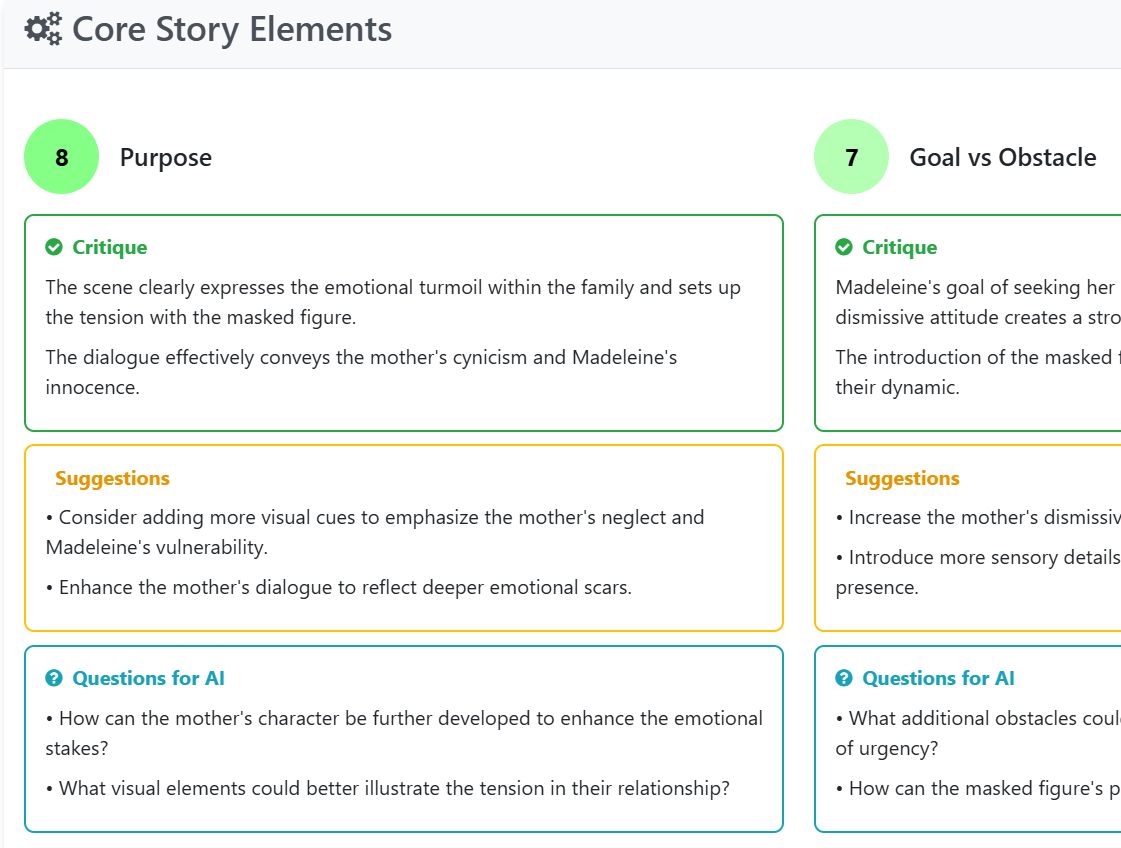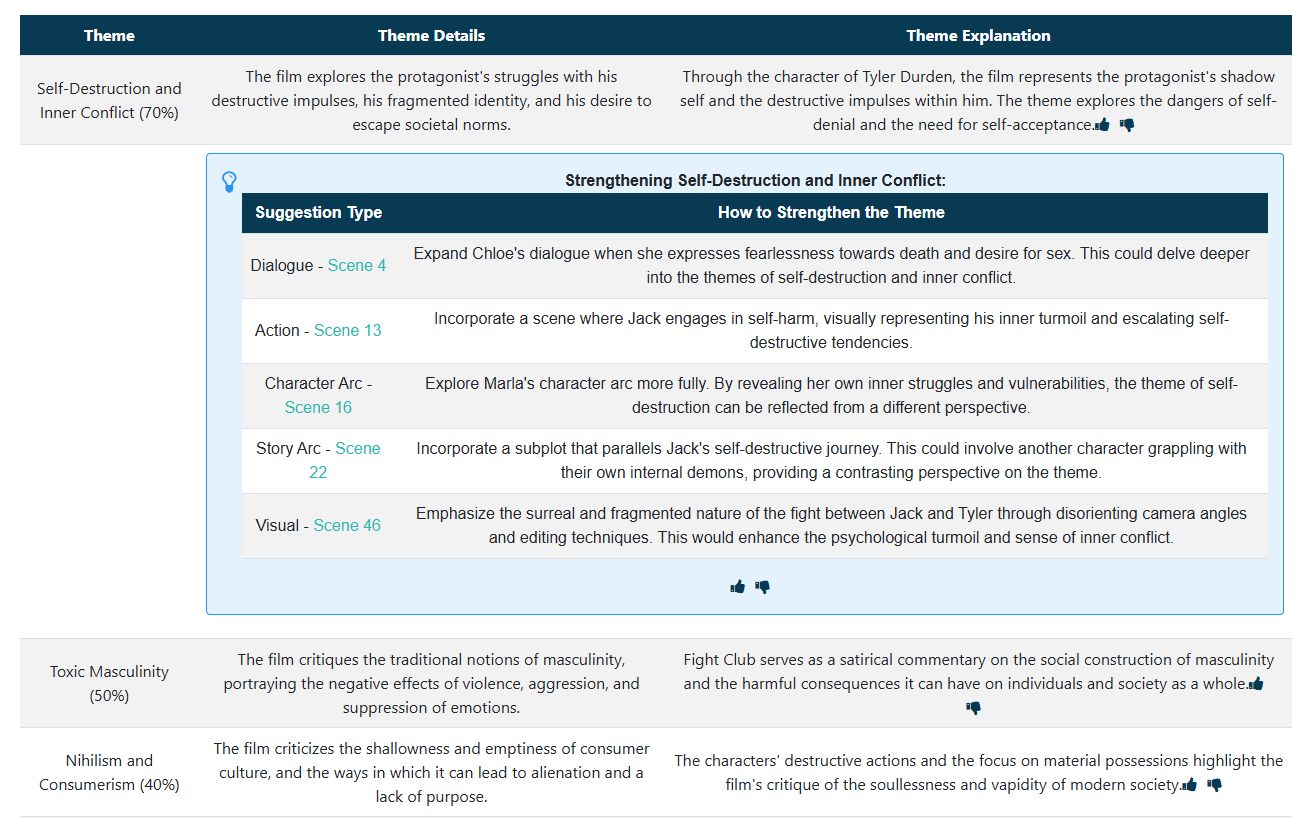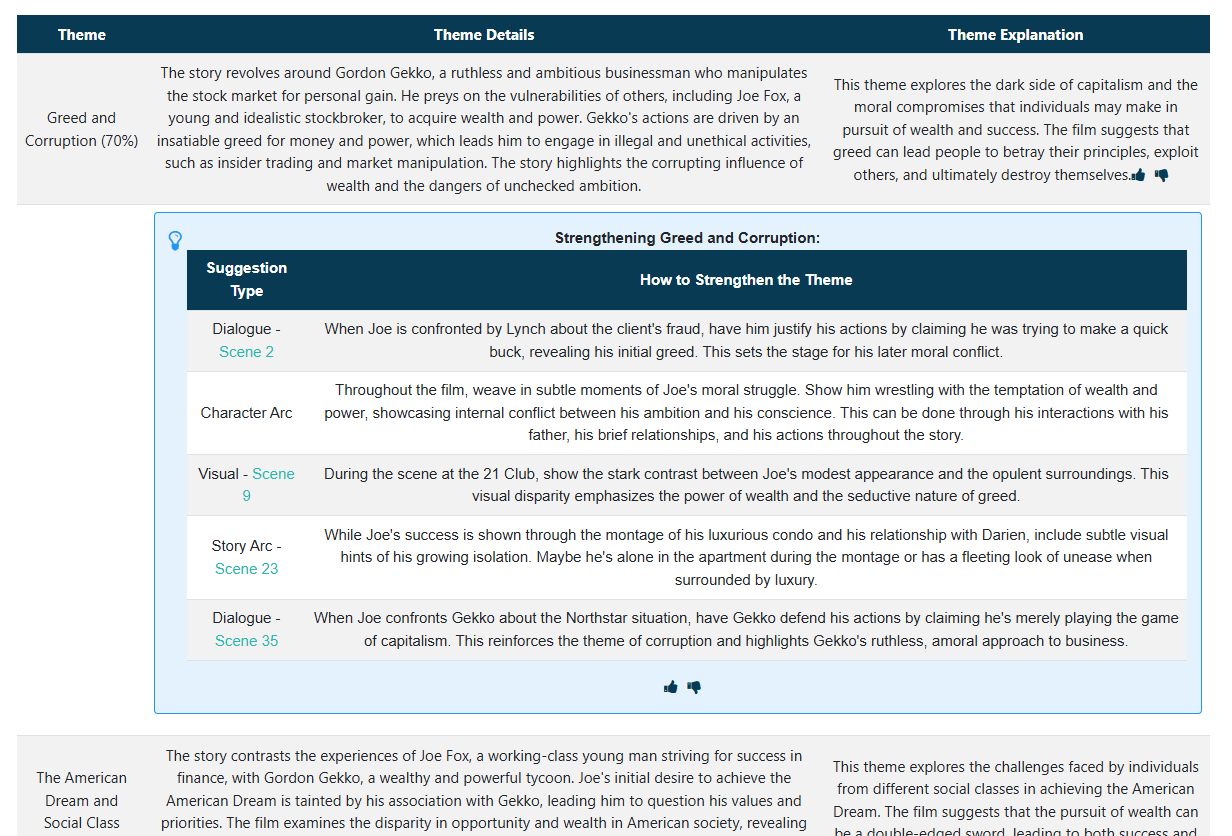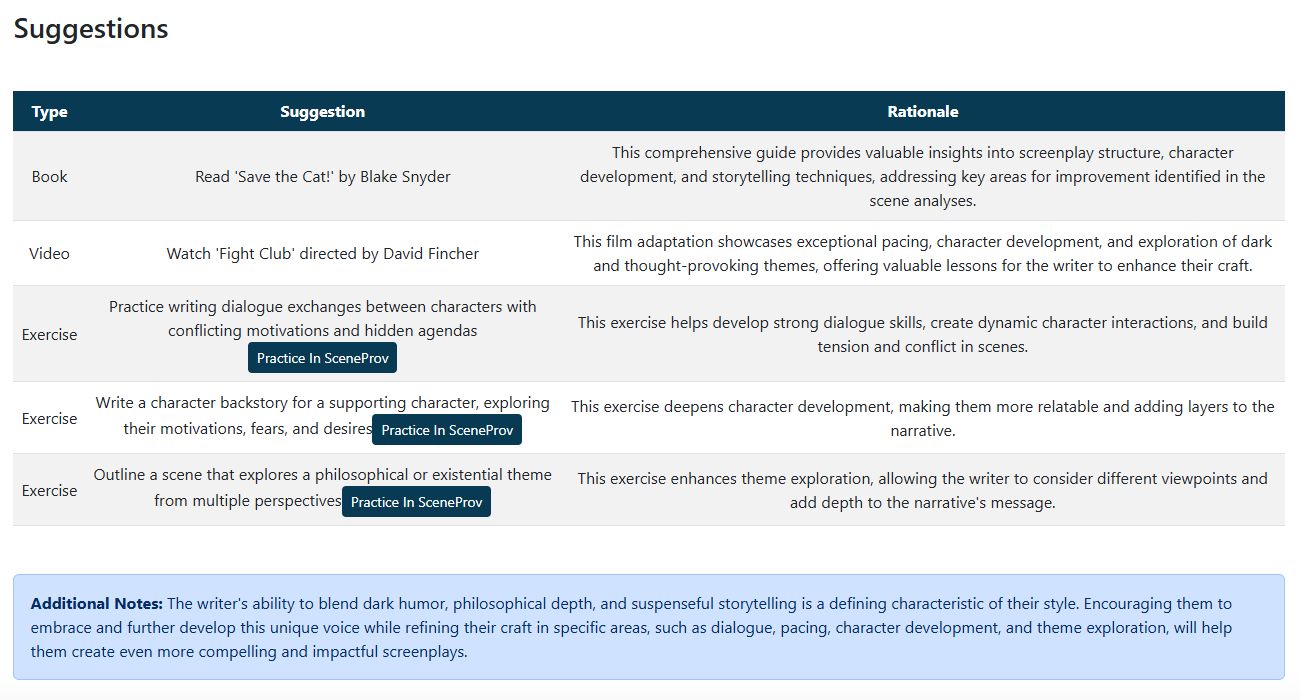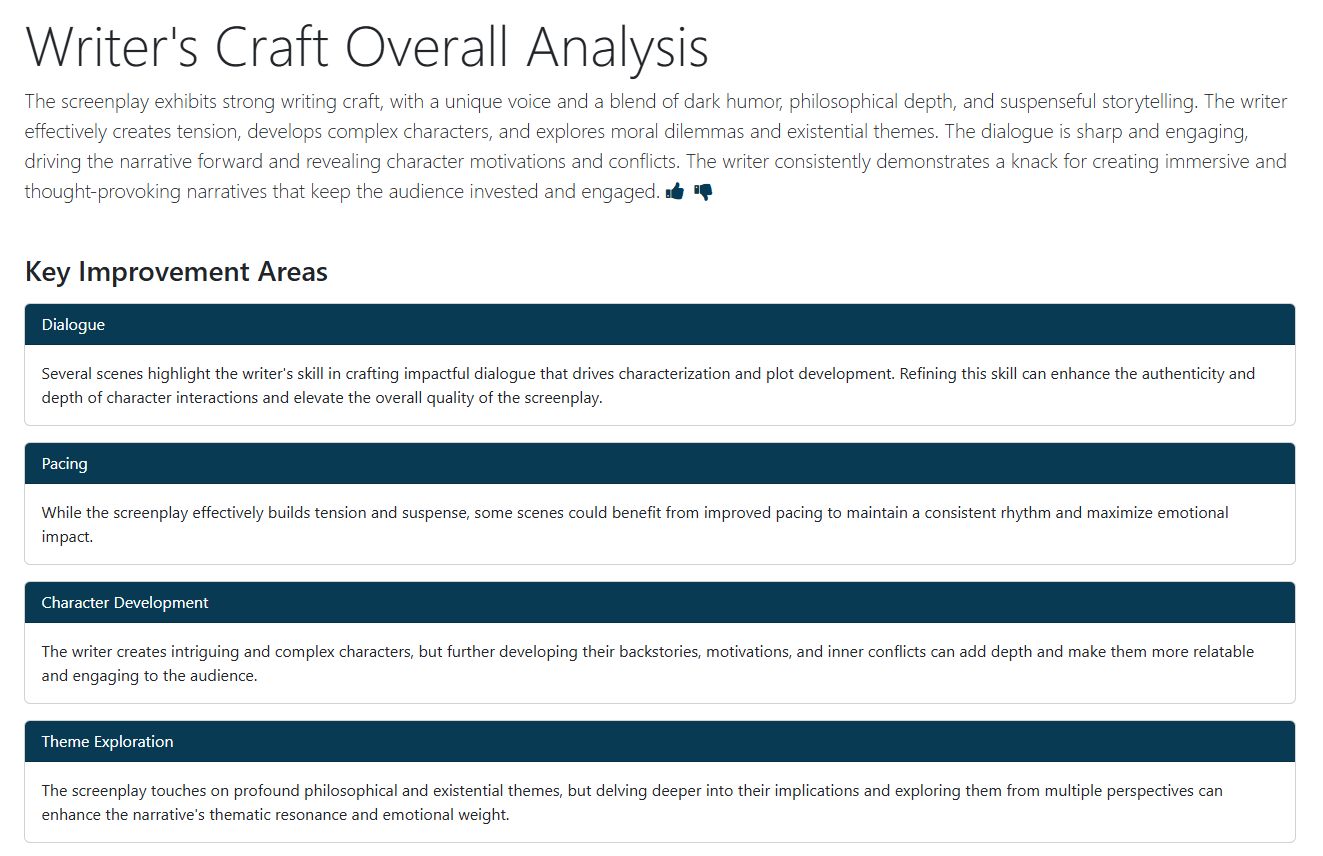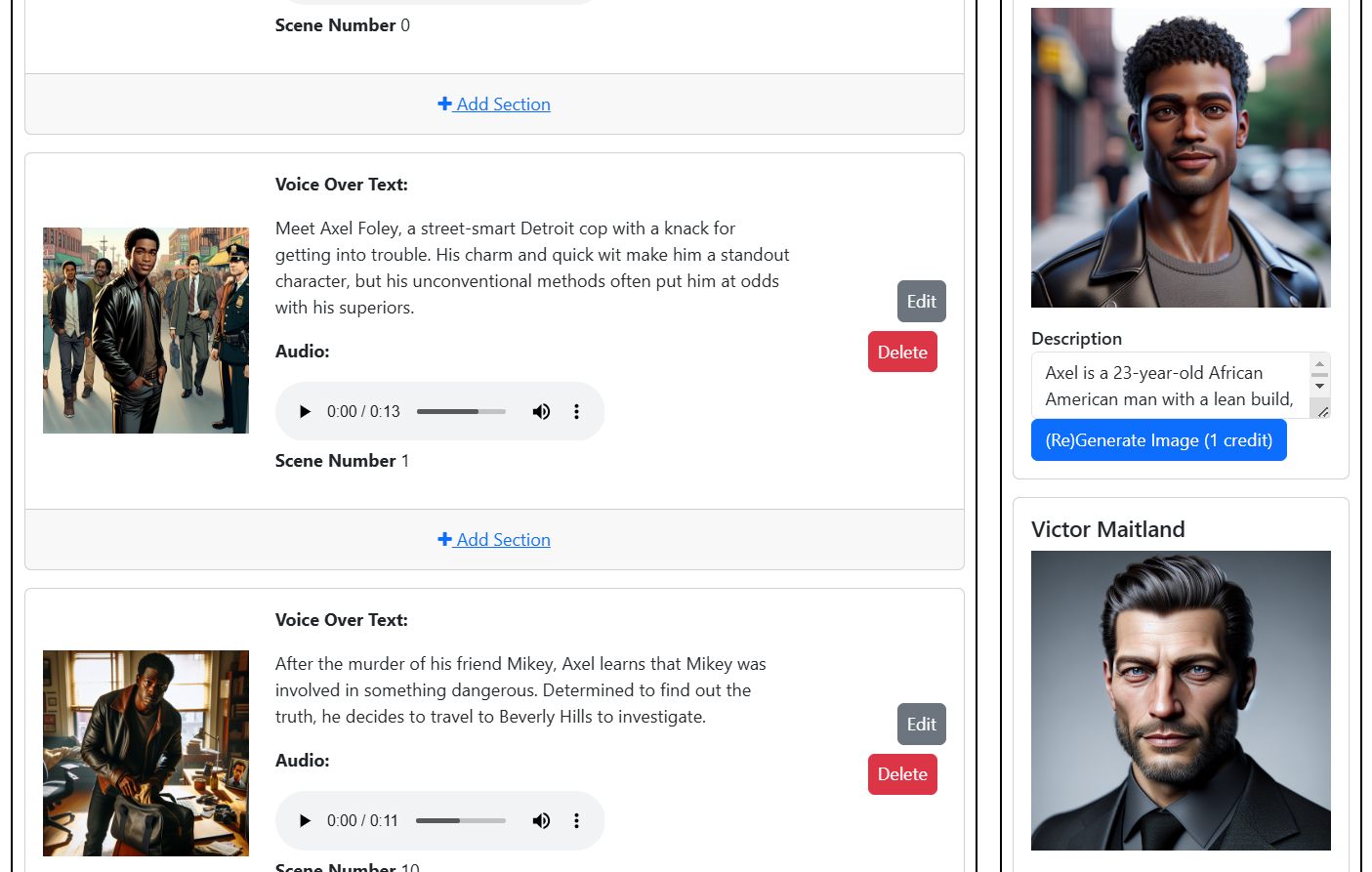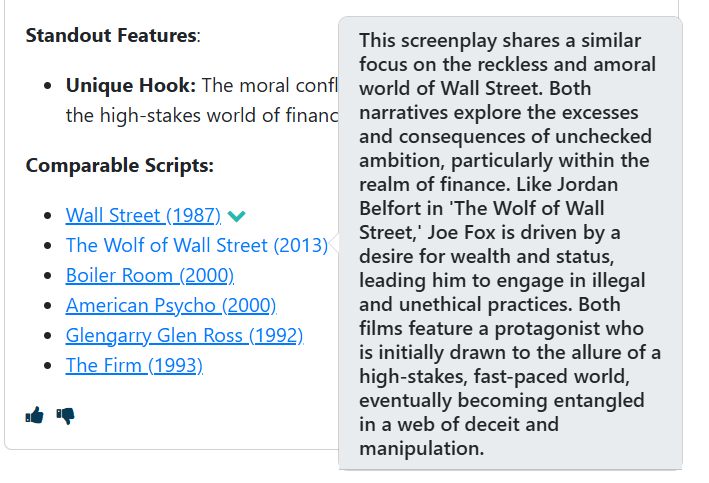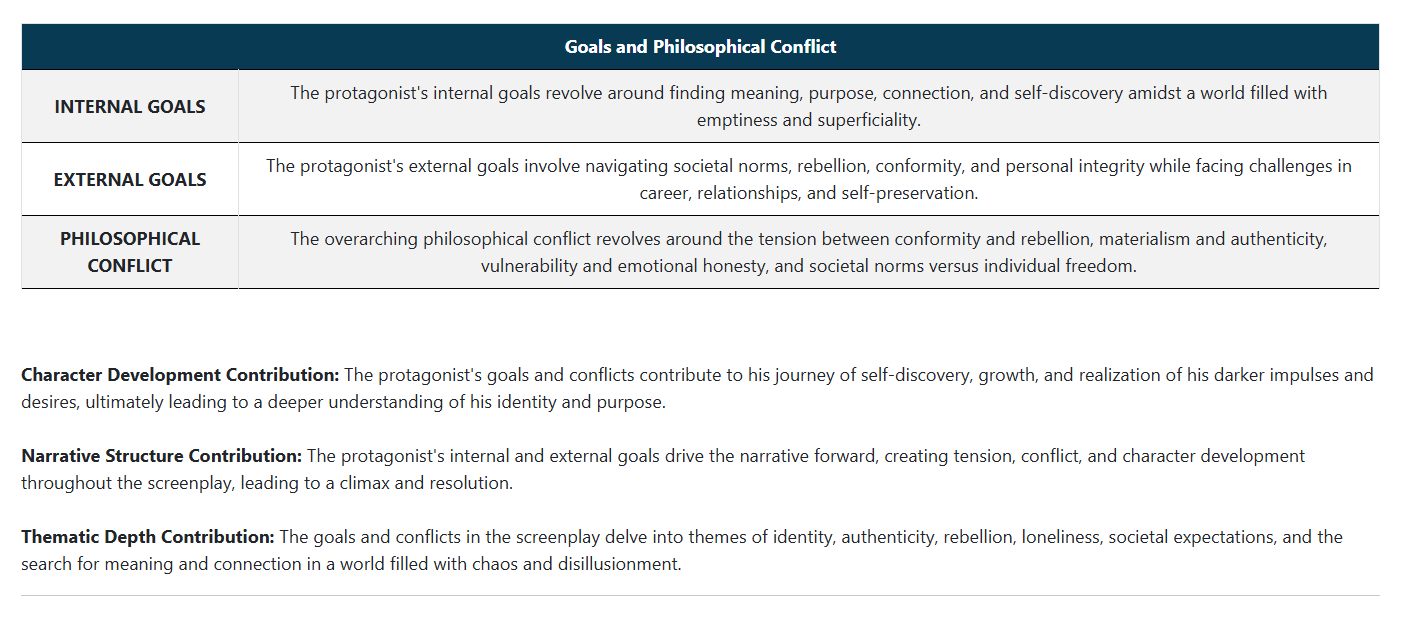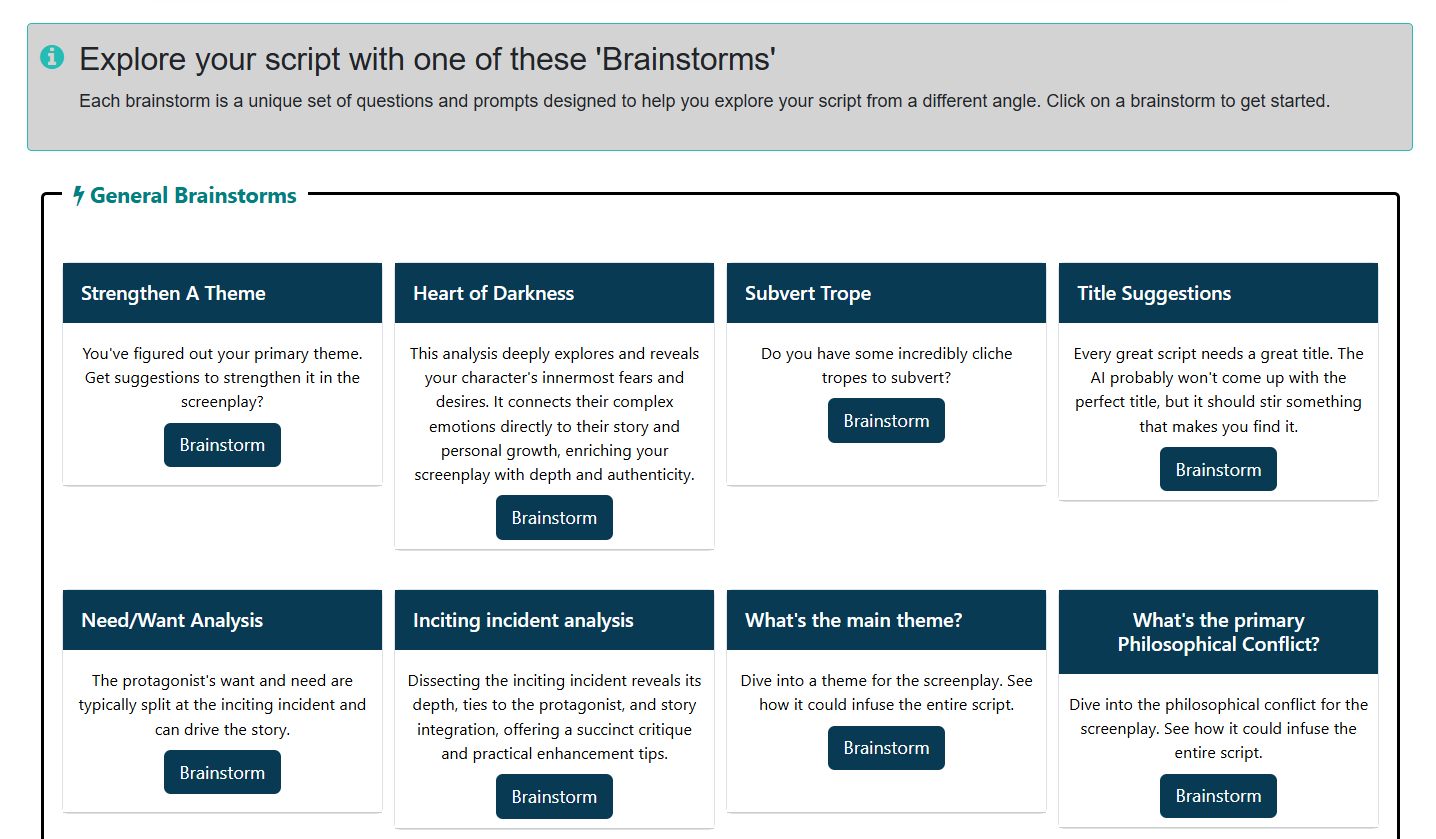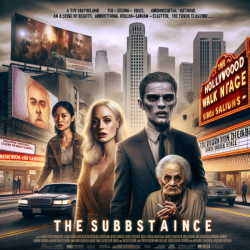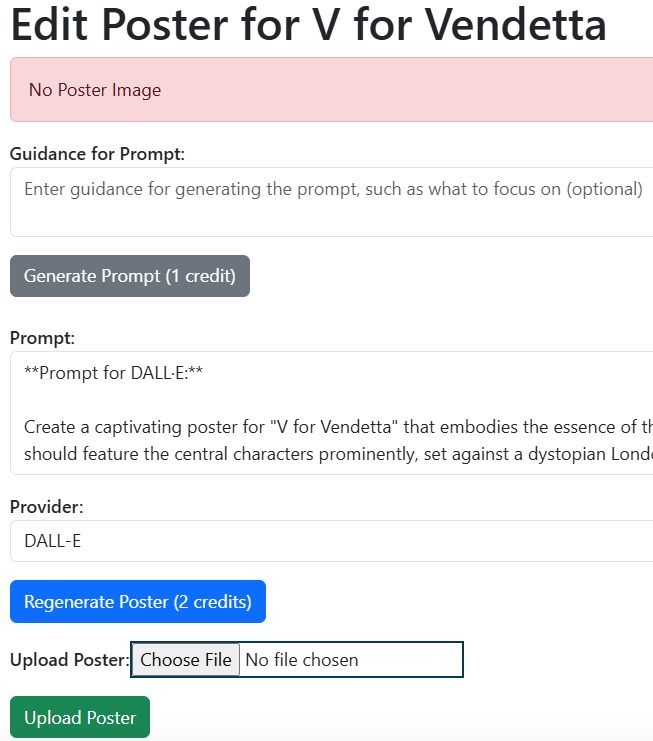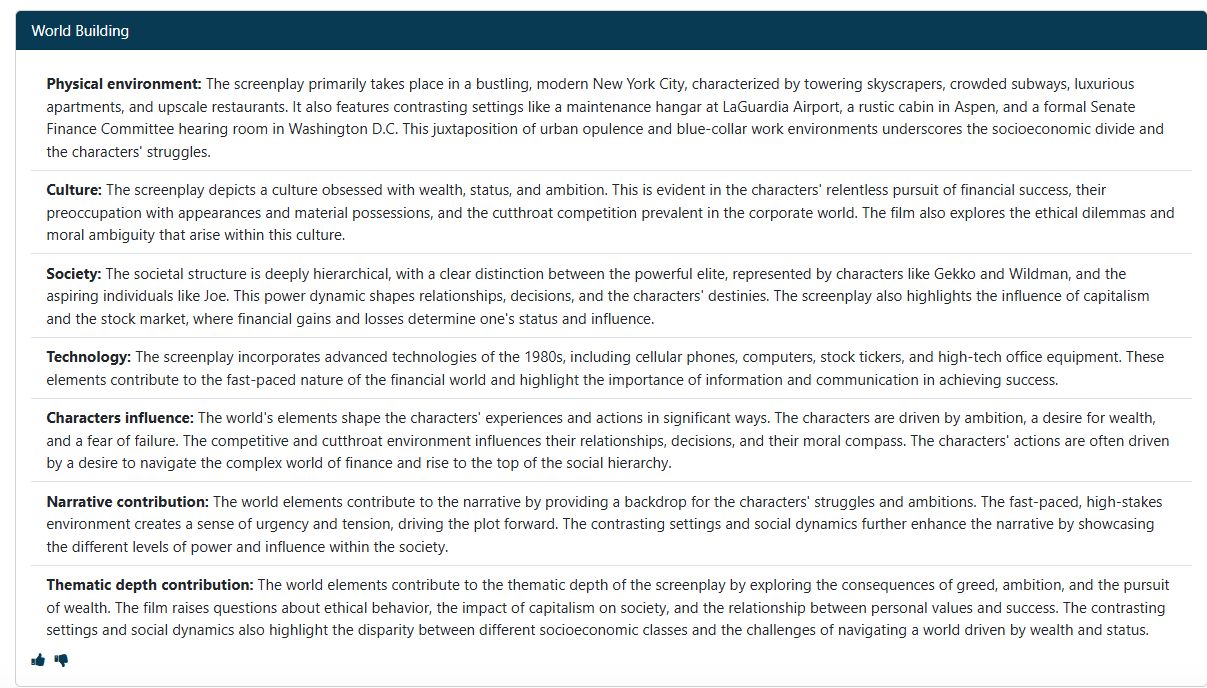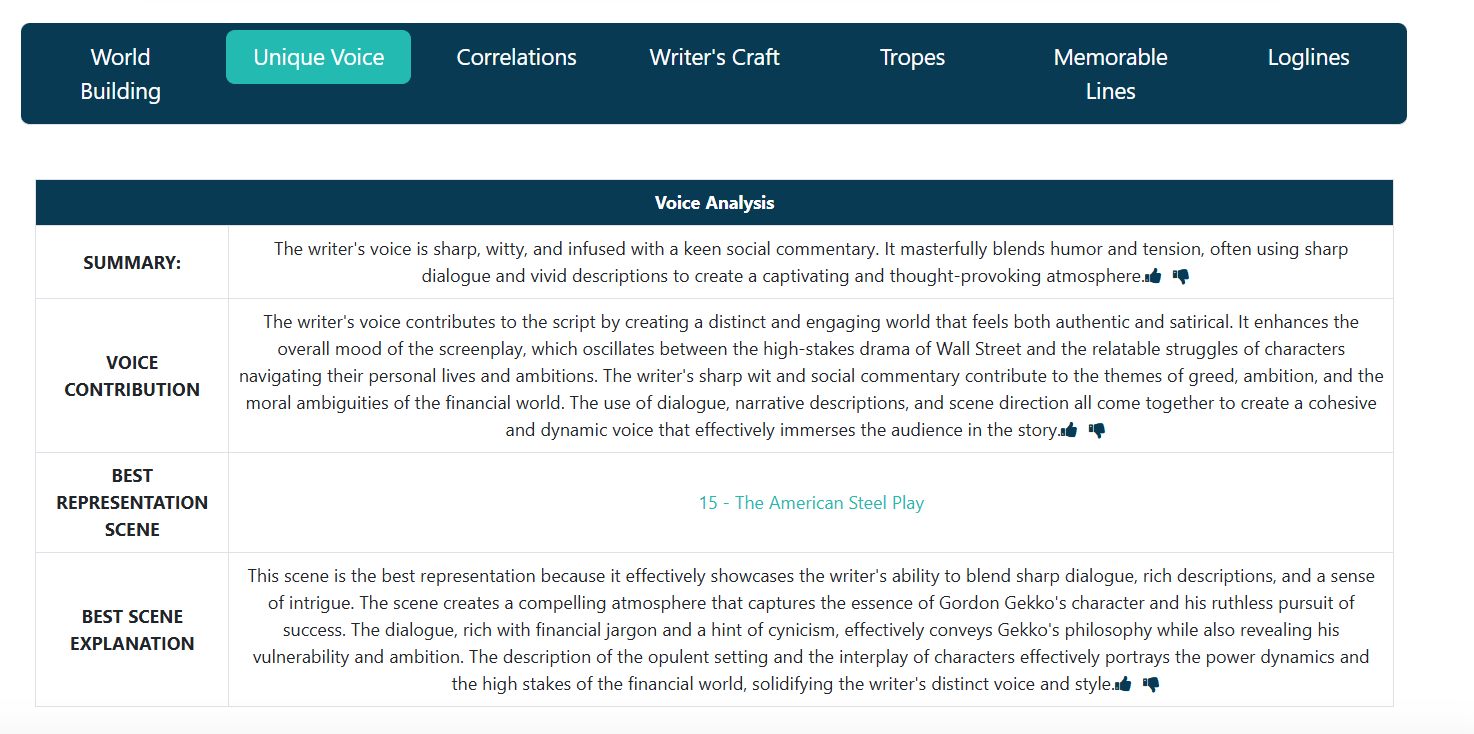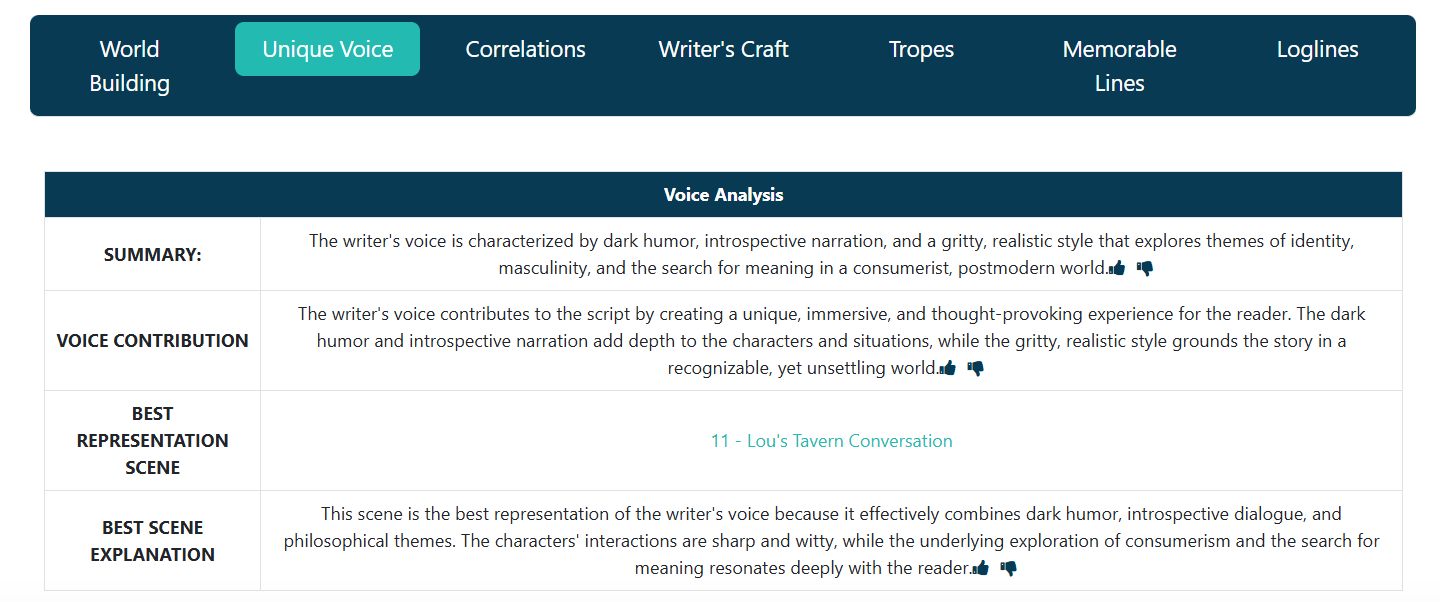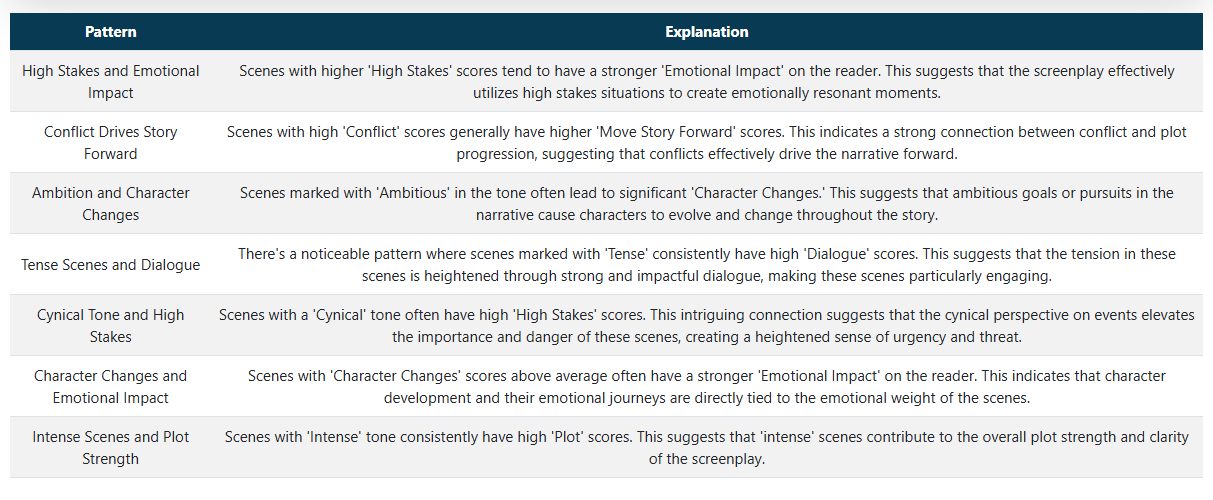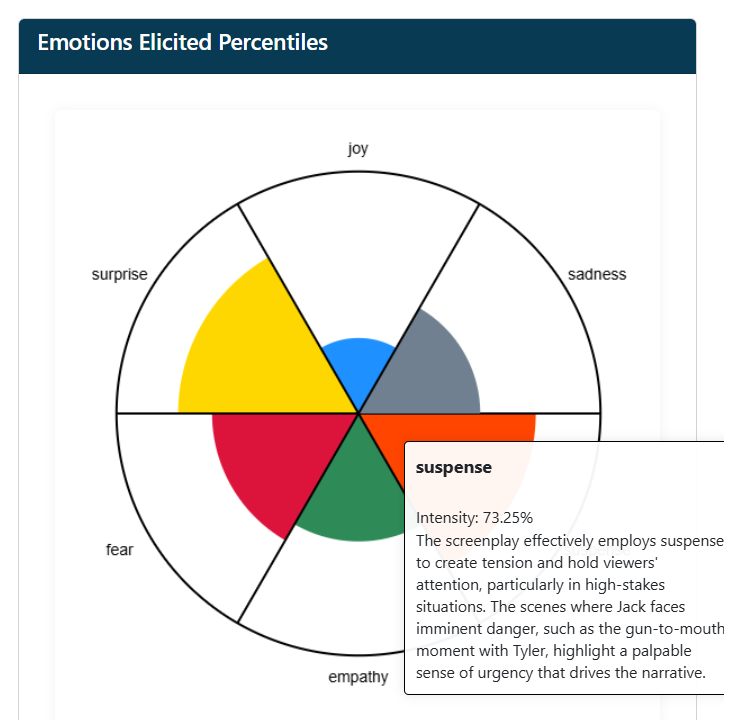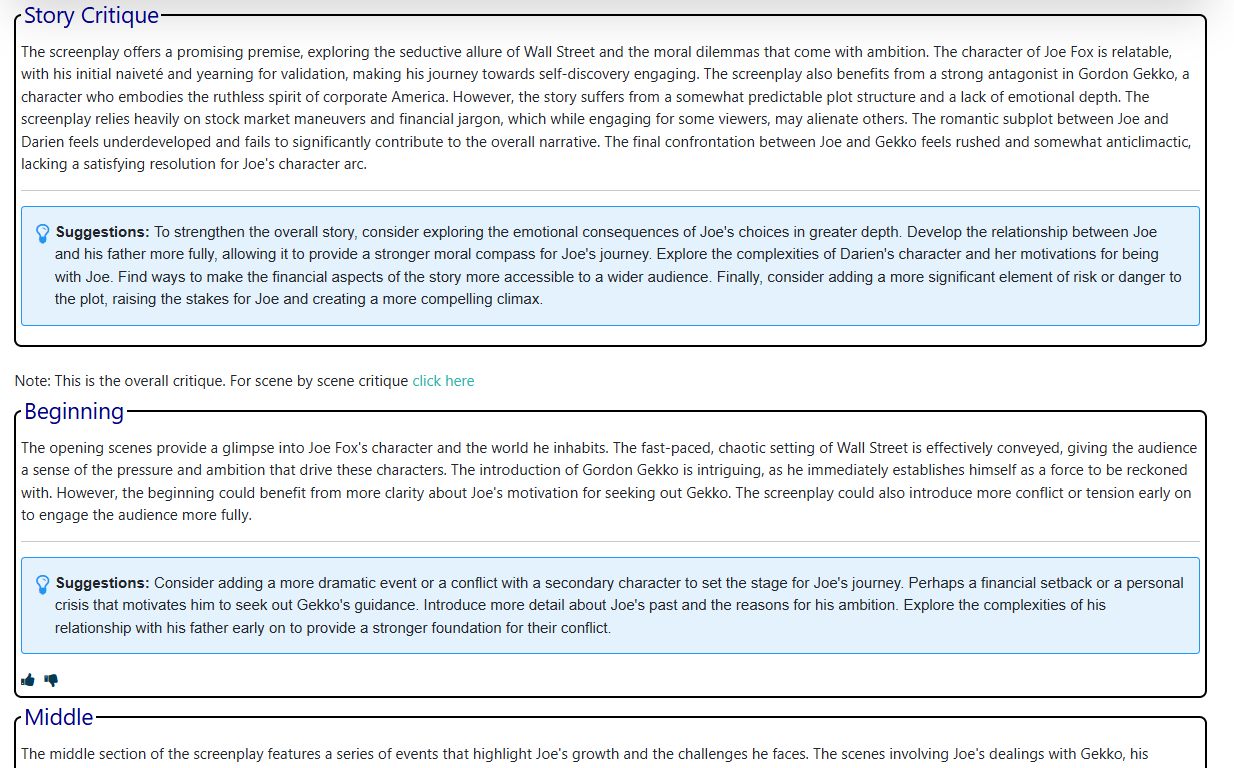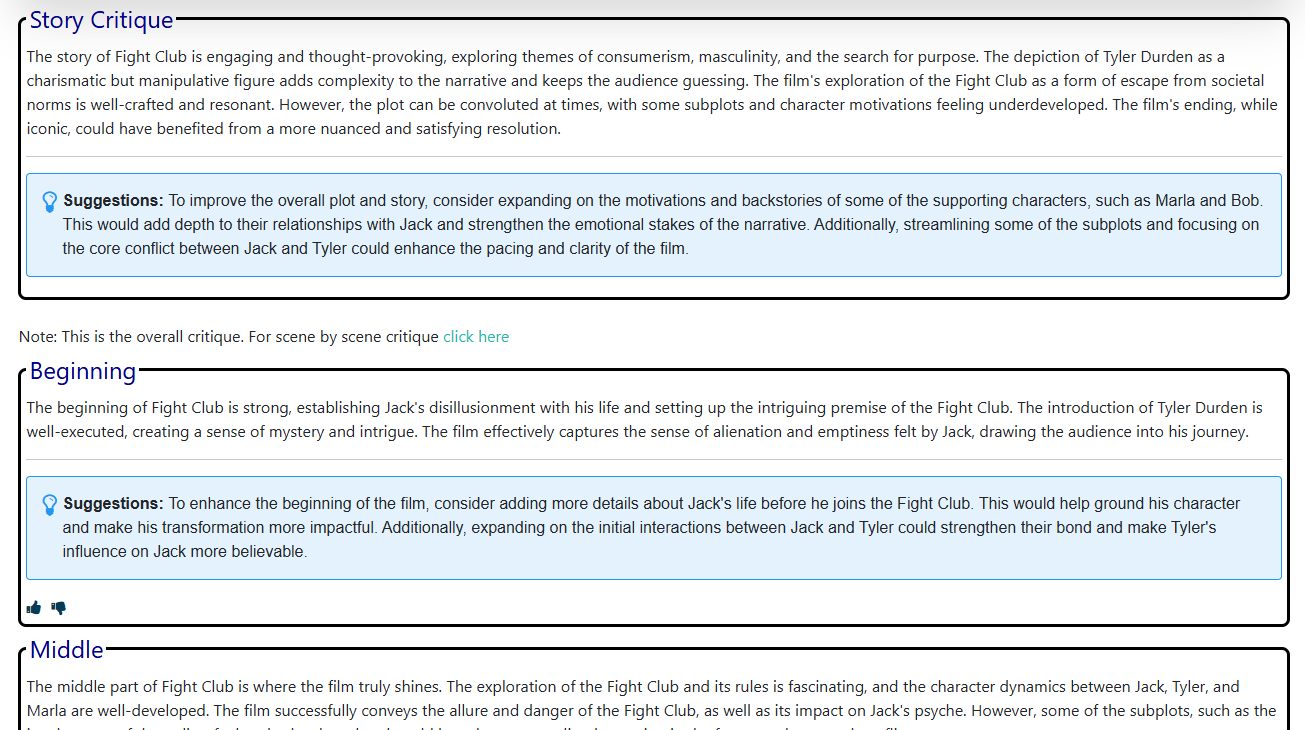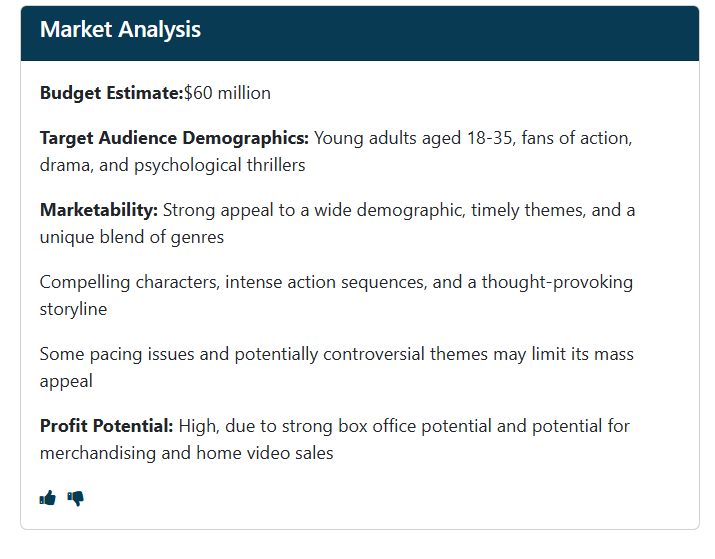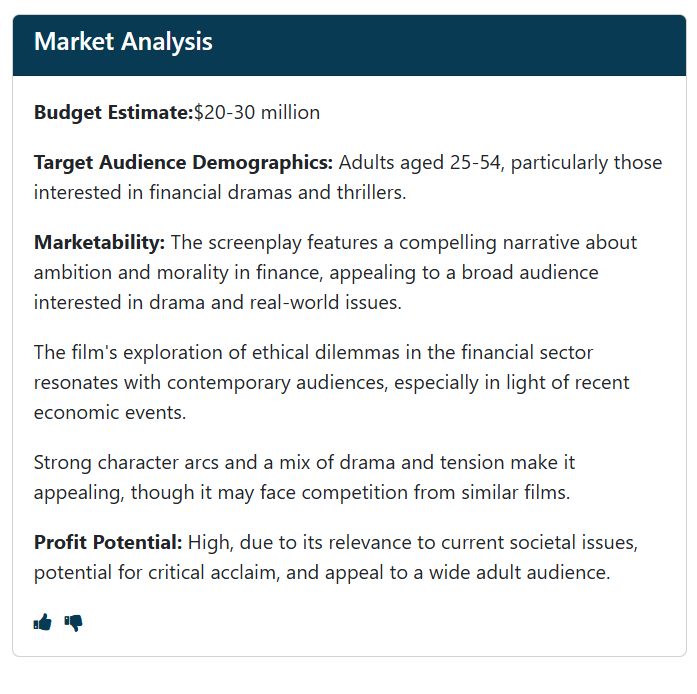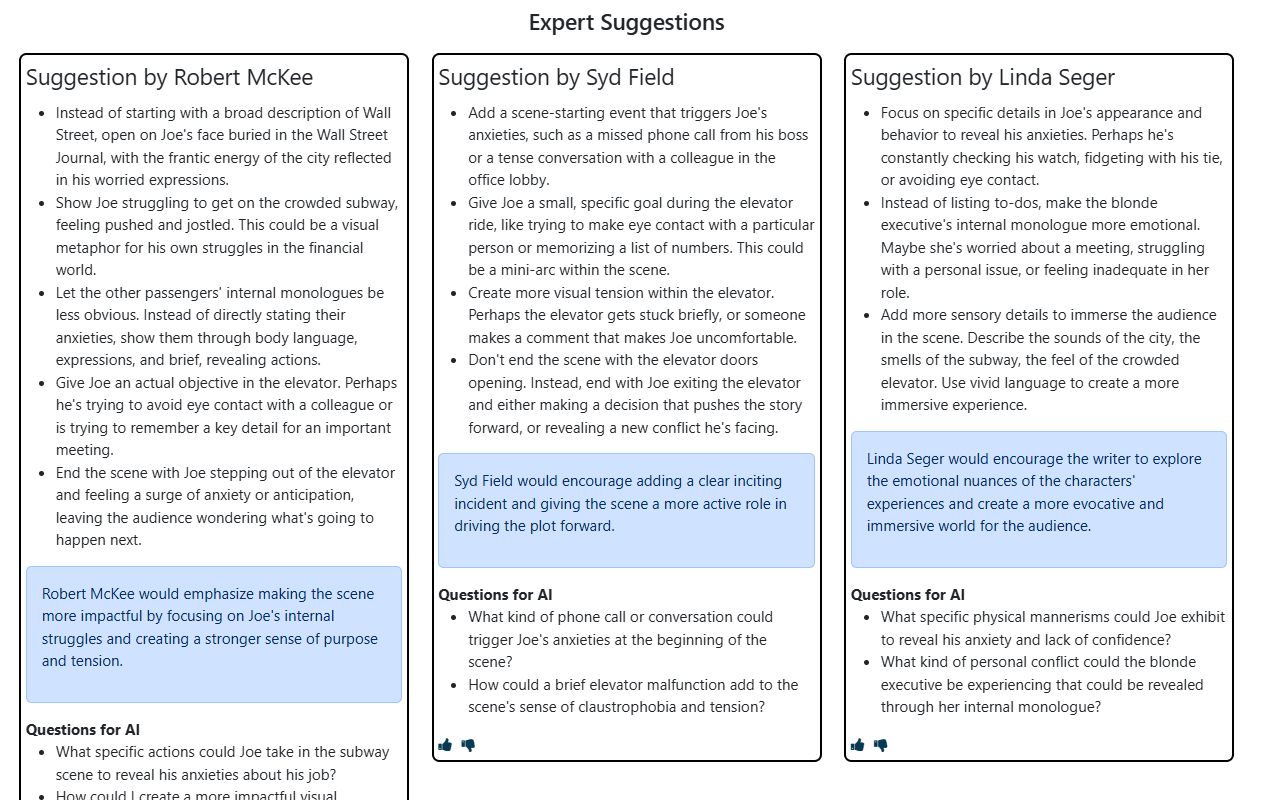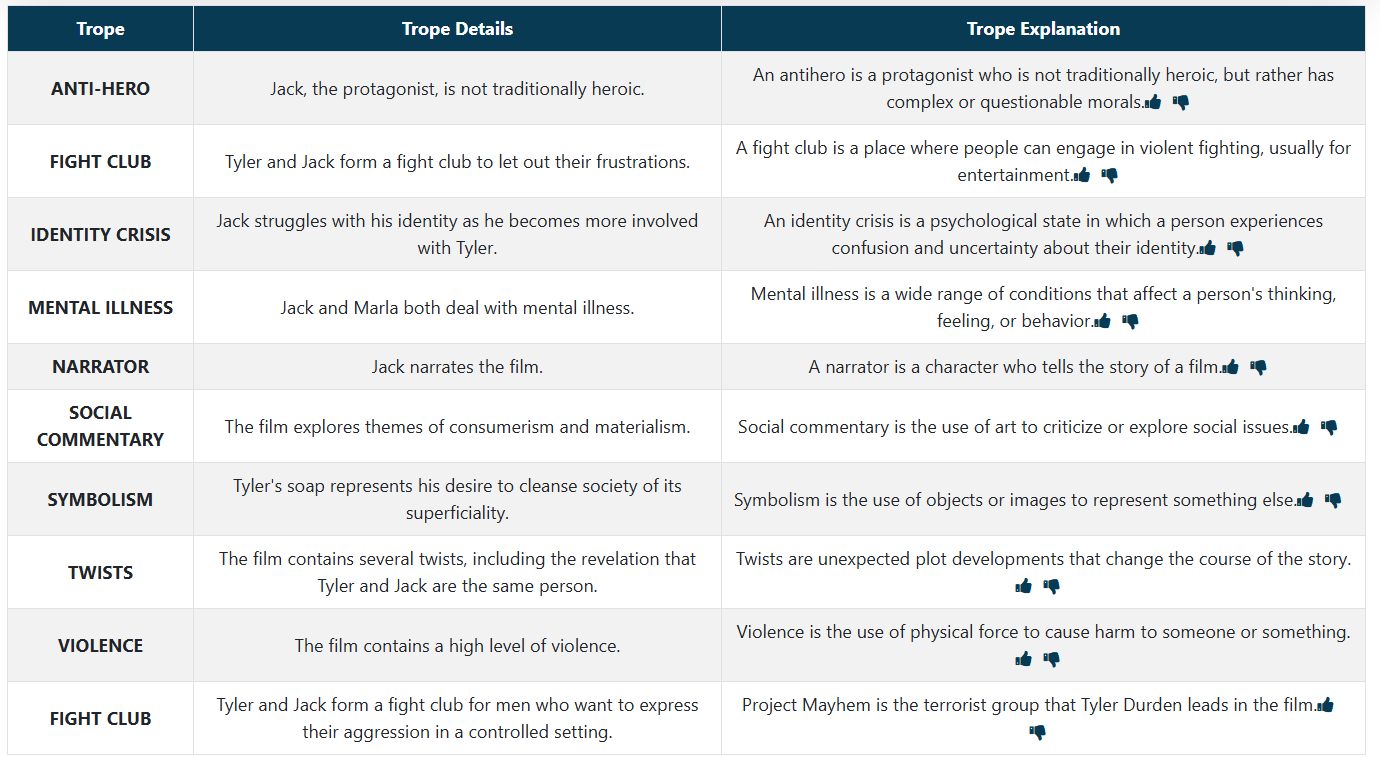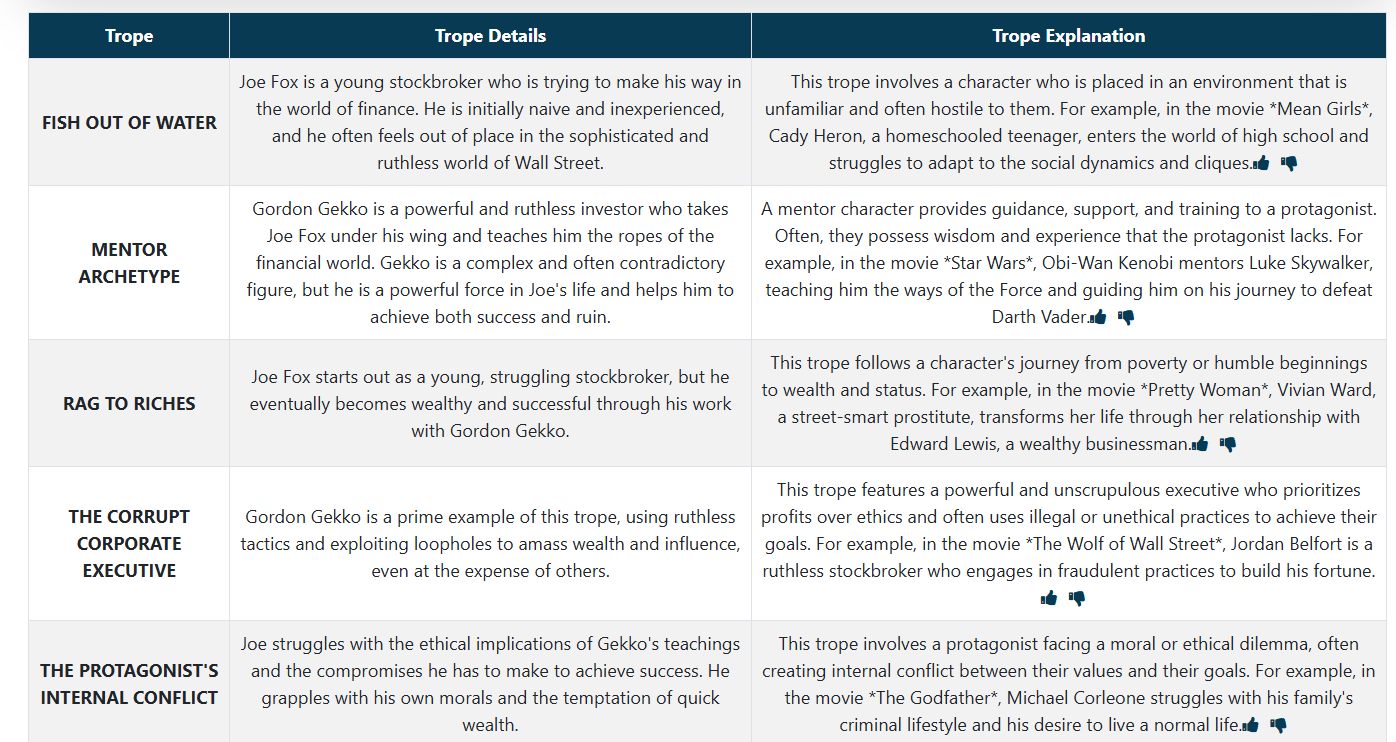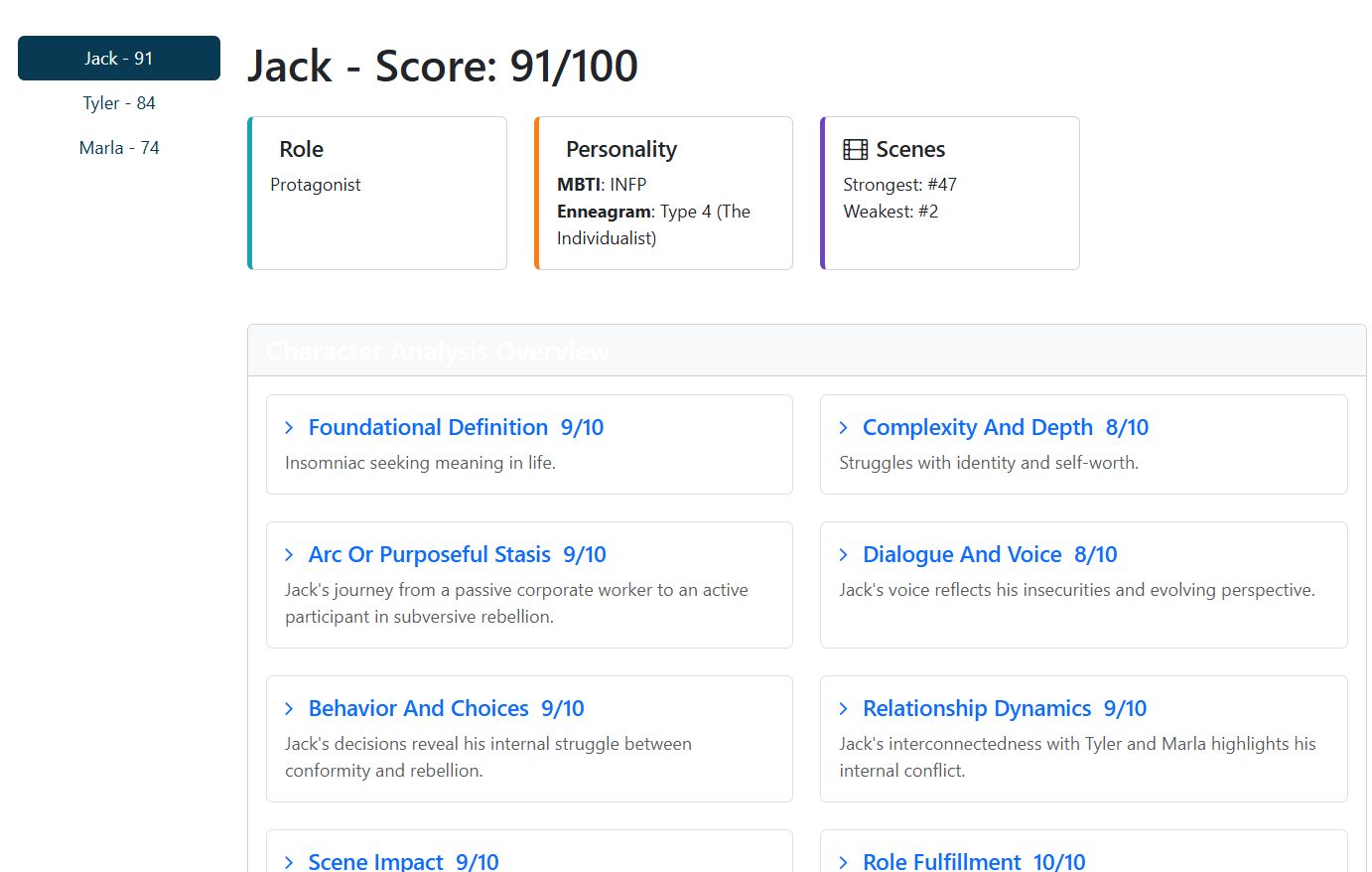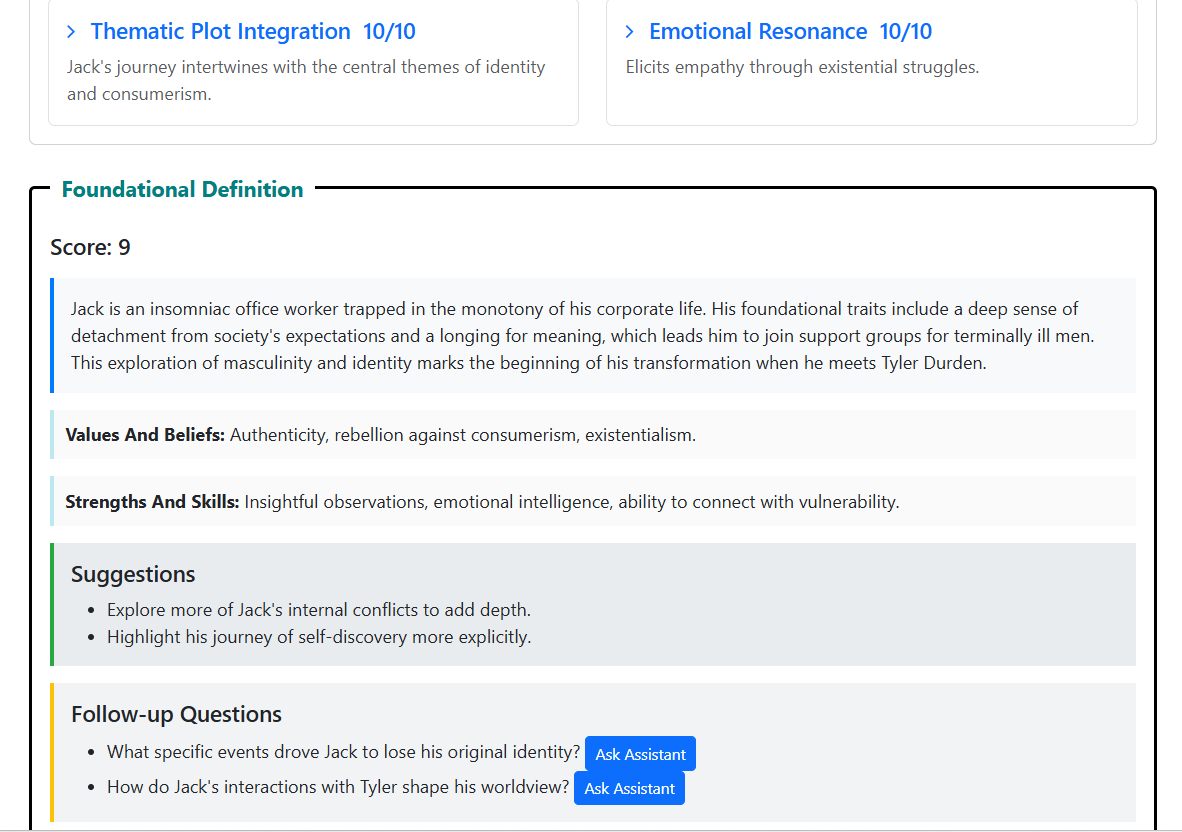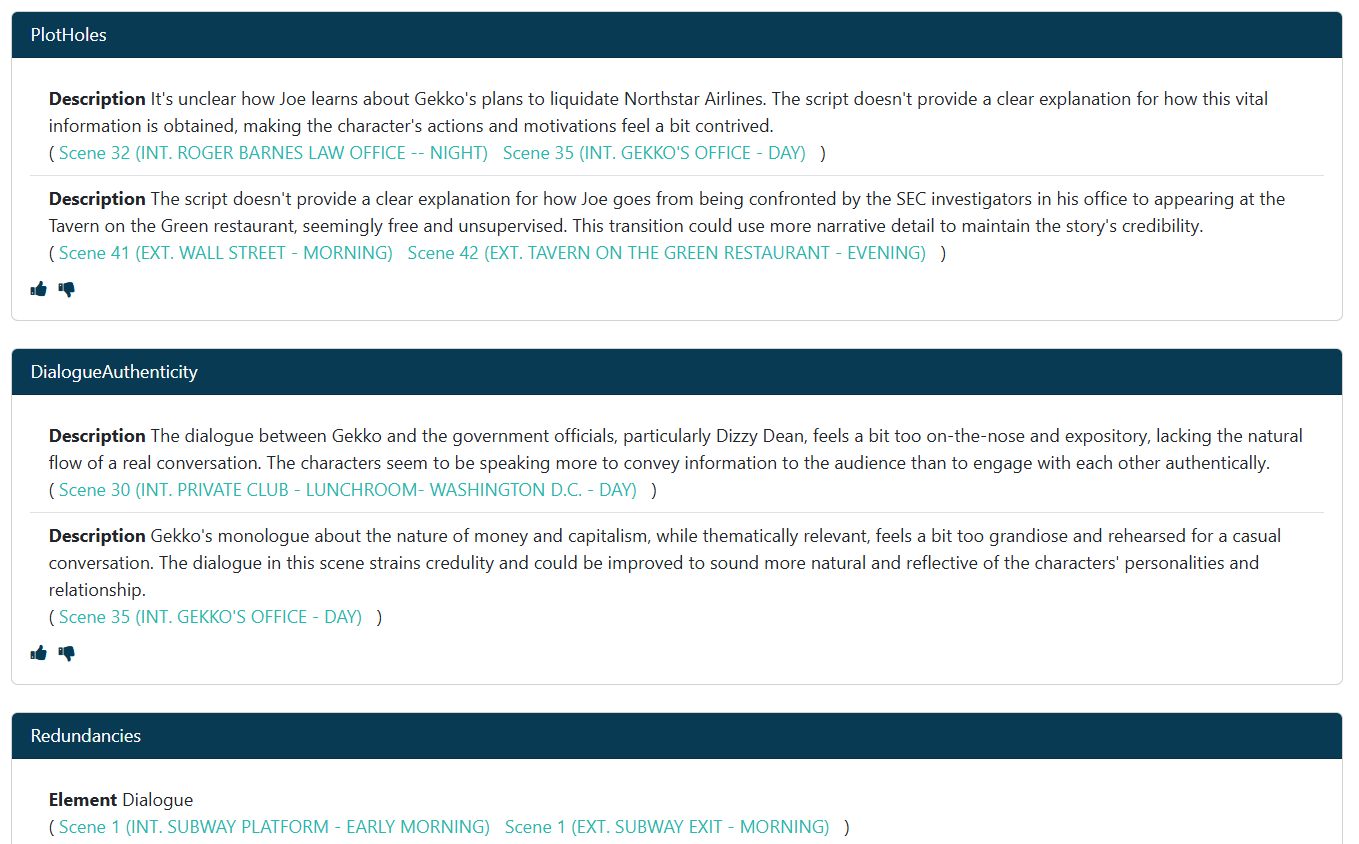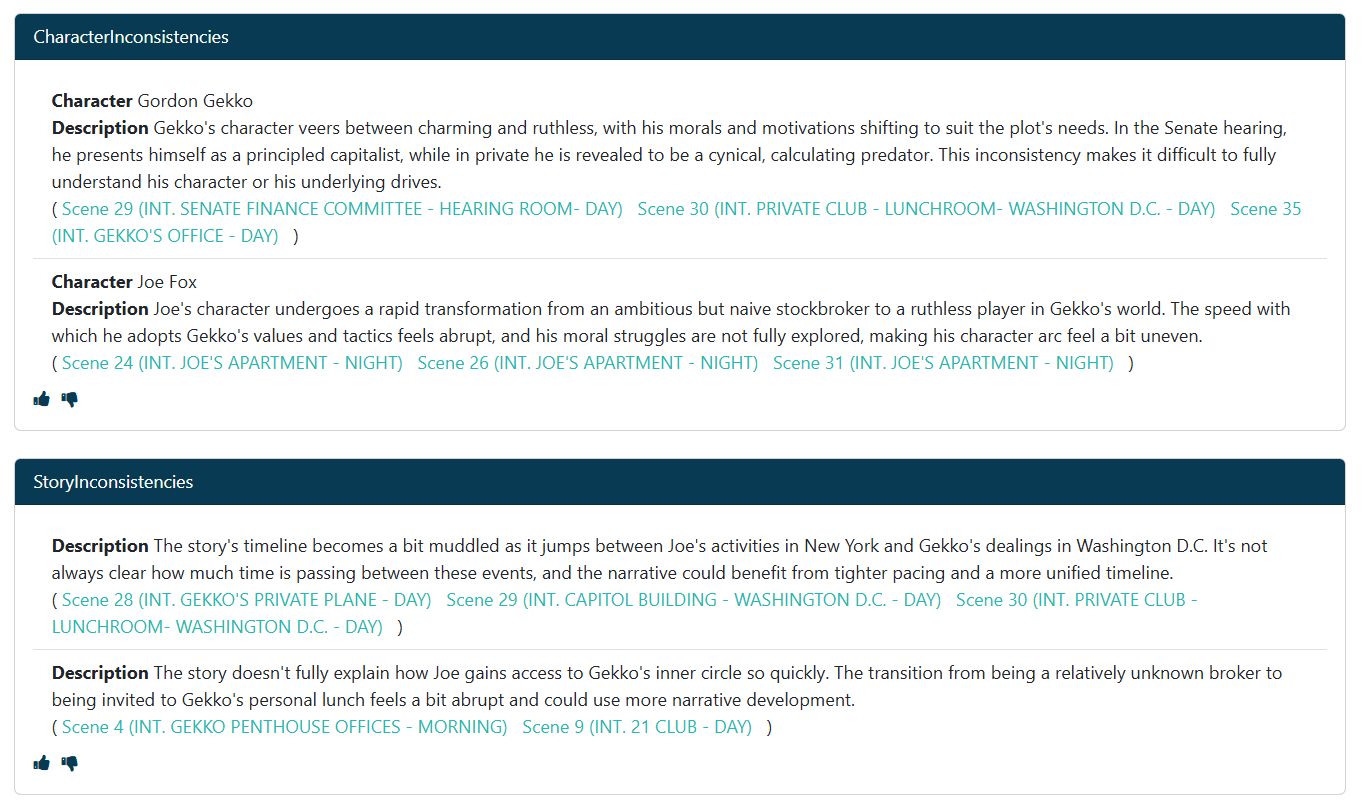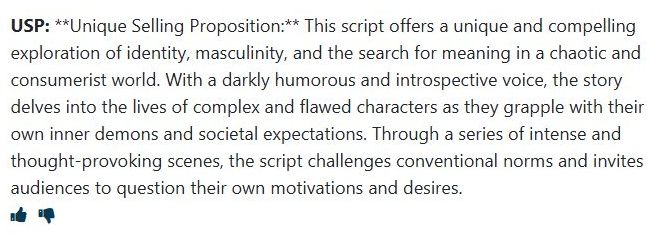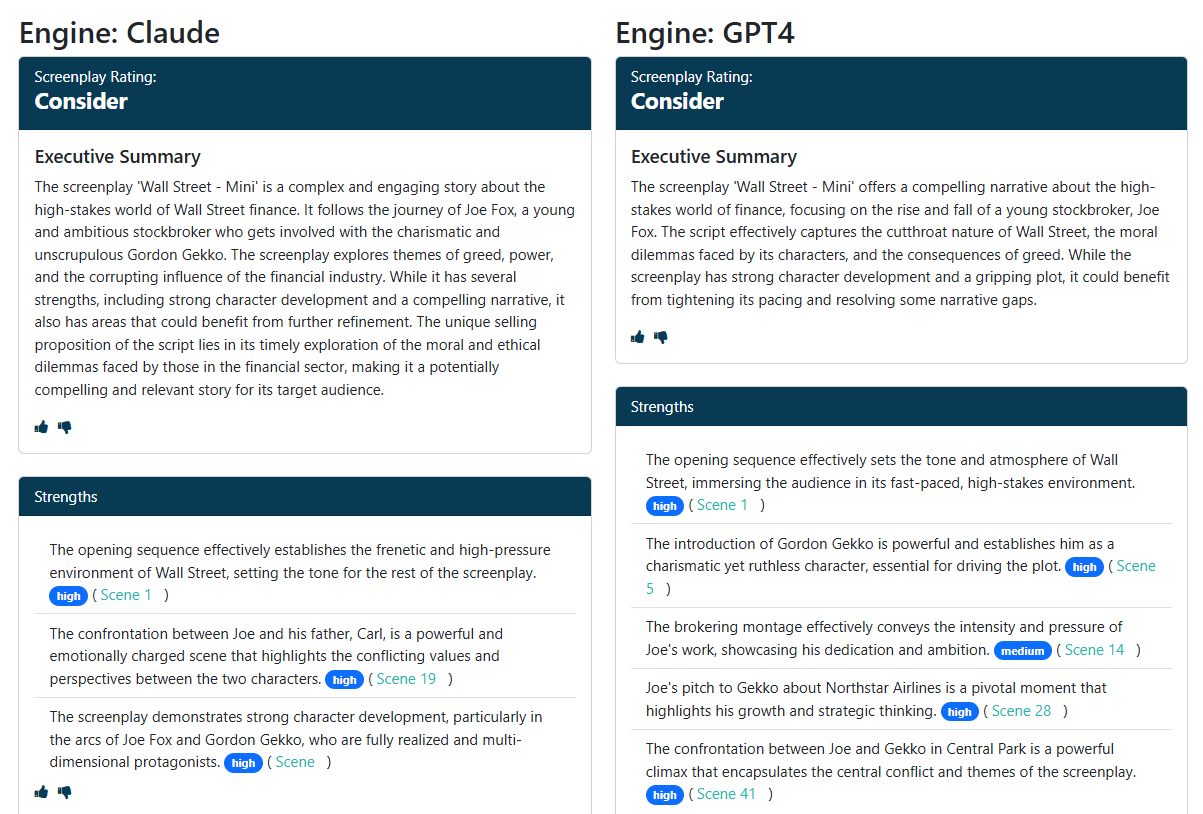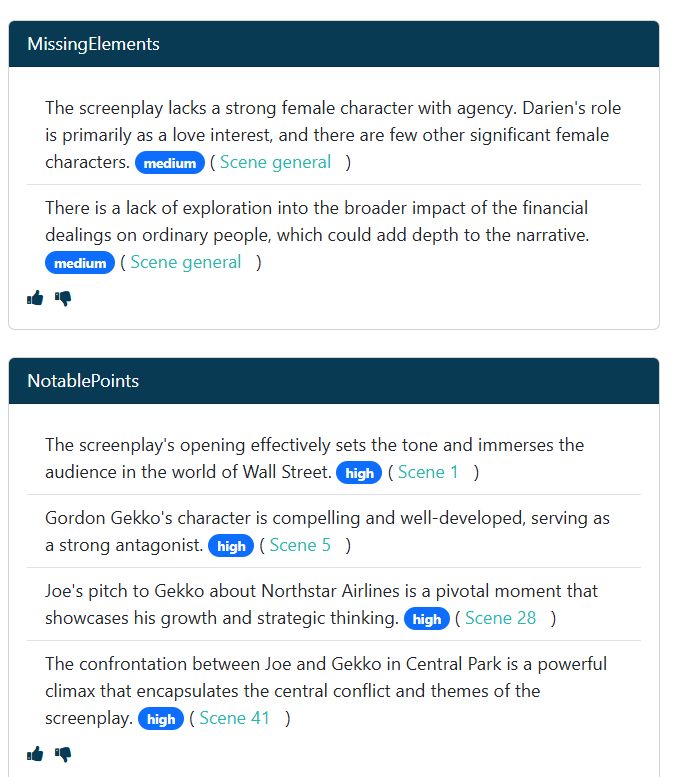View Analysis
View Script
Episode 2 - "Please Remain Calm"
Written by
Craig Mazin
September 21, 2018
Copyright© 2018 Home Box Office, Inc. ALL RIGHTS RESERVED
NO PORTION OF THIS SCRIPT MAY BE PERFORMED, PUBLISHED,
REPRODUCED, EXHIBITED, SOLD OR DISTRIBUTED BY ANY MEANS, OR
QUOTED OR PUBLISHED IN ANY MEDIUM, INCLUDING ON ANY
WEBSITE, WITHOUT PRIOR WRITTEN CONSENT OF HOME BOX OFFICE,
INC. THIS MATERIAL IS THE PROPERTY OF HOME BOX OFFICE, INC.
AND IS INTENDED FOR AND RESTRICTED TO USE BY HOME BOX
OFFICE, INC. ONLY. DISTRIBUTION OR DISCLOSURE OF THIS
MATERIAL TO UNAUTHORIZED PERSONS IS PROHIBITED.
201 OVER BLACK 201
Stodgy classical music, played through a tinny radio
speaker. Over it, a voice begins to recite poetry:
VOICE (ON RADIO)
You know I believe that the Russia
we fight for / is not the dull town
where I lived at a loss /
202 EXT. BYELORUSIAN INST. FOR NUCLEAR ENERGY - MORNING 202
We PAN across an empty parking lot until we find a single
car, a Lada Riva-- there all by itself in front of a drab,
generic Soviet building on the outskirts of a city.
VOICE (ON RADIO)
But those country tracks our ancestors
followed / the graves where they lie
with the old Russian cross /
TITLE:
8:30 A.M., APRIL 26
7 HOURS AFTER THE EXPLOSION
Tone: Reflective, Melancholic, Contemplative
Ratings
Scene Objective: To introduce the setting and atmosphere of the Chernobyl disaster's aftermath, highlighting the isolation and impending danger.
Setting: Byelorussian Institute for Nuclear Energy, morning
POV: The audience observes through a detached lens, focusing on the environment and the implications of the disaster.
Emotional Arc: − calm → + tension
Score Overview
| Group | Category | Score |
|---|---|---|
| Overall | Overall Score | 7.3 |
| Core Elements | Purpose |
8
|
| Goal vs Obstacle |
6
|
|
| Stakes |
5
|
|
| Progression |
7
|
|
| Turn Potency |
6
|
|
| Supporting | Exposition |
7
|
| Subtext |
8
|
|
| Setups & Payoffs |
5
|
|
| Beat Clarity |
7
|
|
| Quality | Scene Necessity |
9
|
| Thematic Resonance |
8
|
Core Story Elements
Purpose
Critique
Suggestions
Questions for AI
Goal vs Obstacle
Critique
Suggestions
Questions for AI
Stakes
Critique
Suggestions
Questions for AI
Progression
Critique
Suggestions
Questions for AI
Turn Potency
Critique
Suggestions
Questions for AI
Supporting Elements
Exposition
Critique
Suggestions
Questions for AI
Subtext
Critique
Suggestions
Questions for AI
Setups & Payoffs
Critique
Suggestions
Questions for AI
Beat Clarity
Critique
Suggestions
Questions for AI
Scene Transitions
Next Scene
Hook Out: The scene ends with a sense of foreboding, leading into the chaos of the laboratory.
Energy UPSuggestions
Questions for AI
Scene Necessity
MUST HAVE
This scene is essential for establishing the tone and context of the disaster, setting the stage for the unfolding narrative.
Suggestions
Questions for AI
Enhancement Tags
Character Delta: The protagonist's internal conflict is not yet established but will evolve as the disaster unfolds.
Improvement Recommendations
The #1 Rule of Screenwriting: Make your reader or audience compelled to keep reading.
“Grab ‘em by the throat and never let ‘em go.”
The scene level score is the impact on the reader or audience to continue reading.
The Script score is how compelled they are to keep reading based on the rest of the script so far.
The scene does a good job of setting a mysterious tone. The use of classical music and poetry over the black screen is intriguing. The pan across the empty parking lot to the solitary Lada Riva creates a sense of isolation and something significant about to happen. Presenting the time "7 HOURS AFTER THE EXPLOSION" immediately injects intrigue - where is this building and what is its significance to the event?
The script has established a mysterious opening scene that piques the reader's interest. The lack of immediate context regarding the explosion at Chernobyl creates curiosity and compels the reader to find out how this location and its occupants are connected to the events.
Expert Critiques
Expert Suggestions
View Analysis
View Script
A large room with multiple lab desks, sinks, cabinets and
racks of scientific equipment, periodic table charts on the
walls, labels with the familiar RADIATION sign...
VOICE (ON RADIO)
I feel that for me, it was countryside
Russia / that first made me feel I
must truly belong / to the tedious
miles between village and village /
the tears of the widow, the women's
sad song /
The room is empty but for: A WOMAN, 40's - FACE DOWN at a
table, her salt-and-pepper hair splayed around her head.
Next to her, a stack of technical documents. Coffee cup.
Half-eaten sandwich. Soviet poetry droning from a RADIO.
We PUSH IN on her. She might be dead.
VOICE (ON RADIO)
We see alongside us the deaths of
our comrades / by old Russian
practice, soldiers laid end to end /
We stay on the woman. Hear the SOUND of the lab door opening.
VOICE (ON RADIO)
And yet I still feel proud of the
dearest of countries / The great
bitter land I was born to defend.
Someone enters. Drops a small paper bag next to her HEAD.
VOICE (ON RADIO)
That was Konstantin Simonov's poem
"to Alexei Surkov," written in--
CLICK. The unseen person turns the radio off, and ULANA
KHOMYUK, the sleeping woman, raises her head.
KHOMYUK
(disoriented)
Whumm?
DMITRI, 30, puts a THERMOS in front of her.
DMITRI
You work too hard.
Khomyuk rubs her face. Checks her watch. Then looks around.
KHOMYUK
Where is everyone?
DMITRI
They refused to come in.
KHOMYUK
Why?
DMITRI
It's Saturday.
Oh. Right. Then:
KHOMYUK
Why did you come in?
DMITRI
I work too hard.
(wipes his brow)
Uch, it's boiling in here.
He crosses to a WINDOW. He LIFTS the window OPEN, and
almost instantly:
BEEEEEEEEEEEEEE
Dmitri and Khomyuk turn in adrenaline shock to: a DOSIMETER
mounted on the wall. A split second, then:
Dmitri SLAMS the window shut. Then rushes to the dosimeter.
Presses a button to silence the alarm. Reads the meter.
DMITRI
Eight milliroentgen. What-- ?
Dmitri anxiously glances at a METAL CASE with radiation
stickers. Inside, boxes and tubes.
DMITRI
A leak?
Khomyuk hasn't taken her eyes off the window. Wide awake
now.
KHOMYUK
No. It would have gone off before.
It's coming from outside.
Dmitri sits down. Has the unthinkable finally happened?
DMITRI
The Americans?
IN CUTS - Khomyuk opens her drawer, pulls out a PILL
CONTAINER. Takes one pill. Then tosses him the bottle.
Snaps on LATEX GLOVES. Tears open a PACKET. A sterile WET
WIPE sample cloth is removed, folded...
Khomyuk WIPES along the SILL of the WINDOW in an "S"
pattern, pressing firmly, picking up dust, and then we're:
Tone: Tense, Mysterious, Serious
Ratings
Scene Objective: To reveal the initial response of scientists to the radiation leak and set the stage for the unfolding crisis.
Setting: Laboratory, morning.
POV: Ulana Khomyuk's perspective, highlighting her determination and urgency.
Emotional Arc: - confusion → + urgency
Score Overview
| Group | Category | Score |
|---|---|---|
| Overall | Overall Score | 8.1 |
| Core Elements | Purpose |
8
|
| Goal vs Obstacle |
7
|
|
| Stakes |
8
|
|
| Progression |
9
|
|
| Turn Potency |
8
|
|
| Supporting | Exposition |
7
|
| Subtext |
6
|
|
| Setups & Payoffs |
7
|
|
| Beat Clarity |
8
|
|
| Quality | Scene Necessity |
9
|
| Thematic Resonance |
8
|
Core Story Elements
Purpose
Critique
Suggestions
Questions for AI
Goal vs Obstacle
Critique
Suggestions
Questions for AI
Stakes
Critique
Suggestions
Questions for AI
Progression
Critique
Suggestions
Questions for AI
Turn Potency
Critique
Suggestions
Questions for AI
Supporting Elements
Exposition
Critique
Suggestions
Questions for AI
Subtext
Critique
Suggestions
Questions for AI
Setups & Payoffs
Critique
Suggestions
Questions for AI
Beat Clarity
Critique
Suggestions
Questions for AI
Scene Transitions
Previous Scene
Hook In: The transition from the calm radio poetry to the chaotic lab environment creates a stark contrast.
Energy FLATSuggestions
Questions for AI
Next Scene
Hook Out: Khomyuk's urgent findings propel the narrative forward into the next scene.
Energy UPSuggestions
Questions for AI
Scene Necessity
MUST HAVE
This scene is crucial for establishing the immediate response to the Chernobyl disaster and setting the tone for the unfolding crisis.
Suggestions
Questions for AI
Enhancement Tags
Character Delta: Khomyuk transitions from disorientation to focused determination.
Improvement Recommendations
The #1 Rule of Screenwriting: Make your reader or audience compelled to keep reading.
“Grab ‘em by the throat and never let ‘em go.”
The scene level score is the impact on the reader or audience to continue reading.
The Script score is how compelled they are to keep reading based on the rest of the script so far.
This scene is highly compelling. It immediately picks up the thread from the implied disaster in the previous scene and throws the audience into the direct consequences. Ulana being face down and then suddenly the dosimeter alarms blaring provides immediate tension and a sense of danger. The quick, efficient actions of Khomyuk in taking a pill and collecting a sample amplifies the urgency. The scene ends on a cliffhanger, leaving the audience desperate to know what Khomyuk will discover and what the source of the radiation is.
The script maintains strong momentum by directly addressing the disaster implied in the opening scene. The introduction of key characters and the immediate threat of radiation exposure create a compelling throughline. The mystery of the source of radiation and the potential implications for the scientists drive the narrative forward. The script so far is very good, but the connection of this lab to the power plant is a little weak; it would be more compelling if the lab were directly involved in studying nuclear power.
Expert Critiques
Expert Suggestions
View Analysis
View Script
Khomyuk strides with purpose down the empty hall, sample in
hand. There's iron in this woman.
205 INT. SPECTOMETRY ROOM 205
THE SPECTROMETER - HUMS - Khomyuk stares at the screen.
Eyes flickering over the spiking lines. One line spikes
much higher than the other.
And just like that, she knows.
206 INT. LABORATORY 206
Khomyuk barrels back into the lab, startling the waiting
Dmitri. She thrusts the SPECTROMETER PRINTOUT at him.
KHOMYUK
Iodine 131. It's not military. It's
uranium decay. U-235.
DMITRI
Reactor fuel.
He looks at her. Then catches up. A sick realization.
DMITRI
Ignalina. Maybe 240 kilometers away.
She turns to a shelf of BINDERS... pulls one, flips pages.
There. She picks up the lab phone. Dials a number.
IGNALINA OPERATOR (PHONE)
(rushed, loud)
Hello?
KHOMYUK
Yes, this is Ulana Khomyuk with the
Institute of Nuclear--
IGNALINA OPERATOR (PHONE)
You don't think we already know?
We're looking for it!
KHOMYUK
Looking for--
IGNALINA OPERATOR (PHONE)
We've got 4 milliroentgen here, I've
got men crawling over the whole
plant... no steam leak, no water
leak, nothing! We can't--
KHOMYUK
All right, stay calm.
IGNALINA OPERATOR (PHONE)
Don't tell me to stay calm, I want
to evacuate, Moscow tells us we
can't, and now you call? Who the
hell are you anyway--
Khomyuk hangs up on him. No time for this.
KHOMYUK
They're at 4. It's not them. Who's
the next closest?
DMITRI
(shakes his head)
Chernobyl. But that's not possible,
it's 400 kilometers away.
KHOMYUK
No, too far for 8 milliroentgen.
They'd have to be split open. But
maybe they know something.
She finds the number in her directory, and dials. We hear
the other end - ring ring. As they wait:
DMITRI
Could it be a waste dump?
KHOMYUK
We'd be seeing other isotopes.
ring ring... ring ring...
DMITRI
Nuclear test? New kind of bomb?
KHOMYUK
We would have heard. That's what
half our people work on here.
ring ring... ring ring...
DMITRI
Something with the space program?
Like a satellite or-- what are they
saying down there?
KHOMYUK
I don't know. No one's answering the
phone.
Khomyuk and Dmitri realize at the same time. She puts the
receiver down on the table, and now he can hear it too.
ring ring... ring ring... ring ring... ring ring...
Oh god.
The ring of the the unanswered phone grows LOUDER and
LOUDER, blending into the sound of A SIREN as we CUT TO:
Tone: Tense, Urgent, Anxious
Ratings
Scene Objective: To reveal the source of the radiation and establish the urgency of the situation.
Setting: Laboratory, morning
POV: Ulana Khomyuk
Emotional Arc: - uncertainty → + determination
Score Overview
| Group | Category | Score |
|---|---|---|
| Overall | Overall Score | 8.5 |
| Core Elements | Purpose |
9
|
| Goal vs Obstacle |
8
|
|
| Stakes |
8
|
|
| Progression |
9
|
|
| Turn Potency |
8
|
|
| Supporting | Exposition |
8
|
| Subtext |
7
|
|
| Setups & Payoffs |
8
|
|
| Beat Clarity |
9
|
|
| Quality | Scene Necessity |
9
|
| Thematic Resonance |
9
|
Core Story Elements
Purpose
Critique
Suggestions
Questions for AI
Goal vs Obstacle
Critique
Suggestions
Questions for AI
Stakes
Critique
Suggestions
Questions for AI
Progression
Critique
Suggestions
Questions for AI
Turn Potency
Critique
Suggestions
Questions for AI
Supporting Elements
Exposition
Critique
Suggestions
Questions for AI
Subtext
Critique
Suggestions
Questions for AI
Setups & Payoffs
Critique
Suggestions
Questions for AI
Beat Clarity
Critique
Suggestions
Questions for AI
Scene Transitions
Previous Scene
Hook In: Khomyuk's realization of the radiation source builds tension from the previous scene.
Energy FLATSuggestions
Questions for AI
Next Scene
Hook Out: The unanswered phone ringing blends into the siren, creating a sense of urgency.
Energy UPSuggestions
Questions for AI
Scene Necessity
MUST HAVE
This scene is crucial for establishing the scientific basis of the disaster and the urgency of the response.
Suggestions
Questions for AI
Enhancement Tags
Character Delta: Khomyuk transitions from uncertainty to a determined scientist ready to confront the truth.
Improvement Recommendations
The #1 Rule of Screenwriting: Make your reader or audience compelled to keep reading.
“Grab ‘em by the throat and never let ‘em go.”
The scene level score is the impact on the reader or audience to continue reading.
The Script score is how compelled they are to keep reading based on the rest of the script so far.
This scene is very compelling and creates a strong urge to continue reading. The rapid succession of discoveries – Iodine 131, uranium decay, reactor fuel – escalates the tension quickly. Khomyuk's frantic attempts to contact the Ignalina operator and then Chernobyl, coupled with the increasingly desperate and unanswered phone calls, generate significant suspense. The final realization that something catastrophic has occurred, underscored by the blending of the phone ringing with a siren, leaves the reader on the edge of their seat, desperate to know what's happening at Chernobyl.
The script maintains a high level of intrigue. The initial mystery surrounding the empty parking lot and Khomyuk's initial state has now given way to a more concrete threat: a nuclear disaster. Khomyuk and Dmitri's frantic investigation keeps the reader engaged, and the unanswered questions about what happened at Chernobyl are the main driver. The earlier scenes of apparent normalcy juxtaposed with the rising radiation levels contribute to the overall sense of dread. However, the focus has shifted entirely to the scientific investigation, potentially losing some of the emotional threads introduced earlier (such as Khomyuk's personal story).
Expert Critiques
Expert Suggestions
View Analysis
View Script
An EMERGENCY VEHICLE screeches to a halt in front of the
building. We follow-- handheld-- chaos-- as emergency
workers WHEEL a patient rapidly into:
208 INT. PRIPYAT HOSPITAL - ENTRANCE - CONTINUOUS 208
Madness. A war zone. The building is choked with people:
firemen, plant workers, men, women, children, babies...
Some people are vomiting. Others are passed out. Children
screaming. ZINCHENKO pushes through the crowd. Issuing
instructions to a frantic PRIPYAT NURSE who follows her.
ZINCHENKO
Get everyone started on an IV.
PRIPYAT NURSE
We don't have enough.
ZINCHENKO
All the children then.
PRIPYAT NURSE
We don't have enough.
ZINCHENKO
(snaps)
As many as you can! Just--
(looks around)
Where's the old man?
PRIPYAT NURSE
He's set up a burn ward in 16.
Shit. Zinchenko leaves the panicking nurse...
Tone: Tense, Frantic, Urgent, Chaotic
Ratings
Scene Objective: To depict the immediate aftermath of the Chernobyl disaster as emergency responders grapple with an influx of victims.
Setting: Pripyat Hospital, morning
POV: The audience experiences the scene through the eyes of Zinchenko, a nurse navigating the chaos.
Emotional Arc: - despair → + urgency
Score Overview
| Group | Category | Score |
|---|---|---|
| Overall | Overall Score | 8.4 |
| Core Elements | Purpose |
9
|
| Goal vs Obstacle |
8
|
|
| Stakes |
9
|
|
| Progression |
8
|
|
| Turn Potency |
7
|
|
| Supporting | Exposition |
8
|
| Subtext |
9
|
|
| Setups & Payoffs |
7
|
|
| Beat Clarity |
8
|
|
| Quality | Scene Necessity |
9
|
| Thematic Resonance |
9
|
Core Story Elements
Purpose
Critique
Suggestions
Questions for AI
Goal vs Obstacle
Critique
Suggestions
Questions for AI
Stakes
Critique
Suggestions
Questions for AI
Progression
Critique
Suggestions
Questions for AI
Turn Potency
Critique
Suggestions
Questions for AI
Supporting Elements
Exposition
Critique
Suggestions
Questions for AI
Subtext
Critique
Suggestions
Questions for AI
Setups & Payoffs
Critique
Suggestions
Questions for AI
Beat Clarity
Critique
Suggestions
Questions for AI
Scene Transitions
Previous Scene
Hook In: The sound of the unanswered phone blends with a siren, transitioning into the chaos of the hospital.
Energy FLATSuggestions
Questions for AI
Next Scene
Hook Out: Zinchenko grabs the sponge from the old doctor, signaling her determination to take control.
Energy UPSuggestions
Questions for AI
Scene Necessity
MUST HAVE
This scene is essential as it illustrates the immediate human impact of the disaster and sets the stage for character development and thematic exploration.
Suggestions
Questions for AI
Enhancement Tags
Character Delta: Zinchenko transforms from a nurse overwhelmed by chaos to a decisive leader in a crisis.
Improvement Recommendations
The #1 Rule of Screenwriting: Make your reader or audience compelled to keep reading.
“Grab ‘em by the throat and never let ‘em go.”
The scene level score is the impact on the reader or audience to continue reading.
The Script score is how compelled they are to keep reading based on the rest of the script so far.
This scene is highly compelling because it immediately throws the reader into the heart of the crisis. The chaotic atmosphere, filled with suffering and desperate medical personnel, creates a strong sense of urgency. The introduction of Zinchenko, issuing instructions, adds a human element to the disaster and hints at the scale of the problem. The limited supplies and the mention of a burn ward in another location immediately introduce another source of tension and invites the reader to see what's going on there.
The script has maintained a strong sense of tension, with each scene escalating the stakes. The previous scenes built suspense around the radiation leak and uncertainty. Now, the focus has shifted to the immediate human cost of the disaster. We are still in the early stages so there is a good balance of tension and intrigue. Khomyuk's investigation in the prior scenes is still unresolved, adding another hook. The sense of urgency in this hospital scene effectively contrasts with the bureaucratic indifference shown by some characters earlier.
Expert Critiques
Expert Suggestions
View Analysis
View Script
Men on gurneys. Some are screaming in pain.
Zinchenko ENTERS... wobbles slightly in a puddle of vomit
on the floor. Fuck. Regains her balance and sees:
THE OLD DOCTOR - dabbing at VASILY'S FACE with a wet
sponge, which he's dipping in a basin of WHITE FLUID.
ZINCHENKO
What are you doing? What is that?
OLD DOCTOR
Milk. Much better than water.
My god. Zinchenko scans the men. We recognize Vasily.
Akimov. Toptunov. Sees the patterns of the burns on their
skin. Bodies swollen. Skin strangely tanned. Dark.
Zinchenko grabs the sponge out of the old doctor's hand.
Flings it aside. Then starts PULLING Vasily's BOOTS off.
OLD DOCTOR
Have you lost your mind?
ZINCHENKO
These are radiation burns. Their
clothes are contaminated.
Everyone stares in silence. Until:
ZINCHENKO
HELP ME.
The nurses are jarred into action. As they strip away
pants, jackets, helmets, shirts, socks, underwear...
ZINCHENKO
Get it all off. We're taking it down
to the basement.
The old doctor watches in utter confusion. The basement?
Tone: Tense, Urgent, Chaotic, Dire
Ratings
Scene Objective: To depict the overwhelming reality of radiation injuries and the desperate measures taken by medical staff.
Setting: INT. MAKESHIFT BURN WARD - MOMENTS LATER
POV: Zinchenko's perspective as she navigates the chaotic burn ward.
Emotional Arc: - confusion → + urgency
Score Overview
| Group | Category | Score |
|---|---|---|
| Overall | Overall Score | 8.3 |
| Core Elements | Purpose |
9
|
| Goal vs Obstacle |
8
|
|
| Stakes |
9
|
|
| Progression |
8
|
|
| Turn Potency |
7
|
|
| Supporting | Exposition |
8
|
| Subtext |
7
|
|
| Setups & Payoffs |
6
|
|
| Beat Clarity |
8
|
|
| Quality | Scene Necessity |
9
|
| Thematic Resonance |
9
|
Core Story Elements
Purpose
Critique
Suggestions
Questions for AI
Goal vs Obstacle
Critique
Suggestions
Questions for AI
Stakes
Critique
Suggestions
Questions for AI
Progression
Critique
Suggestions
Questions for AI
Turn Potency
Critique
Suggestions
Questions for AI
Supporting Elements
Exposition
Critique
Suggestions
Questions for AI
Subtext
Critique
Suggestions
Questions for AI
Setups & Payoffs
Critique
Suggestions
Questions for AI
Beat Clarity
Critique
Suggestions
Questions for AI
Scene Transitions
Previous Scene
Hook In: Zinchenko leaves the panicking nurse.
Energy FLATSuggestions
Questions for AI
Next Scene
Hook Out: Zinchenko heads back for more.
Energy UPSuggestions
Questions for AI
Scene Necessity
MUST HAVE
This scene is crucial for illustrating the immediate human cost of the disaster and the chaos of the medical response.
Suggestions
Questions for AI
Enhancement Tags
Character Delta: Zinchenko transforms from a confused bystander to a decisive leader.
Improvement Recommendations
The #1 Rule of Screenwriting: Make your reader or audience compelled to keep reading.
“Grab ‘em by the throat and never let ‘em go.”
The scene level score is the impact on the reader or audience to continue reading.
The Script score is how compelled they are to keep reading based on the rest of the script so far.
This scene ratchets up the tension and compels the reader to continue. Zinchenko's realization that the men have radiation burns, her decisive action in removing their contaminated clothing, and the nurses' immediate response create a sense of urgency and forward momentum. The mention of specific characters (Vasily, Akimov, Toptunov) adds emotional weight, particularly if the audience is familiar with their real-life counterparts. The scene ends with a clear goal—moving the contaminated clothing to the basement—which raises the stakes and generates a desire to see what happens next.
The script maintains a strong level of tension and intrigue. The discovery of radiation, the chaotic response in Pripyat, and the initial Kremlin meeting have all established a foundation of impending disaster. This scene reinforces that sense of crisis and shows the immediate impact on individuals. The introduction of Zinchenko as a proactive character is also compelling, as she's taking action amidst the surrounding chaos. Khomyuk is also compelling as she pushes the narrative. Overall, the script balances political intrigue with the human cost of the disaster, and is still compelling.
Expert Critiques
Expert Suggestions
View Analysis
View Script
Feet STAMPEDE down the winding stairway.
EQUIPMENT and CLOTHING hits the concrete floor in a jumbled
pile. The nurses run back up for more as other nurses come
down and toss more clothing.
Zinchenko hurls her handful of clothing to the floor. Then
winces. Checks her hand where she was holding Vasily's
BOOT. Her palm is already BRIGHT RED.
She looks up to see a nurse staring. Are you all right?
ZINCHENKO
Let's get the rest.
Zinchenko heads back for more. The nurse follows, and:
211 OMITTED 211
212 EXT. HOSPITAL FRONT DOORS - CONTINUOUS 212
A MOB of angry people are yelling and pleading with: A LINE
OF MILITARY POLICE, some with guns, some holding clubs.
HOSPITAL SOLDIER
We are at capacity. Please disperse!
LYUDMILLA is JOSTLED by the crowd. Near the front, the
soldiers physically PUSH people back. There's a SURGE of
movement from behind her... the soldiers PUSH back... and
in the chaos, she SLIPS past them... FALLS...
...then gets up and RUNS into the hospital. The soldiers
can't stop her. Too busy with the rest of the crowd. The
air fills with angry shouts and screams, and then:
Tone: Tense, Urgent, Chaotic, Dire
Ratings
Scene Objective: To depict the frantic efforts of medical personnel in response to the overwhelming crisis caused by radiation exposure.
Setting: INT. THE BASEMENT - MOMENTS LATER
POV: The perspective of Zinchenko, a nurse, as she navigates the chaos of the hospital basement.
Emotional Arc: - urgency → + determination
Score Overview
| Group | Category | Score |
|---|---|---|
| Overall | Overall Score | 7.7 |
| Core Elements | Purpose |
8
|
| Goal vs Obstacle |
7
|
|
| Stakes |
8
|
|
| Progression |
7
|
|
| Turn Potency |
6
|
|
| Supporting | Exposition |
7
|
| Subtext |
8
|
|
| Setups & Payoffs |
6
|
|
| Beat Clarity |
7
|
|
| Quality | Scene Necessity |
9
|
| Thematic Resonance |
8
|
Core Story Elements
Purpose
Critique
Suggestions
Questions for AI
Goal vs Obstacle
Critique
Suggestions
Questions for AI
Stakes
Critique
Suggestions
Questions for AI
Progression
Critique
Suggestions
Questions for AI
Turn Potency
Critique
Suggestions
Questions for AI
Supporting Elements
Exposition
Critique
Suggestions
Questions for AI
Subtext
Critique
Suggestions
Questions for AI
Setups & Payoffs
Critique
Suggestions
Questions for AI
Beat Clarity
Critique
Suggestions
Questions for AI
Scene Transitions
Previous Scene
Hook In: Zinchenko insists on stripping contaminated clothing from patients.
Energy FLATSuggestions
Questions for AI
Next Scene
Hook Out: Lyudmilla slips past the soldiers and runs into the hospital.
Energy UPSuggestions
Questions for AI
Scene Necessity
MUST HAVE
This scene is crucial for illustrating the immediate human impact of the disaster and the chaos that ensues in the hospital.
Suggestions
Questions for AI
Enhancement Tags
Character Delta: Zinchenko becomes more resolute and determined despite her injury.
Improvement Recommendations
The #1 Rule of Screenwriting: Make your reader or audience compelled to keep reading.
“Grab ‘em by the throat and never let ‘em go.”
The scene level score is the impact on the reader or audience to continue reading.
The Script score is how compelled they are to keep reading based on the rest of the script so far.
This scene has two parallel threads that both create a compelling need to keep reading. First, the image of Zinchenko's rapidly reddening hand is alarming and creates immediate suspense. What are the immediate and long-term effects of this exposure? Will she be okay? Secondly, Lyudmilla's desperate attempt to breach the hospital perimeter, succeeding despite the chaos, makes the audience wonder what she is seeking and whether she will find it. The scene doesn't resolve either of these conflicts, making it a high continuation score.
The overall script maintains a strong sense of momentum by interweaving different narrative threads. Legasov and Shcherbina are on a mission to assess and contain the disaster, while Khomyuk is uncovering crucial information that challenges the official narrative, and now there are more micro level threads like Zinchenko and Lyudmilla. The fate of Pripyat's residents remains a significant concern, and the political maneuvering in the Kremlin adds another layer of intrigue. The introduction of individual stories such as Lyudmilla's quest to find her husband and Zinchenko's heroic efforts in the hospital adds an emotional core to the larger, more technical and political narrative.
Expert Critiques
Expert Suggestions
View Analysis
View Script
Silence.
A stately corridor. Chandeliers. Floors shined to a polish.
And every few feet, the Soviet flag.
VALERY LEGASOV sits on a small chair against the wall near
one of the flags. Hair carefully combed. His best suit.
A door opens, and a woman, 40's, emerges. Pleasant. Courteous.
KREMLIN AIDE
Professor Legasov?
LEGASOV
(rises)
Yes?
KREMLIN AIDE
Oh no, not yet. They're finishing up
some other business. It'll be a few
more minutes. Can I get you some tea?
LEGASOV
No, I'm fine. Thank you.
She extends a document to him.
KREMLIN AIDE
I thought you might care to read
Deputy Secretary Shcherbina's report
while you wait.
LEGASOV
Oh. Certainly. Thank you.
He takes the typewritten report, and she exits.
Legasov sits back down. Scans the first page. Hmm.
Flip. Second page. Scanning. Mmhmm.
Flip. Third page. Scanning.
Wait.
Oh my god.
He sits there, staring agape at the page. Then looks
around... is anyone else here? Has anyone else seen-- ??
The aide returns. Still pleasant and calm.
KREMLIN AIDE
All right, Professor. They're ready.
She sees the panic in his eyes.
KREMLIN AIDE
Is something wrong?
214 INT. KREMLIN HALLWAY - MOMENTS LATER 214
WE LEAD: Legasov, on his face, watching as he forces
himself to walk... forces himself to stay calm, the report
clutched in his hand, still open to the third page.
Surely they know. They have to know...
He wipes his brow. Sweat. Mouth dry.
He passes SOLDIERS who push open doors, and he enters:
Tone: Tense, Urgent, Chaotic, Serious
Ratings
Scene Objective: To convey Legasov's mounting panic and the gravity of the Chernobyl disaster as he prepares for a crucial meeting.
Setting: Kremlin, daytime
POV: Legasov's perspective, highlighting his internal struggle and fear.
Emotional Arc: - anxiety → + urgency
Score Overview
| Group | Category | Score |
|---|---|---|
| Overall | Overall Score | 8 |
| Core Elements | Purpose |
8
|
| Goal vs Obstacle |
7
|
|
| Stakes |
8
|
|
| Progression |
7
|
|
| Turn Potency |
8
|
|
| Supporting | Exposition |
7
|
| Subtext |
8
|
|
| Setups & Payoffs |
7
|
|
| Beat Clarity |
8
|
|
| Quality | Scene Necessity |
9
|
| Thematic Resonance |
8
|
Core Story Elements
Purpose
Critique
Suggestions
Questions for AI
Goal vs Obstacle
Critique
Suggestions
Questions for AI
Stakes
Critique
Suggestions
Questions for AI
Progression
Critique
Suggestions
Questions for AI
Turn Potency
Critique
Suggestions
Questions for AI
Supporting Elements
Exposition
Critique
Suggestions
Questions for AI
Subtext
Critique
Suggestions
Questions for AI
Setups & Payoffs
Critique
Suggestions
Questions for AI
Beat Clarity
Critique
Suggestions
Questions for AI
Scene Transitions
Previous Scene
Hook In: The chaotic atmosphere of the hospital and the urgency of the situation create a stark contrast to Legasov's calm waiting.
Energy FLATSuggestions
Questions for AI
Next Scene
Hook Out: Legasov's panic as he enters the meeting sets a clear tone for the upcoming confrontation.
Energy UPSuggestions
Questions for AI
Scene Necessity
MUST HAVE
This scene is crucial for establishing the stakes and Legasov's character arc, as it sets the stage for the confrontation with Soviet officials.
Suggestions
Questions for AI
Enhancement Tags
Character Delta: Legasov becomes increasingly aware of the dire consequences of the disaster.
Improvement Recommendations
The #1 Rule of Screenwriting: Make your reader or audience compelled to keep reading.
“Grab ‘em by the throat and never let ‘em go.”
The scene level score is the impact on the reader or audience to continue reading.
The Script score is how compelled they are to keep reading based on the rest of the script so far.
This scene is highly compelling because it introduces a significant shift in setting and stakes. The previous scenes focused on the immediate chaos at the hospital, while this scene transitions to the corridors of power in the Kremlin. The mystery surrounding Shcherbina's report immediately piques the reader's interest. Legasov's growing alarm as he reads the report creates suspense, making the reader eager to learn what information is so shocking. The scene ends on a cliffhanger, with Legasov about to enter a crucial meeting, leaving the reader desperate to know what will happen next and how this information will impact the unfolding crisis.
The script maintains strong momentum due to the escalating crisis at Chernobyl and the introduction of key players in Moscow. The contrast between the immediate suffering in Pripyat and the political maneuvering in the Kremlin creates dramatic tension. The unresolved questions about the true extent of the disaster, coupled with Legasov's impending confrontation with Soviet officials, fuels the reader's desire to continue. Lyudmilla's ongoing search for her husband adds a personal element to the broader catastrophe, keeping the human cost of the disaster at the forefront. Khomyuk's findings continue to build questions about the true nature of the disaster
Expert Critiques
Expert Suggestions
View Analysis
View Script
The inner sanctum. The center of Soviet power.
A long room lined with Soviet flags.
In the center of the room, a conference table. Men in their
seats. Some in Soviet military uniforms. Others in suits.
And at the head of the table, MIKHAIL GORBACHEV.
Legasov's eyes dart nervously. Who among these men knows?
Who else is frightened? Who else feels sick to their
stomach?
Not one of them appears concerned at all.
Someone clears their throat, catching his attention.
This is BORIS SHCHERBINA, 67, barrel-chested, intimidating
brow. A bull of a man.
And Shcherbina nods toward a seat. As in: we are all
sitting. You are not. Sit.
Legasov rushes himself into his chair. Trying to keep his
hands from shaking.
Please. Let someone else say it. Not me. Anyone but me.
GORBACHEV
Thank you all for your duty to this
Commission. We'll begin with Deputy
Chairman Shcherbina's briefing, and
then we'll discuss next steps if
necessary.
If necessary?
SHCHERBINA
Thank you, General Secretary. I am
pleased to report the situation in
Chernobyl is stable.
What?
SHCHERBINA
We're coordinating with local Party
officials and plant management to
address the incident. Military and
civilian patrols have secured the
region, and Colonel-General Pikalov,
who commands troops specializing in
chemical hazards, has been
dispatched to the plant.
Legasov looks down at page three. Flips to the next page,
hoping that there's something that makes page three not
real. But page three is real.
SHCHERBINA
In terms of radiation, Plant Director
Bryukhanov reports no more than 3.6
roentgen. I'm told that's the
equivalent of a chest x-ray.
(to the room)
So if you're overdue for a check-up...
The men chuckle. Legasov looks up again, eyes passing over
all of them, desperately searching for someone to meet eyes
with him, to say, "Yes, I know, I'll say it..."
SHCHERBINA
As for the fire, it's largely
contained. Pikalov and his men
should have it out soon enough.
GORBACHEV
Foreign press?
SHCHERBINA
(proudly)
Totally unaware.
Shcherbina nods across the table to CHARKOV, 63.
Of all the Soviet men... the balding, white-haired men with
round faces and black-rimmed glasses... Charkov is perhaps
the most exemplary of the type.
As if he were made in a factory.
SHCHERBINA
KGB First Deputy Chairman Charkov
assures me we've successfully
protected our security interests.
GORBACHEV
Good. Very good. Well, it seems like
it's well in hand--
Someone say something. Now. Say it.
GORBACHEV
--so if there's nothing else?
Legasov's mouth won't open. Tongue won't work.
GORBACHEV
Meeting adjourned.
Gorbachev rises. Everyone else gets up, and--
LEGASOV
No!
Everyone turns to him. Shocked.
GORBACHEV
Pardon me?
Legasov realizes he said it. He said no. To Mikhail
Gorbachev. And he's terrified. But--
LEGASOV
We can't adjourn.
Shcherbina fixes a dark gaze on Legasov. There's a
disquieting rage in this man.
SHCHERBINA
This is Professor Legasov of the
Kurchatov Institute. Professor, if
you have a concern, feel free to
address it with me. Later.
Legasov gives a small nod. Cowed. Dying inside. But:
LEGASOV
I can't.
All eyes on him again. Everyone standing. And now he rises.
Sweaty, flustered, bad suit, crooked glasses.
LEGASOV
I'm sorry. I'm so sorry but--
(the report)
Page three-- the section on
casualties--
(reading)
"A fireman was severely burned on
his hand by a chunk of smooth, black
mineral on the ground outside the
reactor building." Smooth black
mineral!
(does no one--?)
Graphite. There's graphite on the
ground. Outside.
SHCHERBINA
There was a tank explosion. There's
debris. Of what importance is-- ?
LEGASOV
There's only one place in the entire
facility where you'll find graphite.
(MORE)
LEGASOV (cont'd)
Inside the core. If there's graphite
on the ground, it means it wasn't a
control system tank that exploded.
(beat)
It was the reactor core.
(the unthinkable)
It's open.
No one is sure how to react. And so they do what they have
always done.
They slowly turn toward Gorbachev to see how they should
feel about this.
For a moment, he is inscrutable. Then:
GORBACHEV
Comrade Shcherbina?
SHCHERBINA
General-Secretary, I assure you
Professor Legasov is mistaken.
Bryukhanov reports the reactor core
is intact. And the radiation--
Legasov's panic ferments to frustration. Impatience. The
words come flying out of him.
LEGASOV
Yes, "3.6 roentgen", which by the
way is not the equivalent of one
chest x-ray, but rather four hundred
chest x-rays. That number's been
bothering me for a different reason,
though. It's also the maximum
reading on low-limit dosimeters.
They gave us the number they had,
but I think the true number is much,
much higher. If I'm right, this
fireman was holding the equivalent
of four million x-rays. In his hand.
SHCHERBINA
(icy)
Professor Legasov. There is no place
for alarmist hysteria in this room.
LEGASOV
It's not alarmist if it's a fact!
GORBACHEV
I don't hear any facts at all.
The room falls silent. A palpable sense of fear.
GORBACHEV
All I hear is a man I don't know
engaging in conjecture-- in direct
contradiction of what has been
reported by Party officials.
Shcherbina can barely repress a smile. And Legasov
remembers where he is. Who he's yelling in front of.
Oh god.
LEGASOV
I apologize. I didn't mean-- may I
express my concern as calmly and
respectfully as I can?
Shcherbina is about to cut him off, but Gorbachev raises a
hand to silence him. Then gestures to Legasov to continue,
and sits.
The rest of the room sits back down with him.
LEGASOV
An RBMK reactor uses uranium-235 as
fuel. Every atom of U-235 is like a
bullet traveling nearly the speed of
light, penetrating everything in its
path. Wood, metal, concrete, flesh. In
every gram of U-235, there are over a
billion trillion of these bullets.
(beat)
That's in one gram. Chernobyl holds
over three million grams of U-235.
And right now, it is on fire. And-- I
believe-- exposed. Wind will carry
radioactive particles across the
entire continent, and rain will bring
them down on us. Three million
billion trillion bullets in the water
we drink, the food we eat, in the air
we breathe. Each bullet-- capable of
damaging the genetic code in our
bodies. Each bullet capable of
bringing sickness, cancer, death.
Most of them will not stop firing for
a hundred years. Some of them will
not stop for fifty thousand years.
The air has gone out of the room. No one says a word. Then:
GORBACHEV
And this-- concern-- stems entirely
from the description of a rock?
Everyone turns to stare at Legasov. Dead eyes, all of them.
LEGASOV
Yes.
A moment. Then Gorbachev turns to Shcherbina:
GORBACHEV
I want you to go to Chernobyl. Look at
the reactor. You personally. Report
directly back to me.
SHCHERBINA
A wise decision. I'll depart at once.
GORBACHEV
And take Legasov with you.
Legasov and Shcherbina both register surprise.
SHCHERBINA
Forgive me, Comrade General-
Secretary, but--
GORBACHEV
Do you know how a nuclear reactor
works, Boris Evdokimovich?
SHCHERBINA
No.
GORBACHEV
Then how will you know what you're
looking at?
Gorbachev strides out, followed by everyone else, until
there's no one left in the room but Legasov and Shcherbina.
Staring at each other.
Tone: Tense, Urgent, Confrontational, Alarming
Ratings
Scene Objective: To reveal the true severity of the Chernobyl disaster to the Soviet leadership and initiate a response.
Setting: Kremlin conference room, daytime.
POV: Valery Legasov's perspective, filled with anxiety and urgency.
Emotional Arc: - anxiety → + urgency
Score Overview
| Group | Category | Score |
|---|---|---|
| Overall | Overall Score | 9 |
| Core Elements | Purpose |
9
|
| Goal vs Obstacle |
8
|
|
| Stakes |
9
|
|
| Progression |
8
|
|
| Turn Potency |
9
|
|
| Supporting | Exposition |
8
|
| Subtext |
9
|
|
| Setups & Payoffs |
8
|
|
| Beat Clarity |
9
|
|
| Quality | Scene Necessity |
10
|
| Thematic Resonance |
10
|
Core Story Elements
Purpose
Critique
Suggestions
Questions for AI
Goal vs Obstacle
Critique
Suggestions
Questions for AI
Stakes
Critique
Suggestions
Questions for AI
Progression
Critique
Suggestions
Questions for AI
Turn Potency
Critique
Suggestions
Questions for AI
Supporting Elements
Exposition
Critique
Suggestions
Questions for AI
Subtext
Critique
Suggestions
Questions for AI
Setups & Payoffs
Critique
Suggestions
Questions for AI
Beat Clarity
Critique
Suggestions
Questions for AI
Scene Transitions
Previous Scene
Hook In: Legasov's panic and urgency from the previous scene set the tone for this confrontation.
Energy FLATSuggestions
Questions for AI
Next Scene
Hook Out: Legasov and Shcherbina's tense exchange sets the stage for their journey to Chernobyl.
Energy UPSuggestions
Questions for AI
Scene Necessity
MUST HAVE
This scene is crucial for establishing the stakes of the disaster and the conflict between scientific truth and political denial.
Suggestions
Questions for AI
Enhancement Tags
Character Delta: Legasov transforms from anxious observer to determined advocate for truth.
Improvement Recommendations
The #1 Rule of Screenwriting: Make your reader or audience compelled to keep reading.
“Grab ‘em by the throat and never let ‘em go.”
The scene level score is the impact on the reader or audience to continue reading.
The Script score is how compelled they are to keep reading based on the rest of the script so far.
This scene is extremely compelling. Legasov's frantic attempts to get the truth out, the disbelief and downplaying by other officials, and the ultimate decision to send Legasov and Shcherbina to Chernobyl create a powerful cliffhanger. The audience is left wondering what they will find and how Shcherbina, a man who clearly doesn't trust Legasov, will react to the situation. The stakes are incredibly high, and the scene effectively raises the tension.
The script has maintained a high level of tension and intrigue. The audience is now deeply invested in the unfolding disaster, the characters' fates, and the political machinations surrounding the event. Lyudmilla's journey into the hospital is still a mystery that will presumably be explored in the immediate future. We are also anticipating what Khomyuk will find in Chernobyl. The last few scenes of Legasov realizing how serious the disaster is have elevated the script and really got the story going.
Expert Critiques
Expert Suggestions
View Analysis
View Script
The NOISE of HELICOPTER ROTORS.
Two SOLDIERS hold on to their hats as they lead the way
toward the helicopters. Legasov walks beside Shcherbina,
trying to keep up with the older man's athletic pace.
217 I./E. HELICOPTER MID-FLIGHT - MOMENTS LATER 217
IN THE BACK - Legasov is sandwiched between the two
soldiers. White knuckles. Across from him, a very calm
Shcherbina. Legasov is the only one wearing his seat belt.
SHCHERBINA
Did you enjoy the meeting?
Legasov isn't quite sure what to say.
SHCHERBINA
You should know, it's not the first
time someone's tried to embarrass me
like that. I've been part of the
apparatus for over forty years now.
Men like you come along all the time.
So smart. So confident.
(beat)
Funny. I can't remember any of their
names.
(beat)
How does a nuclear reactor work?
LEGASOV
What?
SHCHERBINA
It's a simple question.
LEGASOV
It's hardly a simple answer.
SHCHERBINA
Of course-- you presume I'm too stupid
to understand. So I'll restate. Tell
me how a nuclear reactor works, or
I'll have one of these soldiers throw
you out of this helicopter.
Legasov slowly looks at the soldiers. Neither one of them
seems fazed by that suggestion in the slightest. Okay...
LEGASOV
So-- a nuclear reactor generates
electricity with steam.
Shcherbina nods. Good. Continue.
LEGASOV
The steam turns a turbine, which
generates electricity.
(MORE)
LEGASOV (cont'd)
But where a typical power plant
makes steam by burning coal, a
nuclear plant--
Legasov pats his jacket pockets. Looking for--
Shcherbina calmly hands Legasov a pen and a copy of the
report he just presented.
Legasov nods in nervous thanks. Turns the document over,
and begins sketching as he talks.
LEGASOV
--a nuclear plant uses something
called fission. We take an unstable
element like uranium-235, which has
too many neutrons. A neutron is--
SHCHERBINA
The bullet.
LEGASOV
Yes. The bullet. So, bullets are
flying off of the uranium.
He shows Shcherbina the page as he sketches.
LEGASOV
Now, if you put enough of these
uranium atoms close together, the
bullets from one atom will eventually
hit another atom. The force of this
impact splits that atom apart,
releasing a tremendous amount of
energy. Fission. But-- that
fissioning atom releases even more
bullets, which slam into even more
atoms. More fission leads to more
fission-- and the result is a chain
reaction.
(beat)
You see the problem with that, right?
SHCHERBINA
I'm not in your classroom. Just tell
me the answer.
Oh.
LEGASOV
The chain reaction will grow and
grow, never stopping until all the
uranium fissions.
(MORE)
LEGASOV (cont'd)
The fuel quickly burns out,
releasing a massive amount of energy
in an instant. This is the principle
behind a nuclear bomb. So:
(the sketch)
Control rods. See... these rods are
the fuel rods. They contain the
uranium. These rods are control
rods. They're made of boron. Now--
why do you think they're--
Oh. Right. Not in a classroom.
LEGASOV
They're made of boron because it's
excellent at capturing neutrons. It
absorbs them. If you lower a control
rod between two fuel rods, it acts
like a bullet proof vest, keeping
these neutrons from smashing into
these atoms, and the reaction slows.
If you raise it, the fuel rods can
fire neutrons at each other, and the
reaction increases. Water is pumped
through the core, the heat of
fission turns it to steam, and the
result: electricity.
Shcherbina reaches out and takes the sketch. Studies it.
SHCHERBINA
And the graphite?
LEGASOV
Ah-- the neutrons are moving so
fast-- we call this "flux"-- it's
relatively unlikely that they'll hit
other uranium atoms. To make the
chain reaction possible, you have to
slow them down. In the RBMK
reactors, we surround the fuel rods
with graphite to moderate-- slow
down-- the neutron flux.
Shcherbina stares at the sketch. Then:
SHCHERBINA
Good. I know how a nuclear reactor
works. Now I don't need you.
Shcherbina leans back in his seat and closes his eyes to
sleep. A happy little smile on his face.
Tone: Tense, Anxious, Informative
Ratings
Scene Objective: To convey the urgency of the nuclear crisis and the necessity of understanding reactor mechanics.
Setting: EXT. MOSCOW - AIR FORCE BASE - AFTERNOON
POV: Legasov's perspective, reflecting his anxiety and determination.
Emotional Arc: - insecurity → + urgency
Score Overview
| Group | Category | Score |
|---|---|---|
| Overall | Overall Score | 8.1 |
| Core Elements | Purpose |
8
|
| Goal vs Obstacle |
7
|
|
| Stakes |
9
|
|
| Progression |
8
|
|
| Turn Potency |
7
|
|
| Supporting | Exposition |
8
|
| Subtext |
7
|
|
| Setups & Payoffs |
8
|
|
| Beat Clarity |
8
|
|
| Quality | Scene Necessity |
9
|
| Thematic Resonance |
8
|
Core Story Elements
Purpose
Critique
Suggestions
Questions for AI
Goal vs Obstacle
Critique
Suggestions
Questions for AI
Stakes
Critique
Suggestions
Questions for AI
Progression
Critique
Suggestions
Questions for AI
Turn Potency
Critique
Suggestions
Questions for AI
Supporting Elements
Exposition
Critique
Suggestions
Questions for AI
Subtext
Critique
Suggestions
Questions for AI
Setups & Payoffs
Critique
Suggestions
Questions for AI
Beat Clarity
Critique
Suggestions
Questions for AI
Scene Transitions
Previous Scene
Hook In: Legasov and Shcherbina both register surprise.
Energy FLATSuggestions
Questions for AI
Next Scene
Hook Out: Shcherbina leans back in his seat and closes his eyes to sleep.
Energy UPSuggestions
Questions for AI
Scene Necessity
MUST HAVE
This scene is crucial for establishing the technical understanding necessary for the unfolding crisis and character dynamics.
Suggestions
Questions for AI
Enhancement Tags
Character Delta: Legasov grows more assertive and confident in his knowledge.
Improvement Recommendations
The #1 Rule of Screenwriting: Make your reader or audience compelled to keep reading.
“Grab ‘em by the throat and never let ‘em go.”
The scene level score is the impact on the reader or audience to continue reading.
The Script score is how compelled they are to keep reading based on the rest of the script so far.
This scene effectively ratchets up the tension. Shcherbina's initial intimidation tactics and sudden demand for a technical explanation create immediate suspense. Legasov's pressured explanation, combined with Shcherbina's dismissive response, leaves the audience wondering about Shcherbina's true intentions and whether he fully grasps the gravity of the situation. The scene ends with Shcherbina appearing satisfied but also more enigmatic, increasing the desire to see how these two characters will interact once they arrive at Chernobyl.
The script continues to be compelling due to the ongoing tension between Legasov and the Soviet authorities, who are downplaying the disaster. The previous scene established the conflict between Legasov's knowledge and the political maneuvering. This scene furthers that conflict by introducing Shcherbina's skepticism and control, creating a dynamic that promises further complications. Lyudmilla's storyline and Khomyuk's investigation are compelling threads that have yet to be fully resolved, and continue to hold the readers attention.
Expert Critiques
Expert Suggestions
View Analysis
View Script
An impossibly gray, Soviet building.
219 INT. OFFICE RECEPTION ROOM - CONTINUOUS 219
A portrait of LENIN.
Khomyuk sits across from it on a squat couch. Tense. From
behind a closed door, we hear MEN LAUGHING.
A sheepish female AIDE, 60's, sits at a desk near the door.
AIDE
Perhaps if you came back another-- ?
KHOMYUK
I've waited three hours. I can wait longer.
The DOOR OPENS, and two men emerge in good spirits. One is
CHULKOV, 50's. The other is GARANIN, 57, overfed.
GARANIN
Wonderful... just wonderful...
KHOMYUK
(rises)
Deputy Secretary Garanin.
Garanin doesn't drop his smile, but he glances over to his
aide, who looks like a dog about to get beaten. Who's this?
AIDE
Ulana Khomyuk of the Byelorusian
Institute for Nuclear Energy.
The slightest hitch in his smile. Then right back to:
GARANIN
Oh? What a pleasure. May I introduce
Ilya Ivanovich Chulkov, the eminent
poet? We were just discussing--
KHOMYUK
I'm here about Chernobyl.
Garanin's smile freezes on his face. Then to Chulkov.
Guides him warmly to the door.
GARANIN
Such a lovely time. Please, visit
again soon.
Chulkov heads out, confused. Garanin closes the door behind
him, then turns back to Khomyuk. No longer smiling.
Tone: Tense, Serious, Formal
Ratings
Scene Objective: To showcase Khomyuk's frustration with bureaucratic indifference and her determination to address the Chernobyl disaster.
Setting: Byelorussian Communist Party HQ, afternoon
POV: Ulana Khomyuk
Emotional Arc: - frustration → + determination
Score Overview
| Group | Category | Score |
|---|---|---|
| Overall | Overall Score | 7.5 |
| Core Elements | Purpose |
8
|
| Goal vs Obstacle |
7
|
|
| Stakes |
6
|
|
| Progression |
7
|
|
| Turn Potency |
8
|
|
| Supporting | Exposition |
7
|
| Subtext |
8
|
|
| Setups & Payoffs |
6
|
|
| Beat Clarity |
7
|
|
| Quality | Scene Necessity |
8
|
| Thematic Resonance |
9
|
Core Story Elements
Purpose
Critique
Suggestions
Questions for AI
Goal vs Obstacle
Critique
Suggestions
Questions for AI
Stakes
Critique
Suggestions
Questions for AI
Progression
Critique
Suggestions
Questions for AI
Turn Potency
Critique
Suggestions
Questions for AI
Supporting Elements
Exposition
Critique
Suggestions
Questions for AI
Subtext
Critique
Suggestions
Questions for AI
Setups & Payoffs
Critique
Suggestions
Questions for AI
Beat Clarity
Critique
Suggestions
Questions for AI
Scene Transitions
Previous Scene
Hook In: Khomyuk's determination to address the Chernobyl disaster is established.
Energy FLATSuggestions
Questions for AI
Next Scene
Hook Out: Garanin's dismissive attitude sets the stage for Khomyuk's next confrontation.
Energy UPSuggestions
Questions for AI
Scene Necessity
MUST HAVE
This scene is crucial for establishing the conflict between scientific truth and political expediency, which is central to the narrative.
Suggestions
Questions for AI
Enhancement Tags
Character Delta: Khomyuk becomes more resolute in her mission despite bureaucratic obstacles.
Improvement Recommendations
The #1 Rule of Screenwriting: Make your reader or audience compelled to keep reading.
“Grab ‘em by the throat and never let ‘em go.”
The scene level score is the impact on the reader or audience to continue reading.
The Script score is how compelled they are to keep reading based on the rest of the script so far.
This scene is moderately compelling. The setup creates intrigue with Khomyuk's long wait and the sounds of laughter behind a closed door. The abrupt shift in Garanin's demeanor when Chernobyl is mentioned generates suspense and makes the reader want to see what will happen in the upcoming meeting. However, the introduction of Chulkov the poet feels somewhat distracting and slows down the momentum slightly.
The script maintains a strong level of engagement. Several plot threads are converging, including the government's response (Legasov and Shcherbina), the on-the-ground chaos (Pripyat hospital), and the scientific investigation (Khomyuk). Each scene adds layers to the unfolding disaster, and the audience wants to see how these characters will react. Khomyuk's determination to uncover the truth remains a compelling hook, even though some scenes might individually feel slightly slower.
Expert Critiques
Expert Suggestions
View Analysis
View Script
He pours himself a glass of vodka.
GARANIN
I must tell you-- this is why no one
likes scientists. When we have a
disease to cure, where are they? In
a lab. Noses in their books. And so,
grandma dies.
He crosses to his desk.
GARANIN
But when there isn't a problem?
They're everywhere. Spreading fear.
KHOMYUK
I know about Chernobyl.
GARANIN
Oh?
KHOMYUK
I know the core is either partially
or completely exposed.
GARANIN
(shrugs)
Whatever that means.
KHOMYUK
And I know that if you don't
immediately issue iodine tablets and
then evacuate this city, hundreds of
thousands will get cancer, and god
only knows how many will die.
For a moment, her fear rattles him. But only for a moment.
GARANIN
Yes, very good, there has been an
accident at Chernobyl, but I have
been assured there is no problem.
KHOMYUK
I'm telling you there is.
GARANIN
I prefer my opinion to yours.
KHOMYUK
I'm a nuclear physicist. Before you
were Deputy Secretary, you worked in
a shoe factory.
GARANIN
(stiffens)
Yes. I worked in a shoe factory. And
now I'm in charge.
(raises his glass)
"To the workers of the world."
He downs his drink. Meeting over.
221 INT. OFFICE RECEPTION ROOM - MOMENTS LATER 221
Khomyuk walks out of Garanin's office. Closes the door
behind her. His AIDE looks nervous.
Khomyuk fishes the PILL BOTTLE out of her purse.
KHOMYUK
Stable iodine will keep your thyroid
from absorbing radioactive iodine.
Take one pill each day for as long
as they last. And go east-- as far
away from Minsk as you can.
Khomyuk hands her the pills, and exits.
The aide stares at the pills, then quickly takes one and
shoves the bottle into her own purse.
222 OMITTED 222
Tone: Tense, Serious, Defiant, Anxious
Ratings
Scene Objective: To convey Khomyuk's urgent warning about the Chernobyl disaster and Garanin's refusal to acknowledge the severity of the situation.
Setting: INT. GARANIN'S OFFICE - MOMENTS LATER
POV: Khomyuk's perspective, emphasizing her frustration and fear.
Emotional Arc: - urgency → + frustration
Score Overview
| Group | Category | Score |
|---|---|---|
| Overall | Overall Score | 8.1 |
| Core Elements | Purpose |
8
|
| Goal vs Obstacle |
9
|
|
| Stakes |
8
|
|
| Progression |
7
|
|
| Turn Potency |
8
|
|
| Supporting | Exposition |
7
|
| Subtext |
8
|
|
| Setups & Payoffs |
6
|
|
| Beat Clarity |
7
|
|
| Quality | Scene Necessity |
9
|
| Thematic Resonance |
9
|
Core Story Elements
Purpose
Critique
Suggestions
Questions for AI
Goal vs Obstacle
Critique
Suggestions
Questions for AI
Stakes
Critique
Suggestions
Questions for AI
Progression
Critique
Suggestions
Questions for AI
Turn Potency
Critique
Suggestions
Questions for AI
Supporting Elements
Exposition
Critique
Suggestions
Questions for AI
Subtext
Critique
Suggestions
Questions for AI
Setups & Payoffs
Critique
Suggestions
Questions for AI
Beat Clarity
Critique
Suggestions
Questions for AI
Scene Transitions
Previous Scene
Hook In: Garanin's smile freezes as Khomyuk directly addresses the Chernobyl disaster.
Energy FLATSuggestions
Questions for AI
Next Scene
Hook Out: Khomyuk exits, handing the aide the pills, which sets up the urgency for the next scene.
Energy UPSuggestions
Questions for AI
Scene Necessity
MUST HAVE
This scene is crucial for establishing the conflict between scientific truth and political denial, which is central to the narrative.
Suggestions
Questions for AI
Enhancement Tags
Character Delta: Khomyuk becomes more resolute in her fight against political complacency.
Improvement Recommendations
The #1 Rule of Screenwriting: Make your reader or audience compelled to keep reading.
“Grab ‘em by the throat and never let ‘em go.”
The scene level score is the impact on the reader or audience to continue reading.
The Script score is how compelled they are to keep reading based on the rest of the script so far.
This scene creates tension as Khomyuk, armed with crucial knowledge, faces Garanin's bureaucratic dismissal and denial. The scene ends with her failing to convince him, adding a layer of frustration and highlighting the dangerous incompetence within the Soviet system. However, the final moment where Khomyuk shares the iodine pills with the aide and advises evacuation adds a small, satisfying beat of defiance and offers a glimmer of hope. The scene successfully builds suspense, leaving the reader wondering how Khomyuk will overcome this obstacle and whether her warning will be heeded.
The script maintains a solid level of intrigue due to multiple unresolved storylines and the escalating urgency of the Chernobyl disaster. Legasov and Shcherbina are heading to Chernobyl, but we don't yet see what they'll discover. Khomyuk's struggle to be heard continues, increasing frustration but also anticipation for when her warnings will be taken seriously. The human element in the hospital scenes with Lyudmilla also contributes to a continued investment in the characters and the tragedy unfolding.
Expert Critiques
Expert Suggestions
View Analysis
View Script
Lyudmilla pushes her way through the throngs of miserable
people. The hallways are choked with sick people.
Some are being treated while they lie on the floor. We hear
the sound of a SCREAMING BABY from off-screen.
Lyudmilla sees a nurse coming toward her.
LYUDMILLA
Can you help me, I'm looking for--
The nurse doesn't acknowledge her. Just rushes by.
Lyudmilla turns a corner and stops when she sees: Oksana's
husband MIKHAIL, standing in the corridor.
He's holding his baby, who is screaming-- not a wail of
hunger or fatigue, but the sharp, staccato cry of PAIN.
MIKHAIL
Lyudmilla.
She stares in shock at him. His eyes are bloodshot. Face
puffy. Both his and his baby's skin are reddish/tan.
She approaches and sees that he's standing in front of a
window looking into a TREATMENT ROOM.
THROUGH THE WINDOW - she sees OKSANA and her FOUR-YEAR OLD
SON in the room - both sharing a single gurney. Oksana's
dress is covered in vomit.
ZINCHENKO, her hand BANDAGED, is hooking the four-year old
up to an IV. The little boy's head lolls... he doesn't even
react when Zinchenko pushes the needle in.
They're both TANNED... just like Mikhail and the baby.
MIKHAIL
Take her.
LYUDMILLA
What?
He extends his baby out to her.
MIKHAIL
Take her. Take her away from here.
He retches, then holds the baby out again. Raising his
volume to be heard over his daughter's SCREAMING.
MIKHAIL
Please. Take her. Take her.
Lyudmilla, scared, reaches out for the baby when:
PRIPYAT NURSE
Get away from them!
The Pripyat Nurse rushes over to Lyudmilla. Starts pushing
her back from Mikhail.
PRIPYAT NURSE
You want to get sick? Go!
Lyudmilla backs away, then turns and rushes away. Mikhail
is still holding his baby out.
MIKHAIL
TAKE HER! PLEASE TAKE HER!
Tone: Tense, Urgent, Heart-wrenching, Desperate
Ratings
Scene Objective: To illustrate the overwhelming despair and urgency faced by the characters in the hospital amidst the Chernobyl disaster.
Setting: Pripyat Hospital, late afternoon.
POV: Lyudmilla's perspective as she navigates the chaos of the hospital.
Emotional Arc: - hope → + despair
Score Overview
| Group | Category | Score |
|---|---|---|
| Overall | Overall Score | 8.1 |
| Core Elements | Purpose |
8
|
| Goal vs Obstacle |
9
|
|
| Stakes |
8
|
|
| Progression |
7
|
|
| Turn Potency |
8
|
|
| Supporting | Exposition |
7
|
| Subtext |
8
|
|
| Setups & Payoffs |
6
|
|
| Beat Clarity |
7
|
|
| Quality | Scene Necessity |
9
|
| Thematic Resonance |
9
|
Core Story Elements
Purpose
Critique
Suggestions
Questions for AI
Goal vs Obstacle
Critique
Suggestions
Questions for AI
Stakes
Critique
Suggestions
Questions for AI
Progression
Critique
Suggestions
Questions for AI
Turn Potency
Critique
Suggestions
Questions for AI
Supporting Elements
Exposition
Critique
Suggestions
Questions for AI
Subtext
Critique
Suggestions
Questions for AI
Setups & Payoffs
Critique
Suggestions
Questions for AI
Beat Clarity
Critique
Suggestions
Questions for AI
Scene Transitions
Previous Scene
Hook In: Khomyuk advises Garanin's aide to take iodine pills for protection against radiation.
Energy FLATSuggestions
Questions for AI
Next Scene
Hook Out: Lyudmilla backs away from Mikhail, overwhelmed by the chaos.
Energy UPSuggestions
Questions for AI
Scene Necessity
MUST HAVE
This scene is crucial for illustrating the human impact of the disaster and the systemic failures in the response. It deepens the emotional stakes and connects the audience to the characters' plight.
Suggestions
Questions for AI
Enhancement Tags
Character Delta: Lyudmilla becomes increasingly desperate and fearful for her loved ones.
Improvement Recommendations
The #1 Rule of Screenwriting: Make your reader or audience compelled to keep reading.
“Grab ‘em by the throat and never let ‘em go.”
The scene level score is the impact on the reader or audience to continue reading.
The Script score is how compelled they are to keep reading based on the rest of the script so far.
This scene is quite compelling. Lyudmilla's journey into the heart of the disaster is deeply personal, and the introduction of Mikhail and his sick baby adds a gut-wrenching layer to the tragedy. The audience is left wondering what will happen to Lyudmilla and how she'll navigate this chaos. The moment when the nurse warns her away creates immediate tension and uncertainty, pushing the reader to see what happens next. The end of this scene really adds a strong desire to see Lyudmilla's journey.
The script continues to build momentum by showing the direct, devastating effects of the Chernobyl disaster on individuals and families. Lyudmilla's personal quest to find Vasily adds a human element to the unfolding catastrophe, and her encounters with suffering individuals create emotional investment. However, the frequent shifts between character storylines (Legasov, Shcherbina, Khomyuk, and Lyudmilla) sometimes risk diluting the narrative drive. The audience might start to lose track of each individual storyline if the story is not resolved.
Expert Critiques
Expert Suggestions
View Analysis
View Script
Lyudmilla rounds the corner, then finally stops. Covers her
mouth with a shaky hand. Overwhelmed.
Then sees: a MILITARY OFFICER, MAJOR BUROV, 45, passing by.
She runs to catch up to him.
LYUDMILLA
Excuse me... I am Vasily Ignatenko's
wife...
MAJOR BUROV
(no time for her)
I don't know him.
LYUDMILLA
No, he's a fireman. Ignatenko.
Ignatenko. 6th Paramilitary Fire and
Rescue Unit... I have to find him...
(stops him)
Please.
Burov relents. He pulls a folded paper from his pocket. A
list of names. Scans it. Then:
MAJOR BUROV
Ignatenko. He's being transported by
helicopter to Moscow. Hospital #6.
LYUDMILLA
Why? Is he all right? Can I see him?
MAJOR BUROV
(enough already)
You want to see him? Go to Moscow.
LYUDMILLA
But-- we're not allowed out of--
They arrive at a hallway guarded by soldiers. Lyudmilla can
no longer follow him.
MAJOR BUROV
You have permission. Tell them Major
Burov sent you.
He walks down the hall. She calls out after him.
LYUDMILLA
When are they taking him?
MAJOR BUROV
Now.
225 EXT. FIELD OUTSIDE PRIPYAT - DUSK 225
VASILY - on a gurney - is loaded into a HELICOPTER along
with some other firefighters and plant workers...
226 EXT. SKIES OVER CHERNOBYL - MOMENTS LATER 226
The helicopters sweep by in formation. A moment, then...
The COMMISSION HELICOPTERS blow into frame, heading in the
opposite direction... moving toward Chernobyl...
Tone: Tense, Urgent, Chaotic, Anxious, Dismissive
Ratings
Scene Objective: To establish Lyudmilla's urgent quest for information about her husband amidst the turmoil of the hospital.
Setting: INT. HOSPITAL - CORRIDOR - MOMENTS LATER
POV: Lyudmilla's perspective, emphasizing her emotional turmoil and determination.
Emotional Arc: - despair → + hope
Score Overview
| Group | Category | Score |
|---|---|---|
| Overall | Overall Score | 7.7 |
| Core Elements | Purpose |
8
|
| Goal vs Obstacle |
7
|
|
| Stakes |
8
|
|
| Progression |
7
|
|
| Turn Potency |
6
|
|
| Supporting | Exposition |
7
|
| Subtext |
8
|
|
| Setups & Payoffs |
6
|
|
| Beat Clarity |
7
|
|
| Quality | Scene Necessity |
9
|
| Thematic Resonance |
8
|
Core Story Elements
Purpose
Critique
Suggestions
Questions for AI
Goal vs Obstacle
Critique
Suggestions
Questions for AI
Stakes
Critique
Suggestions
Questions for AI
Progression
Critique
Suggestions
Questions for AI
Turn Potency
Critique
Suggestions
Questions for AI
Supporting Elements
Exposition
Critique
Suggestions
Questions for AI
Subtext
Critique
Suggestions
Questions for AI
Setups & Payoffs
Critique
Suggestions
Questions for AI
Beat Clarity
Critique
Suggestions
Questions for AI
Scene Transitions
Previous Scene
Hook In: Lyudmilla's desperate plea to take the baby highlights the chaos and urgency.
Energy FLATSuggestions
Questions for AI
Next Scene
Hook Out: Lyudmilla's determination to find her husband propels the narrative forward.
Energy UPSuggestions
Questions for AI
Scene Necessity
MUST HAVE
This scene is crucial for establishing the personal stakes of the disaster and connecting the audience to Lyudmilla's plight.
Suggestions
Questions for AI
Enhancement Tags
Character Delta: Lyudmilla transitions from panic to a determined quest for information.
Improvement Recommendations
The #1 Rule of Screenwriting: Make your reader or audience compelled to keep reading.
“Grab ‘em by the throat and never let ‘em go.”
The scene level score is the impact on the reader or audience to continue reading.
The Script score is how compelled they are to keep reading based on the rest of the script so far.
This scene compels the reader to continue for several reasons. First, it immediately follows Lyudmilla's desperate attempt to reach her husband, leaving the reader anxious about his fate. The scene provides a small resolution by giving her information about Vasily's whereabouts and the possibility of seeing him in Moscow. However, it ends on an ambiguous note, as we see Vasily being loaded onto a helicopter and then witness the Commission helicopters flying in the opposite direction. This creates suspense and raises questions about what awaits both Lyudmilla and the team heading to Chernobyl.
The script remains compelling due to the interwoven storylines and mounting tension. The audience is invested in Lyudmilla's personal quest to find her husband, contrasting with the broader narrative of the Chernobyl disaster and the unfolding decisions of the government and scientists. Khomyuk's discoveries, Legasov and Shcherbina's journey, and the plight of ordinary people like Lyudmilla create a multi-layered narrative that keeps the audience engaged. The unresolved conflicts and the sense of impending doom drive the reader to want to know what happens next to each set of characters and to learn more about the causes and consequences of the disaster. The evacuation of Pripyat thread is fresh in the reader's mind.
Expert Critiques
Expert Suggestions
View Analysis
View Script
The pilot calls back to the men in the back.
PILOT
We're approaching the power plant.
Shcherbina looks out the small side window. From his
vantage, nothing but green forest and blue skies.
SHCHERBINA
Beautiful. You should enjoy this
view, Legasov. While you have one.
Legasov ignores that. He's craning his neck. Left...
right... which way? The helicopter BANKS, and he sees:
SMOKE... which is blown away to reveal:
CHERNOBYL - tilted toward him through the helicopter
window... the reactor building blown open... the fire
pouring out of the center... and a faint BLUE GLOW
flickering around the air over the reactor...
And scattered on the roof, CHUNKS of BLACK GRAPHITE.
LEGASOV
(to himself)
What have they done?
Shcherbina is just as shocked. Never expected this.
SHCHERBINA
Can you see the core from here?
LEGASOV
I don't need to. Look at the
graphite on the roof. The entire
building's blown open. It's exposed.
SHCHERBINA LEGASOV
I don't see how you can tell For god's sake, look at the
that from here-- glow-- the radiation is
ionizing the air!
SHCHERBINA
If we can't see it, we don't know.
(to the pilot)
Get us directly over the building.
LEGASOV SHCHERBINA
Boris Evdokimovich-- Don't use my name.
LEGASOV SHCHERBINA
--if we fly directly over an I didn't ask your advice.
open reactor core--
LEGASOV
--we'll be dead within a week. Dead.
The soldiers look at each other. And in the front, the
pilot registers what was just said.
PILOT
Sir?
Shcherbina's face is set in grim determination.
SHCHERBINA
I have my orders from General-
Secretary Gorbachev. You have your
orders from me. Get us over the
reactor core, or I'll have you shot.
Legasov UNBUCKLES himself. Turns toward the cockpit.
LEGASOV
If you fly over the core, I promise
you-- by tomorrow morning, you'll be
begging for that bullet.
ON THE PILOT - sweating... three seconds from the
reactor... two seconds... one second...
The pilot YANKS on the stick. LEGASOV tumbles from his
seat, SLAMMING into the side of the helicopter as--
228 EXT. OVER CHERNOBYL - CONTINUOUS 228
--the helicopter PEELS OFF at the last moment and heads
AWAY from the reactor. And one by one, the trailing
helicopters peel off and FOLLOW...
Tone: Tense, Anxious, Shocking, Determined
Ratings
Scene Objective: To illustrate the immediate danger posed by the exposed reactor core and the conflicting priorities of the characters.
Setting: In a helicopter approaching the Chernobyl power plant during the day.
POV: Valery Legasov's perspective, reflecting his scientific knowledge and moral concerns.
Emotional Arc: - tension → + urgency
Score Overview
| Group | Category | Score |
|---|---|---|
| Overall | Overall Score | 8.5 |
| Core Elements | Purpose |
9
|
| Goal vs Obstacle |
8
|
|
| Stakes |
9
|
|
| Progression |
8
|
|
| Turn Potency |
9
|
|
| Supporting | Exposition |
7
|
| Subtext |
8
|
|
| Setups & Payoffs |
8
|
|
| Beat Clarity |
8
|
|
| Quality | Scene Necessity |
9
|
| Thematic Resonance |
9
|
Core Story Elements
Purpose
Critique
Suggestions
Questions for AI
Goal vs Obstacle
Critique
Suggestions
Questions for AI
Stakes
Critique
Suggestions
Questions for AI
Progression
Critique
Suggestions
Questions for AI
Turn Potency
Critique
Suggestions
Questions for AI
Supporting Elements
Exposition
Critique
Suggestions
Questions for AI
Subtext
Critique
Suggestions
Questions for AI
Setups & Payoffs
Critique
Suggestions
Questions for AI
Beat Clarity
Critique
Suggestions
Questions for AI
Scene Transitions
Previous Scene
Hook In: The tension builds as Legasov and Shcherbina approach the reactor site.
Energy FLATSuggestions
Questions for AI
Next Scene
Hook Out: The scene ends with the helicopter peeling away from the reactor, setting up the next scene's urgency.
Energy UPSuggestions
Questions for AI
Scene Necessity
MUST HAVE
This scene is crucial for establishing the immediate danger of the reactor and the characters' conflicting priorities.
Suggestions
Questions for AI
Enhancement Tags
Character Delta: Legasov becomes more resolute in his commitment to truth despite political pressure.
Improvement Recommendations
The #1 Rule of Screenwriting: Make your reader or audience compelled to keep reading.
“Grab ‘em by the throat and never let ‘em go.”
The scene level score is the impact on the reader or audience to continue reading.
The Script score is how compelled they are to keep reading based on the rest of the script so far.
This scene is highly compelling because it presents a direct conflict between Legasov and Shcherbina, escalating the tension to a breaking point. The stakes are clearly defined: flying over the core means certain death. Shcherbina's stubborn adherence to orders versus Legasov's desperate attempt to prevent a catastrophic decision creates intense suspense. The scene ends with a near-miss cliffhanger as the pilot narrowly avoids disaster, making the reader eager to see the immediate fallout of this confrontation and what happens next.
The script continues to be highly compelling due to the escalating crisis at Chernobyl and the introduction of new, immediate threats. Legasov and Shcherbina's dynamic, established earlier, now faces its ultimate test. The audience knows, or can infer, that the graphite represents the explosion, and also knows that radiation is ionizing the air. Lyudmilla's desperate search for Vasily continues to create an emotional connection. However, Khomyuk's storyline in Minsk feels somewhat disconnected and less urgent compared to the immediate danger at Chernobyl. The cliffhanger ending of this scene maintains the overall momentum, but some subplots may need to be reintegrated more effectively.
Expert Critiques
Expert Suggestions
View Analysis
View Script
SLOW MOTION - SMOKE swirls - men in PROTECTIVE GEAR emerge
silently from the cloud. White jumpsuits. Black gloves. The
fashion of the apocalypse.
WIDE TO REVEAL - THE SITE - workers, some in protective
gear, others wearing only military uniforms, are building a
makeshift camp. Trucks, crates... and LIGHTS. Generators
crank to life and light FLOODS the site, catching waves of
soot passing through their beams. In the distance--
Chernobyl, and the plume of black smoke...
FOMIN follows BRYUKHANOV through the gauntlet of soldiers.
He glances at the men in PROTECTIVE SUITS...
FOMIN
Overkill. Pikalov's showing off. To
make us look bad.
BRYUKHANOV
It doesn't matter how it looks.
Bryukhanov stops. A stiff BREEZE has picked up. Fomin joins
him. They're looking at: the COMMISSION HELICOPTERS landing
on the ground nearby. Rotors kicking up a dusty wind.
BRYUKHANOV
Shcherbina's a pure bureaucrat, as
stupid as he is pigheaded. We'll
tell him the truth in the simplest
terms possible, and we'll be fine.
(yells to)
Pikalov!
GENERAL VLADIMIR PIKALOV - 62, lifelong veteran, is signing
orders for his men. He looks over at Bryukhanov with all the
resentment of decades of taking orders from bureaucrats.
As he heads toward them:
THEIR POV OF - THE HELICOPTER - the SOLDIERS have exited,
along with the PILOT.
Now SHCHERBINA gets out, followed by LEGASOV. Shcherbina
speaks briefly to the soldiers, then begins crossing to
Bryukhanov, Fomin and Pikalov.
The soldiers stay behind with Legasov and the pilot. Not
with them. Guarding them.
As Shcherbina nears Bryukhanov:
BRYUKHANOV
Comrade Shcherbina-- Chief Engineer
Fomin, Colonel-General Pikalov and I
are honored by your arrival.
FOMIN
Deeply, deeply honored.
BRYUKHANOV
(shut up, Fomin)
Naturally, we regret the
circumstances of the visit, but as
you can see, we're making excellent
progress containing the damage.
We've also begun an inquiry into the
cause of the accident, and I have a
list of individuals we believe are
accountable.
Bryukhanov hands Shcherbina a paper with a list of NAMES.
Shcherbina takes it with an approving GRUNT, and removes
some reading glasses from his jacket pocket.
BY THE HELICOPTER - Legasov looks out toward the reactor.
Acid fear in his stomach. THEN: one of the SOLDIERS from
the helicopter approaches. Nods at Legasov to follow.
SHCHERBINA - stands with Bryukhanov and Fomin-- a united
front-- silently confronting the approaching Legasov. Then:
BRYUKHANOV
Professor Legasov. I understand
you've been saying dangerous things.
FOMIN
Very dangerous things.
(his preening speech)
Apparently our reactor core
"exploded." Please tell me how an
RBMK reactor core "explodes". I'd
love to know.
Legasov glares at Fomin with pure hatred.
LEGASOV
I'm not prepared to explain it at
this time.
FOMIN
(pleased)
As I presumed. He has no answer.
BRYUKHANOV
Disgraceful, really. To spread
disinformation at a time like this.
Shcherbina stares at Legasov. Weighing his fate? Legasov
meets his eyes. If this is his end, so be it. Then:
SHCHERBINA
(to Bryukhanov)
Why did I see graphite on the roof?
Bryukhanov is startled by the question. So is Legasov.
SHCHERBINA
Graphite is only found in the core,
where it's used as a neutron flux
moderator-- correct?
Holy shit. Bryukhanov passes the buck immediately to:
BRYUKHANOV
Fomin, why did the Deputy Chairman
see graphite on the roof?
FOMIN
There can't be, I-- Comrade
Shcherbina, my apologies, but
graphite? That's... that's not
possible.
(scrambling)
Perhaps you saw burnt concrete?
SHCHERBINA
Ah, now there you made a mistake,
because while I don't know much
about nuclear reactors, I know a lot
about concrete.
FOMIN
(panicking)
Comrade, I assure you--
SHCHERBINA
I understand. You think Legasov is
wrong. So-- how shall we prove it?
No answer. Shcherbina turns to Pikalov. Well?
PIKALOV
Our high-range dosimeter just
arrived. We could cover one of our
trucks with lead shielding, mount
the dosimeter on the front...
Shcherbina turns to Legasov. Satisfied? Legasov nods.
LEGASOV
(to Pikalov)
Have one of your men drive as close
to the fire as he can, and give him
every bit of protection you have.
But understand-- even with the lead
shielding-- it may not be enough.
Pikalov understands. And doesn't hesitate.
PIKALOV
Then I'll do it myself.
Tone: Tense, Anxious, Confrontational, Serious
Ratings
Scene Objective: To illustrate the bureaucratic denial and the urgent need for action in the face of the Chernobyl disaster.
Setting: Chernobyl Base Camp, sunset.
POV: Legasov's perspective, highlighting his internal conflict and fear.
Emotional Arc: - tension → + urgency
Score Overview
| Group | Category | Score |
|---|---|---|
| Overall | Overall Score | 8.2 |
| Core Elements | Purpose |
8
|
| Goal vs Obstacle |
7
|
|
| Stakes |
9
|
|
| Progression |
8
|
|
| Turn Potency |
8
|
|
| Supporting | Exposition |
7
|
| Subtext |
8
|
|
| Setups & Payoffs |
7
|
|
| Beat Clarity |
8
|
|
| Quality | Scene Necessity |
9
|
| Thematic Resonance |
9
|
Core Story Elements
Purpose
Critique
Suggestions
Questions for AI
Goal vs Obstacle
Critique
Suggestions
Questions for AI
Stakes
Critique
Suggestions
Questions for AI
Progression
Critique
Suggestions
Questions for AI
Turn Potency
Critique
Suggestions
Questions for AI
Supporting Elements
Exposition
Critique
Suggestions
Questions for AI
Subtext
Critique
Suggestions
Questions for AI
Setups & Payoffs
Critique
Suggestions
Questions for AI
Beat Clarity
Critique
Suggestions
Questions for AI
Scene Transitions
Previous Scene
Hook In: The helicopter peels off away from the reactor, heightening the tension.
Energy FLATSuggestions
Questions for AI
Next Scene
Hook Out: Pikalov prepares to drive the armored truck towards the reactor.
Energy UPSuggestions
Questions for AI
Scene Necessity
MUST HAVE
This scene is crucial for establishing the stakes and the bureaucratic obstacles that will shape the narrative.
Suggestions
Questions for AI
Enhancement Tags
Character Delta: Legasov becomes more resolute in confronting the bureaucratic denial.
Improvement Recommendations
The #1 Rule of Screenwriting: Make your reader or audience compelled to keep reading.
“Grab ‘em by the throat and never let ‘em go.”
The scene level score is the impact on the reader or audience to continue reading.
The Script score is how compelled they are to keep reading based on the rest of the script so far.
This scene creates a strong push to continue reading. It establishes a power dynamic between Shcherbina and the plant managers, Bryukhanov and Fomin, while also highlighting Legasov's expertise. The confrontation about the graphite on the roof introduces a key piece of evidence that suggests a more severe accident than is being admitted. Shcherbina's pointed questions and the plant managers' obvious discomfort create suspense. Finally, Pikalov's willingness to risk his life to get a reading from the reactor ratchets up the tension and creates anticipation for the next scene. The stakes have been significantly raised.
The script is maintaining a high level of tension, fueled by multiple ongoing threads. The immediate danger posed by the exposed reactor core, as discovered in the previous scene, is compounded by the potential cover-up hinted at in this scene. The personal stories, like Lyudmilla's search for her husband, add an emotional dimension that balances the technical aspects of the disaster. Khomyuk's knowledge and persistence, demonstrated in earlier scenes, remain a strong motivator to see what she uncovers next. The overall situation feels increasingly dire, with a sense of impending doom.
Expert Critiques
Expert Suggestions
View Analysis
View Script
Smoky haze from the fire, visible in the nearly-full moon,
blankets the ground.
The air occasionally flickers with an eerie fluorescent
glow. No one here. No movement, no life.
Until.
HEADLIGHTS appear - an ARMORED TRUCK approaches from the
east...
INTERCUT WITH - PIKALOV, driving the truck, in full gear.
Gas mask concealing his face.
ON THE FRONT OF THE TRUCK - a large DOSIMETER, blinking
lights, secured to the grill with MASKING TAPE.
PIKALOV'S POV - through the windowscreen - the POWER PLANT
CHAIN LINK FENCE - and beyond it, the back side of Reactor
Building #4 - and the fire raging from within...
He slows as he approaches the gate. Stop. Hesitates. Then:
TURNS AROUND. Starts to drive away.
Then STOPS again.
ON PIKALOV - SHIFTING the truck into REVERSE, and:
STOMPS on the ACCELERATOR, and:
THE TRUCK - gears whining as it picks up speed, heading
backwards, and:
SMASHES through the GATE, sending chain link and steel
poles scattering aside...
The truck stops again, then turns slowly to face its
destination.
PIKALOV'S POV - through the windowscreen - as he drives
SLOWLY NOW, his headlights illuminate the desolate
landscape of the broken power plant.
We stay in his POV as he weaves through: chunks of burning
graphite. The wreckage of pumps and machinery thrown from
somewhere deep in the building...
And as he turns around to the west side of the building:
ABANDONED FIRE TRUCKS... OPEN HOSES still connected to the
plant hydrants, SPEWING WATER into drainage grates...
ON PIKALOV - he turns the wheel, searching for the closest
spot, and as he comes around a turn, we can see his eyes
widen, even through the goggles of his face mask...
Because he sees it now.
And reflected against his windshield--
--a terrible, UNNATURAL light.
231 INT. TEMP. MILITARY SHELTER - BASE CAMP - NIGHT 231
A temporary command tent. Bryukhanov and Fomin sit in
silence. Across the room, Legasov sits alone.
And in the middle of the room, between them... Shcherbina.
Waiting with no expression whatsoever.
No one looks at anyone. No one says a word. Then-- a
SOLDIER enters.
SOLDIER
He's back.
Tone: Tense, Anxious, Desperate
Ratings
Scene Objective: To depict Pikalov's dangerous mission to assess the radiation levels near the Chernobyl reactor.
Setting: Chernobyl - South of the power plant - Night
POV: Pikalov's perspective as he navigates the hazardous environment.
Emotional Arc: - fear → + determination
Score Overview
| Group | Category | Score |
|---|---|---|
| Overall | Overall Score | 8.4 |
| Core Elements | Purpose |
8
|
| Goal vs Obstacle |
9
|
|
| Stakes |
9
|
|
| Progression |
8
|
|
| Turn Potency |
8
|
|
| Supporting | Exposition |
7
|
| Subtext |
8
|
|
| Setups & Payoffs |
7
|
|
| Beat Clarity |
8
|
|
| Quality | Scene Necessity |
9
|
| Thematic Resonance |
9
|
Core Story Elements
Purpose
Critique
Suggestions
Questions for AI
Goal vs Obstacle
Critique
Suggestions
Questions for AI
Stakes
Critique
Suggestions
Questions for AI
Progression
Critique
Suggestions
Questions for AI
Turn Potency
Critique
Suggestions
Questions for AI
Supporting Elements
Exposition
Critique
Suggestions
Questions for AI
Subtext
Critique
Suggestions
Questions for AI
Setups & Payoffs
Critique
Suggestions
Questions for AI
Beat Clarity
Critique
Suggestions
Questions for AI
Scene Transitions
Previous Scene
Hook In: Pikalov agrees to take the high-range dosimeter close to the reactor.
Energy FLATSuggestions
Questions for AI
Next Scene
Hook Out: Pikalov reveals the shocking radiation level upon his return.
Energy UPSuggestions
Questions for AI
Scene Necessity
MUST HAVE
This scene is crucial for illustrating the immediate dangers of the Chernobyl disaster and Pikalov's role in confronting it.
Suggestions
Questions for AI
Enhancement Tags
Character Delta: Pikalov transforms from hesitant to resolute in the face of danger.
Improvement Recommendations
The #1 Rule of Screenwriting: Make your reader or audience compelled to keep reading.
“Grab ‘em by the throat and never let ‘em go.”
The scene level score is the impact on the reader or audience to continue reading.
The Script score is how compelled they are to keep reading based on the rest of the script so far.
This scene is incredibly compelling. The first half with Pikalov driving toward the reactor is filled with dread and suspense, building to the reveal of the "unnatural light." This creates a strong cliffhanger. Then switching abruptly to the tense silence in the military shelter leaves the reader eager to know what Pikalov discovered and what will happen next. The very short soldier line adds to the suspense. The intercutting emphasizes the weight of Pikalov's mission. The reader expects a major reveal.
The script maintains a high level of tension, driven by the immediate crisis at Chernobyl. The introduction of Khomyuk's character in recent scenes adds another layer of intrigue, as she's clearly operating outside official channels. The core conflict – the effort to contain the disaster versus bureaucratic denial and incompetence – is still very much in play. Lyudmilla's search for her husband and Garanin's unwillingness to understand the situation. Pikalov's story may also add to the interest of the reader.
Expert Critiques
Expert Suggestions
View Analysis
View Script
Shcherbina strides out, followed by Legasov, Bryukhanov and
Fomin. The armored truck is 100 meters away, and men in
protective gear are HOSING IT DOWN with a WHITE FOAM.
Twenty meters away, men hose down PIKALOV - still in his
gear - and then help him remove his hood... gas mask...
unzip the overalls... he unbuckles the boots...
Finally, Pikalov walks over to them.
PIKALOV
It's not three roentgen.
They hang in anticipation. Everyone's fate in the balance.
PIKALOV
It's fifteen thousand.
Legasov closes his eyes. That was the number he expected.
Fomin is speechless. Bryukhanov scoffs.
BRYUKHANOV
Comrade Shcherbina--
Shcherbina fixes his deadly glare on Bryukhanov, who
instantly shuts up. Then Shcherbina turns to Legasov.
SHCHERBINA
What does that number mean?
LEGASOV
It means the core is open and the
fuel is melting down. It means the
fire we're watching with our own
eyes is giving off nearly twice the
radiation released by the bomb in
Hiroshima. And that's every single
hour. Hour after hour.
(checks his watch)
Twenty hours since the explosion.
Forty bombs' worth by now.
(MORE)
LEGASOV (cont'd)
Forty-eight more tomorrow. And it
will not stop. Not in a week. Not in
a month. It will burn and spread its
poison until the entire continent is
dead.
No one says a word. Then Shcherbina turns to a soldier.
SHCHERBINA
Please escort Comrades Bryukhanov
and Fomin to the local Party
headquarters.
Just as Bryukhanov foresaw. They're being arrested.
SHCHERBINA
Thank you for your service,
gentlemen.
Bryukhanov attempts a protest, even as he knows it's
pointless.
BRYUKHANOV SHCHERBINA
Comrade... You're excused.
Discussion over. Two more soldiers move in and guide
Bryukhanov and Fomin away.
FOMIN
Dyatlov was in charge! It was Dyatlov!
And they're gone. Shcherbina takes a moment. Doesn't notice
Legasov's disquiet about what just happened. Just:
SHCHERBINA
Tell me how to put it out.
PIKALOV
We'll use helicopters. Drop water on
it, like a forest fire.
LEGASOV
No-- no-- you don't understand.
You're dealing with something that
has never occurred on this planet
before. This isn't a "fire". It's a
fissioning reactor core burning at
over 2,000 degrees. The heat will
instantly vaporize the water-- or
worse, ionize it, and then you're--
SHCHERBINA
(no time)
How do we--
LEGASOV
Sand. Sand and boron. Thousands of
drops because the helicopters can't
go directly over the core, so much of
it is going to miss, and there are
other-- risks-- but I don't see any
other way.
SHCHERBINA
How much sand and boron?
LEGASOV
Well I can't be as accurate as I'd--
SHCHERBINA
For god's sake-- roughly.
LEGASOV
Five thousand tons?
Shcherbina and Pikalov look at each other. Five thousand tons?
LEGASOV
And obviously we need to immediately
evacuate an enormous area of--
SHCHERBINA
(bristles)
Never mind that. Focus on the fire.
LEGASOV
I am focusing on the fire. The wind
is carrying the smoke, all that
radiation-- at least evacuate
Pripyat! It's three kilometers away!
SHCHERBINA
That's my decision to make.
LEGASOV
Then make it.
SHCHERBINA
I've been told not to.
LEGASOV
Is it or is it not your decision?!
SHCHERBINA
I am in charge here! This will go much
easier if you talk to me about things
you DO understand, and do NOT talk to
me about things you do NOT understand.
With that Shcherbina turns and walks off in a huff.
LEGASOV
(shouts after him)
Where are you going?
SHCHERBINA
(shouts back)
I'm GOING to get you five thousand
tons of sand and boron!
And just like that, he's gone. Legasov stands there, unsure
of what to do. Or where to go.
PIKALOV
There's a hotel.
Legasov looks at him. A hotel? It's all so surreal... but...
Tone: Tense, Urgent, Serious, Confrontational
Ratings
Scene Objective: To reveal the catastrophic radiation levels and the urgent need for action while showcasing the power struggle between Legasov and Shcherbina.
Setting: Chernobyl base camp, night.
POV: Legasov's perspective, reflecting his growing anxiety and determination to confront the reality of the disaster.
Emotional Arc: - uncertainty → + urgency
Score Overview
| Group | Category | Score |
|---|---|---|
| Overall | Overall Score | 8.9 |
| Core Elements | Purpose |
9
|
| Goal vs Obstacle |
8
|
|
| Stakes |
10
|
|
| Progression |
9
|
|
| Turn Potency |
8
|
|
| Supporting | Exposition |
8
|
| Subtext |
9
|
|
| Setups & Payoffs |
7
|
|
| Beat Clarity |
8
|
|
| Quality | Scene Necessity |
10
|
| Thematic Resonance |
9
|
Core Story Elements
Purpose
Critique
Suggestions
Questions for AI
Goal vs Obstacle
Critique
Suggestions
Questions for AI
Stakes
Critique
Suggestions
Questions for AI
Progression
Critique
Suggestions
Questions for AI
Turn Potency
Critique
Suggestions
Questions for AI
Supporting Elements
Exposition
Critique
Suggestions
Questions for AI
Subtext
Critique
Suggestions
Questions for AI
Setups & Payoffs
Critique
Suggestions
Questions for AI
Beat Clarity
Critique
Suggestions
Questions for AI
Scene Transitions
Previous Scene
Hook In: The previous scene ends with a sense of dread as the sound blends with a siren.
Energy FLATSuggestions
Questions for AI
Next Scene
Hook Out: Legasov stands there, unsure of what to do, setting up the next scene's exploration of his internal conflict.
Energy UPSuggestions
Questions for AI
Scene Necessity
MUST HAVE
This scene is crucial for establishing the stakes and the power dynamics at play, making it essential to the narrative.
Suggestions
Questions for AI
Enhancement Tags
Character Delta: Legasov becomes more resolute in confronting the truth of the disaster.
Improvement Recommendations
The #1 Rule of Screenwriting: Make your reader or audience compelled to keep reading.
“Grab ‘em by the throat and never let ‘em go.”
The scene level score is the impact on the reader or audience to continue reading.
The Script score is how compelled they are to keep reading based on the rest of the script so far.
This scene is highly compelling. The revelation of the radiation level being fifteen thousand roentgen, followed by Legasov's chilling explanation of its consequences (the core is open, fuel is melting down, the fire is giving off nearly twice the radiation released by the bomb in Hiroshima every hour), creates a strong sense of urgency and impending doom. The immediate arrest of Bryukhanov and Fomin highlights the severity of the situation and the consequences of downplaying the disaster. The disagreement between Legasov and Shcherbina regarding the approach to extinguishing the fire (sand and boron vs. water) and the evacuation of Pripyat adds to the tension and raises questions about the effectiveness of the proposed solutions. Shcherbina storming off to get the sand and boron leaves Legasov in a state of uncertainty, making the reader eager to find out what happens next.
The script maintains a very high level of tension and engagement. The Chernobyl disaster's immediate consequences have been powerfully presented, and the characters are now grappling with the escalating crisis. The fate of Pripyat, the approach to extinguishing the fire, and the political ramifications all hang in the balance. Earlier storylines, such as Lyudmilla's desperate search for her husband and Khomyuk's pursuit of the truth, add further layers of complexity and concern. The focus on the immediate crisis hasn't caused those threads to be ignored; instead, they add to the overall sense of desperation and urgency. The reader is invested in seeing how these interwoven plot lines will resolve and the choices made. These choices will decide the fate of thousands of people.
Expert Critiques
Expert Suggestions
View Analysis
View Script
A six storey, white building. Typical Soviet brutalist
design. Could just as easily be a prison.
Legasov is dropped off by a Red Army UAZ-469, which drives
away, leaving him alone. He looks around, still in shock.
A FEW CITIZENS - take their nightly strolls. Walk their
pets. No one knows. And he can't tell them.
234 INT. POLISSYA HOTEL - LOBBY - MOMENTS LATER 234
Legasov slowly walks through the lobby, like he's in a
waking nightmare. The hotel is quiet, but there are the
bellhops... the front desk attendants... the maids...
He turns and sees: a BAR off to the side. He crosses over
to it and takes a seat. Everything feels upside-down.
Around the bend of the bar, a couple. HUSBAND and WIFE from
the looks of it. 30's, probably locals. Sharing a quiet but
merry conversation. Perhaps a birthday night out.
The BARTENDER, 20-ish woman, unscrews the cap on a bottle
of vodka and takes a upturned glass from the bar. Legasov
points to one of the glasses that are FACE DOWN on the bar.
LEGASOV
I'd prefer one of those.
She looks at him oddly. Uhh, okay. She takes one of the
glasses he wants, and pours him his drink.
The HUSBAND AND WIFE have stopped chatting. They've noticed
this. Legasov doesn't realize they're looking at him until:
LOCAL WIFE
Moscow?
He looks over at her. What? Oh. His clothes... or his face?
He nods. Lost.
LOCAL WIFE
Superstitious?
Your strange request about the glass?
Oh. Yeah. Superstitious. He turns back to his drink, but:
LOCAL WIFE
Are you here because of the fire?
Please stop asking questions. Legasov nods. Yes. The wife
and husband share a look. Then:
LOCAL WIFE
Anything we should be worried about?
Legasov turns to them. They're trying to disguise their
concern... their fear... but doing a poor job of it.
A long pause. Tell them. Tell them. Tell them.
LEGASOV
No.
The couple do another poor job of disguising their relief.
They each raise a glass to him. He raises his to them, and
then he drinks. Fast.
CLOSE ON LEGASOV: the bottle enters frame. Pours another.
We stay CLOSE ON LEGASOV, soaking in his fear and guilt and
frustration, and all sound FADES TO SILENCE.
DISSOLVE TO:
Tone: Anxiety, Fear, Tension, Guilt
Ratings
Scene Objective: To illustrate Legasov's emotional state and the eerie calm of the hotel environment in stark contrast to the unfolding disaster.
Setting: Polissya Hotel, Pripyat, night
POV: Legasov's perspective, reflecting his shock and guilt.
Emotional Arc: - anxiety → + temporary relief
Score Overview
| Group | Category | Score |
|---|---|---|
| Overall | Overall Score | 7.4 |
| Core Elements | Purpose |
8
|
| Goal vs Obstacle |
7
|
|
| Stakes |
6
|
|
| Progression |
7
|
|
| Turn Potency |
8
|
|
| Supporting | Exposition |
7
|
| Subtext |
8
|
|
| Setups & Payoffs |
6
|
|
| Beat Clarity |
7
|
|
| Quality | Scene Necessity |
8
|
| Thematic Resonance |
8
|
Core Story Elements
Purpose
Critique
Suggestions
Questions for AI
Goal vs Obstacle
Critique
Suggestions
Questions for AI
Stakes
Critique
Suggestions
Questions for AI
Progression
Critique
Suggestions
Questions for AI
Turn Potency
Critique
Suggestions
Questions for AI
Supporting Elements
Exposition
Critique
Suggestions
Questions for AI
Subtext
Critique
Suggestions
Questions for AI
Setups & Payoffs
Critique
Suggestions
Questions for AI
Beat Clarity
Critique
Suggestions
Questions for AI
Scene Transitions
Previous Scene
Hook In: Legasov stands there, unsure of what to do. Or where to go.
Energy FLATSuggestions
Questions for AI
Next Scene
Hook Out: A squadron of SOVIET AIR.
Energy UPSuggestions
Questions for AI
Scene Necessity
MUST HAVE
This scene is crucial for establishing Legasov's emotional state and the surreal normalcy amidst the disaster, reinforcing the film's themes.
Suggestions
Questions for AI
Enhancement Tags
Character Delta: Legasov grapples with his guilt and responsibility, ultimately choosing silence over truth.
Improvement Recommendations
The #1 Rule of Screenwriting: Make your reader or audience compelled to keep reading.
“Grab ‘em by the throat and never let ‘em go.”
The scene level score is the impact on the reader or audience to continue reading.
The Script score is how compelled they are to keep reading based on the rest of the script so far.
This scene provides a brief respite from the intense action and disaster management of the previous scenes, focusing on Legasov's internal turmoil and isolation. The interaction with the local couple creates a subtle tension, as Legasov withholds crucial information from them, knowing the danger they are in. This creates a sense of unease and leaves the audience wondering how long the truth can be suppressed and what the consequences will be. However, the scene is somewhat self-contained. It focuses on Legasov's emotional state, and while that is important, it doesn't necessarily create an urgent need to see what happens next in the overall plot.
The overall script maintains a compelling pace due to the ticking clock of the disaster, the escalating radiation levels, and the constant problem-solving needed to contain the situation. The introduction of Khomyuk has provided another character to invest in, and her discoveries continue to raise the stakes. The political machinations within the Soviet government add another layer of intrigue. However, some individual scenes, like this one, can feel less directly connected to the main plot and reduce the overall sense of urgency.
Expert Critiques
Expert Suggestions
View Analysis
View Script
WE MOVE SILENTLY IN THE AIR - over the pine forest. What
started as a narrow band of reddish/brown trees has
widened. Death is spreading.
236 INT. FOREST - CONTINUOUS 236
A thick mist hangs over the ground. The only sound is the
occasional creak of wood.
The mist shifts, and now we see the forest floor. Blanketed
in dead pine needles.
The corpse of a deer.
Now we hear: a faint whup-whup-whup-whup
In the distance, PINE NEEDLES are blown off of dead
trees... the sound grows to a DEAFENING ROAR... the wave of
air and pine needles rushes closer, and:
LOOK UP THROUGH THE TREES TO SEE: a squadron of SOVIET AIR
FORCE HELICOPTERS flying by in formation.
237 EXT. ABOVE THE FOREST - CONTINUOUS 237
The helicopters bank around toward Chernobyl.
TITLE:
MORNING, APRIL 27
30 HOURS AFTER THE EXPLOSION
238 OMITTED 238
Tone: Tense, Foreboding, Intense
Ratings
Scene Objective: To illustrate the pervasive impact of the Chernobyl disaster on the environment and foreshadow the impending danger.
Setting: Above the Pripyat forest, morning, April 27.
POV: An omniscient perspective that captures the desolation of the forest and the approaching helicopters.
Emotional Arc: − life → + death
Score Overview
| Group | Category | Score |
|---|---|---|
| Overall | Overall Score | 7.9 |
| Core Elements | Purpose |
9
|
| Goal vs Obstacle |
8
|
|
| Stakes |
7
|
|
| Progression |
8
|
|
| Turn Potency |
6
|
|
| Supporting | Exposition |
5
|
| Subtext |
8
|
|
| Setups & Payoffs |
6
|
|
| Beat Clarity |
7
|
|
| Quality | Scene Necessity |
9
|
| Thematic Resonance |
9
|
Core Story Elements
Purpose
Critique
Suggestions
Questions for AI
Goal vs Obstacle
Critique
Suggestions
Questions for AI
Stakes
Critique
Suggestions
Questions for AI
Progression
Critique
Suggestions
Questions for AI
Turn Potency
Critique
Suggestions
Questions for AI
Supporting Elements
Exposition
Critique
Suggestions
Questions for AI
Subtext
Critique
Suggestions
Questions for AI
Setups & Payoffs
Critique
Suggestions
Questions for AI
Beat Clarity
Critique
Suggestions
Questions for AI
Scene Transitions
Previous Scene
Hook In: The emotional weight of Legasov's guilt and fear transitions into the ominous atmosphere of the forest.
Energy FLATSuggestions
Questions for AI
Next Scene
Hook Out: The helicopters' approach sets the stage for the next scene's focus on the response to the disaster.
Energy UPSuggestions
Questions for AI
Scene Necessity
MUST HAVE
This scene is crucial for establishing the environmental impact of the disaster and setting the tone for the unfolding events.
Suggestions
Questions for AI
Enhancement Tags
Character Delta: Legasov's internal conflict deepens as he witnesses the environmental devastation.
Improvement Recommendations
The #1 Rule of Screenwriting: Make your reader or audience compelled to keep reading.
“Grab ‘em by the throat and never let ‘em go.”
The scene level score is the impact on the reader or audience to continue reading.
The Script score is how compelled they are to keep reading based on the rest of the script so far.
This scene serves as a visual interlude, emphasizing the environmental devastation caused by the Chernobyl disaster. The progression from the aerial view of the dying forest to the close-up of the dead deer effectively illustrates the spreading impact of radiation. The arrival of the helicopters introduces a sense of urgency and impending action. The title card reinforces the timeline and the gravity of the situation, pushing the reader to see what actions are about to be taken.
The script maintains a strong level of engagement through the escalation of the Chernobyl crisis. Previous scenes established the unfolding disaster, the initial attempts to contain it, and the growing realization of the scale of the problem. Ongoing conflicts, like Legasov's struggle to get the authorities to acknowledge the truth and the desperate situation in Pripyat, fuel the desire to see how these conflicts will be resolved. This scene serves to visually emphasize the widespread environmental impacts and gives the audience a sense of foreboding about what might happen next.
Expert Critiques
Expert Suggestions
View Analysis
View Script
LEGASOV stands on the roof, watching the helicopters
through binoculars.
Shcherbina stands next to him. Behind them, set up on a
small portable table, is a STASIUK, a RADIO OFFICER with a
radio and microphone.
We hear the squawk of voices over the radio.
BASE COMMAND (RADIO)
Boris squadron, maintain altitude,
hold at 5 kilometers. Anna squadron
proceed to pattern. Lead One begin
approach. Keep clear of the
construction cranes on the south
edge of the zone, and move in from
the east.
As Legasov watches, four helicopters come closer. Three
remain in a holding pattern while the LEAD COPTER begins to
move slowly toward the reactor site.
PILOT (RADIO)
Anna squadron to pattern, Lead One
on approach from east.
The lead helicopter BANKS as it begins to move toward the
PLUME OF SMOKE. Legasov watches. Nervous.
LEGASOV
Remind them about the perimeter.
Stasiuk looks to Shcherbina for the okay on that.
Shcherbina scowls. Doesn't like taking orders from Legasov.
But nods. Fine.
STASIUK
(into mic)
They cannot fly directly over the
fire. A minimum of a ten meter
perimeter.
BASE COMMAND (RADIO)
Ten meter perimeter, copy.
A bit of static, then:
BASE COMMAND (RADIO)
Lead One, per preflight-- maintain
minimum ten meter perimeter.
PILOT (RADIO)
Cop[distortion].
Legasov continues to peer through the binoculars.
Shcherbina just watches with his eyes. Unblinking.
The helicopter moves slowly toward the plume of smoke.
PILOT (RADIO)
Forty meters. [distortion]-five
Thirty.
The smoke suddenly SHIFTS, and washing over the helicopter,
partially obscuring it.
Legasov lowers the binoculars. He's lost sight of the
copter.
ON THE RADIO - the signal is starting to distort. Then:
PILOT (RADIO)
(breaking up)
--visibility, I [can't]--
(breaking up)
--twent[y]--
BASE COMMAND (RADIO)
Lead One, repeat.
PILOT (RADIO)
[distortion] are we [distortion]
BASE COMMAND (RADIO)
Repeat. Repeat.
The wind shifts, and the smoke moves away, briefly
REVEALING THE COPTER. It's drifting RIGHT OVER THE FIRE.
LEGASOV
No no no-- they're too close.
The smoke returns, OBSCURING THE HELICOPTER again.
Stasiuk looks to Shcherbina.
LEGASOV
(no time for this)
They cannot go over the core-- tell
them!
Shcherbina gives Stasiuk another nod. Do it.
STASIUK
Lead One is too close, I repeat they
are too close!
BASE COMMAND (RADIO)
Copy.
(beat)
Lead One, you are inside the
perimeter. Abort. Abort.
PILOT (RADIO)
[distortion] can't [distortion]
As the wind buffets the smoke, we catch GLIMPSES of the
helicopter. It's hovering RIGHT OVER THE FIRE, now facing
the wrong way.
STASIUK
Abort. Abort. Abort.
BASE COMMAND
Abort abort. Lead One--
PILOT
[distorted] I can't [distorted]
oh... oh... [distorted]
ON THE RADIO - LOUD STATIC... worse than silence. Then:
Legasov, Shcherbina and Stasiuk watch in horror as the wind
shifts the smoke away, revealing:
The helicopter is still just hovering there. Right over the
mouth of the open reactor.
BASE COMMAND (RADIO)
Lead One. Lead One.
Nothing. Radio silence.
And then the helicopter slowly DRIFTS toward a CONSTRUCTION
CRANE... off kilter, tilting ODDLY as if drunk...
...and its rotor blades STRIKE the steel cable hanging from
the crane... the BLADES DISINTEGRATE, and--
--the helicopter ROLLS OVER and PLUMMETS from the sky.
Legasov turns away. Doesn't want to look. But he hears the
distant THUD of the impact. His stomach turns.
Shcherbina hangs his head. The worst possible beginning.
The radio's distorted signal drops to a muted HISS. Then:
BASE COMMAND (RADIO)
(solemn)
Please advise.
STASIUK
(shaken)
Sir? What do I tell the others?
SHCHERBINA
Legasov.
(nothing)
Legasov, is there another way to do this?
Legasov shakes his head "no". Shcherbina turns back to
Stasiuk.
SHCHERBINA
Send the next one in. And tell them
to approach from the west.
Legasov walks away. Overwhelmed. Shcherbina lets him go.
240 OMITTED 240
241 OMITTED 241
242 OMITTED 242
243 OMITTED 243
244 OMITTED 244
245 OMITTED 245
Tone: Tense, Anxious, Foreboding
Ratings
Scene Objective: To depict the critical moment of a helicopter disaster that underscores the severity of the Chernobyl crisis.
Setting: Roof of the administrative building at Chernobyl, morning.
POV: Legasov's perspective, reflecting his anxiety and urgency.
Emotional Arc: - tension → + horror
Score Overview
| Group | Category | Score |
|---|---|---|
| Overall | Overall Score | 9.3 |
| Core Elements | Purpose |
9
|
| Goal vs Obstacle |
8
|
|
| Stakes |
10
|
|
| Progression |
9
|
|
| Turn Potency |
10
|
|
| Supporting | Exposition |
8
|
| Subtext |
9
|
|
| Setups & Payoffs |
9
|
|
| Beat Clarity |
9
|
|
| Quality | Scene Necessity |
10
|
| Thematic Resonance |
10
|
Core Story Elements
Purpose
Critique
Suggestions
Questions for AI
Goal vs Obstacle
Critique
Suggestions
Questions for AI
Stakes
Critique
Suggestions
Questions for AI
Progression
Critique
Suggestions
Questions for AI
Turn Potency
Critique
Suggestions
Questions for AI
Supporting Elements
Exposition
Critique
Suggestions
Questions for AI
Subtext
Critique
Suggestions
Questions for AI
Setups & Payoffs
Critique
Suggestions
Questions for AI
Beat Clarity
Critique
Suggestions
Questions for AI
Scene Transitions
Previous Scene
Hook In: The mist shifts, revealing the helicopters approaching.
Energy FLATSuggestions
Questions for AI
Next Scene
Hook Out: Legasov walks away, overwhelmed by the disaster.
Energy UPSuggestions
Questions for AI
Scene Necessity
MUST HAVE
This scene is crucial for illustrating the catastrophic consequences of the Chernobyl disaster and the failures of the authorities.
Suggestions
Questions for AI
Enhancement Tags
Character Delta: Legasov becomes increasingly aware of the dire consequences of political negligence.
Improvement Recommendations
The #1 Rule of Screenwriting: Make your reader or audience compelled to keep reading.
“Grab ‘em by the throat and never let ‘em go.”
The scene level score is the impact on the reader or audience to continue reading.
The Script score is how compelled they are to keep reading based on the rest of the script so far.
This scene is incredibly compelling because it showcases the immediate, catastrophic consequences of the disaster and the chaotic, almost absurd, attempts to contain it. The tension builds relentlessly as the helicopter approaches the reactor, and the pilot's garbled communications create a sense of impending doom. The crash itself is a shocking and visually striking event, ending in total failure. The scene is resolved by the deaths of the helicopter pilots, ending on a question of whether the pilots lives were in vein.
The script continues to be gripping due to the escalating stakes and the introduction of new challenges. The helicopter crash emphasizes the immediate dangers and the scale of the disaster, adding urgency to the situation. The conflict between Legasov and Shcherbina, along with Khomyuk's investigation into the true nature of the reactor conditions creates tension. The evacuation of Pripyat is also a major hook, showcasing the human cost of the disaster. The audience is left wondering about Shcherbina's judgment and Legasov's plan.
Expert Critiques
Expert Suggestions
View Analysis
View Script
The most Soviet building imaginable. A four story, brown
box with a band of ugly orange tiling just under the roof.
We hear a PHONE RINGING.
247 INT. MARINA'S OFFICE / KHOMYUK'S LAB - CONTINUOUS 247
MARINA, 40's, scientist in a lab, answers the phone.
MARINA
Kurchatov Institute Laboratory 4.
INTERCUT WITH: KHOMYUK, in her lab, on the phone. Dmitri
sits with her, listening to Khomyuk's end of the
conversation.
KHOMYUK
Marina Gruzinskaya, it's Ulana
Khomyuk from Minsk.
Marina tenses. Already knows what this is about. Glances at
her phone, with its lit up buttons. This is a nuclear lab
in the Soviet Union. No such thing as a private call.
MARINA
(stiffly pleasant)
Oh, yes, how nice of you to phone.
It's been too long.
Khomyuk registers the woman's tone. Good.
KHOMYUK
It has. I was actually calling about
our friend-- you know, the one in
the country?
MARINA
Yes, of course.
KHOMYUK
I wanted to see how he was doing.
It's so hot there right now.
MARINA
Yes, it's extremely hot. But--
(thinks)
His nephews are flying in, and they
always bring cool weather with them.
KHOMYUK
Oh? Which nephews?
MARINA
Simka, who's 14, and little Boris,
who just turned 5.
Khomyuk looks at the small reference PERIODIC TABLE taped
on the wall under some cabinets. Sees the symbols for Si
(14) and B (5).
KHOMYUK
Well that's wonderful. Of course,
children can make you even hotter
when they're crawling all over you.
MARINA
That's true. But what can you do?
KHOMYUK
Maybe I'll go visit them.
MARINA
No, they don't want visitors. I'm
sorry, I have to get back to work.
It's very busy right now. Goodbye.
Khomyuk hears the CLICK as Marina hangs up. She puts the
phone down.
KHOMYUK
They're dropping sand and boron on
the fire.
DMITRI
It's what I would do.
KHOMYUK
Yes, I'm sure it is.
She moves across the lab to a low storage unit with wide
drawers. Begins pulling open the drawers, looking for--
--there. A set of BLUEPRINTS. She puts them on her desk.
Dmitri joins her, curious, as she hunts through the
blueprints for something. Flip, flip, flip, flip -- there.
An elevation of an industrial building. HER FINGER traces
down... to a cross-section of two EMPTY SPACES.
She thinks for a second, then FOLDS UP the blueprints and
moves to the exit.
DMITRI
Where are you going?
KHOMYUK
(not looking back)
Chernobyl.
Tone: Tense, Anxious, Serious, Foreboding
Ratings
Scene Objective: To establish Khomyuk's determination to uncover the truth about the Chernobyl disaster.
Setting: Kurchatov Institute, Moscow, daytime.
POV: Khomyuk's perspective, emphasizing her urgency and resolve.
Emotional Arc: - tension → + resolve
Score Overview
| Group | Category | Score |
|---|---|---|
| Overall | Overall Score | 7.8 |
| Core Elements | Purpose |
8
|
| Goal vs Obstacle |
7
|
|
| Stakes |
8
|
|
| Progression |
7
|
|
| Turn Potency |
6
|
|
| Supporting | Exposition |
7
|
| Subtext |
8
|
|
| Setups & Payoffs |
6
|
|
| Beat Clarity |
7
|
|
| Quality | Scene Necessity |
9
|
| Thematic Resonance |
9
|
Core Story Elements
Purpose
Critique
Suggestions
Questions for AI
Goal vs Obstacle
Critique
Suggestions
Questions for AI
Stakes
Critique
Suggestions
Questions for AI
Progression
Critique
Suggestions
Questions for AI
Turn Potency
Critique
Suggestions
Questions for AI
Supporting Elements
Exposition
Critique
Suggestions
Questions for AI
Subtext
Critique
Suggestions
Questions for AI
Setups & Payoffs
Critique
Suggestions
Questions for AI
Beat Clarity
Critique
Suggestions
Questions for AI
Scene Transitions
Previous Scene
Hook In: Legasov's overwhelming sense of urgency sets the stage for Khomyuk's determination.
Energy FLATSuggestions
Questions for AI
Next Scene
Hook Out: Khomyuk's decision to go to Chernobyl propels the narrative forward.
Energy UPSuggestions
Questions for AI
Scene Necessity
MUST HAVE
This scene is crucial for establishing Khomyuk's role and the urgency of the Chernobyl crisis.
Suggestions
Questions for AI
Enhancement Tags
Character Delta: Khomyuk transitions from passive inquiry to active determination.
Improvement Recommendations
The #1 Rule of Screenwriting: Make your reader or audience compelled to keep reading.
“Grab ‘em by the throat and never let ‘em go.”
The scene level score is the impact on the reader or audience to continue reading.
The Script score is how compelled they are to keep reading based on the rest of the script so far.
This scene is very compelling due to its combination of coded language, suspense, and a decisive ending. The phone call between Khomyuk and Marina is tense and intriguing because the audience knows they are discussing something significant related to the Chernobyl disaster using veiled references. The discovery of the blueprints, coupled with Khomyuk's determination to go to Chernobyl, creates a strong desire to see what she uncovers next. This feels like a significant turning point.
The script is still holding strong. There are multiple threads running simultaneously, the dropping of the sand and boron, Khomyuk investigating, and now her move to Chernobyl. The tension is still high as the viewer anticipates the disaster to escalate and characters to converge.
Expert Critiques
Expert Suggestions
View Analysis
View Script
A minimalist suite. Bedroom with an attached area for a
sofa, chair, coffee table. On it, plates of untouched food.
Ashtrays full of cigarettes.
They've been holed up in here for a bit.
LEGASOV stands by the window. Staring out and down at
something-- perhaps on the street below. We don't see what.
From outside, the steady drone of distant HELICOPTERS.
SHCHERBINA enters. Legasov turns to him. News?
SHCHERBINA
It's been smooth. Twenty drops.
No change in Legasov's somber expression. Shcherbina's
short fuse is immediately lit.
SHCHERBINA
What.
LEGASOV
There are fifty thousand people in
this city.
So. This argument again.
SHCHERBINA
Professor Ilyin-- who is also on the
commission-- says the radiation isn't
high enough to evacuate--
LEGASOV
Ilyin isn't a physicist--
SHCHERBINA
He's a medical doctor. If he says
it's safe, it's safe.
LEGASOV
Not if they stay here.
SHCHERBINA
We're staying here...
LEGASOV
Yes we are. And we'll be dead in
five years.
The second the words leave his mouth, Legasov regrets them.
Shcherbina stands in total shock. Gutted.
LEGASOV
I'm-- I'm sorry, I didn't--
Shcherbina limply waves him off. Stop talking.
He sits down. Trying to swallow what he's just been told.
THE PHONE RINGS. Jars us. Shcherbina picks it up, in a daze.
SHCHERBINA
Shcherbina.
Legasov watches Shcherbina's face as he listens to the
person on the other end. After a few long seconds...
SHCHERBINA
Thank you.
He hangs up. All of the fight gone out of him.
SHCHERBINA
A nuclear plant in Sweden detected
radiation. And identified it as a
byproduct of our fuel. The Americans
took satellite photos-- the reactor
building. The smoke. The fire. The
whole world knows.
Shcherbina joins Legasov at the window. Stares out. Pale.
SHCHERBINA
The wind's been blowing toward
Germany. They're not letting
children play outside in Frankfurt.
THEIR POV: CHILDREN at a playground just across the street.
MUSIC: the familiar ABC NIGHTLY NEWS fanfare.
Tone: Tense, Serious, Anxious, Somber
Ratings
Scene Objective: To convey the escalating urgency of the Chernobyl crisis and the internal conflict between Legasov and Shcherbina regarding the safety of the population.
Setting: Polissya Hotel, daytime.
POV: Legasov's perspective, reflecting his growing anxiety and sense of responsibility.
Emotional Arc: - urgency → + despair
Score Overview
| Group | Category | Score |
|---|---|---|
| Overall | Overall Score | 8.2 |
| Core Elements | Purpose |
8
|
| Goal vs Obstacle |
9
|
|
| Stakes |
8
|
|
| Progression |
7
|
|
| Turn Potency |
8
|
|
| Supporting | Exposition |
7
|
| Subtext |
8
|
|
| Setups & Payoffs |
7
|
|
| Beat Clarity |
8
|
|
| Quality | Scene Necessity |
9
|
| Thematic Resonance |
9
|
Core Story Elements
Purpose
Critique
Suggestions
Questions for AI
Goal vs Obstacle
Critique
Suggestions
Questions for AI
Stakes
Critique
Suggestions
Questions for AI
Progression
Critique
Suggestions
Questions for AI
Turn Potency
Critique
Suggestions
Questions for AI
Supporting Elements
Exposition
Critique
Suggestions
Questions for AI
Subtext
Critique
Suggestions
Questions for AI
Setups & Payoffs
Critique
Suggestions
Questions for AI
Beat Clarity
Critique
Suggestions
Questions for AI
Scene Transitions
Previous Scene
Hook In: Shcherbina's shock at Legasov's blunt statement about their likely fate.
Energy FLATSuggestions
Questions for AI
Next Scene
Hook Out: The revelation of radiation detection in Sweden shifts the tone and urgency.
Energy UPSuggestions
Questions for AI
Scene Necessity
MUST HAVE
This scene is crucial for establishing the stakes and the conflict between scientific truth and political denial, which are central to the narrative.
Suggestions
Questions for AI
Enhancement Tags
Character Delta: Legasov becomes more desperate and vocal about the need for action.
Improvement Recommendations
The #1 Rule of Screenwriting: Make your reader or audience compelled to keep reading.
“Grab ‘em by the throat and never let ‘em go.”
The scene level score is the impact on the reader or audience to continue reading.
The Script score is how compelled they are to keep reading based on the rest of the script so far.
This scene is highly compelling due to several factors. Legasov's blunt statement about their impending death creates immediate tension and shock. Shcherbina's reaction and the ringing phone serve as effective cliffhangers. The revelation that the world now knows about the disaster escalates the stakes and creates a sense of urgency. The mention of the wind carrying radiation towards Germany adds a global dimension to the crisis, raising the stakes further. Finally, seeing the children innocently playing across the street drives the point home in a suspenseful way.
The script maintains a high level of tension by consistently raising the stakes. The focus has been on both the immediate crisis at Chernobyl and the larger political implications. Khomyuk's arrival and her alarming report have increased the sense of impending disaster. The impending thermal explosion is a ticking clock that adds to the tension. The script does a good job of balancing the micro (the divers) with the macro (international awareness) so the script continues to hook the reader. The script's unanswered questions and growing uncertainty keep the reader invested in finding out what will happen next.
Expert Critiques
Expert Suggestions
View Analysis
View Script
As children laugh and play, we hear the voice of:
PETER JENNINGS (V.O.)
There has been a nuclear accident in
the Soviet Union, and the Soviets
have admitted that it happened.
In the near distance, the PLUME OF BLACK SMOKE continues to
rise from Chernobyl...
250 INT. KREMLIN CONFERENCE ROOM 250
Gorbachev sits alone, watching a VHS PLAYBACK of a Western
news report on television. Grim.
PETER JENNINGS (ON TV)
The Soviet version is this: one of
the atomic reactors at the Chernobyl
Atomic Power Plant near the city of
Kiev was damaged, and there is
speculation in Moscow that people
were injured and may have died.
(MORE)
PETER JENNINGS (ON TV) (cont'd)
The Soviets may have been fairly
quick to acknowledge the accident
because evidence-- in the form of
mild nuclear radiation--
Tone: Tense, Serious, Foreboding
Ratings
Scene Objective: To convey the stark contrast between the carefree lives of children and the looming threat of radiation from the Chernobyl disaster.
Setting: Playground during the day
POV: The audience observes through a detached lens, initially focusing on the children before shifting to Gorbachev's perspective.
Emotional Arc: - innocence → + foreboding
Score Overview
| Group | Category | Score |
|---|---|---|
| Overall | Overall Score | 7.6 |
| Core Elements | Purpose |
8
|
| Goal vs Obstacle |
7
|
|
| Stakes |
6
|
|
| Progression |
7
|
|
| Turn Potency |
8
|
|
| Supporting | Exposition |
6
|
| Subtext |
7
|
|
| Setups & Payoffs |
5
|
|
| Beat Clarity |
7
|
|
| Quality | Scene Necessity |
9
|
| Thematic Resonance |
8
|
Core Story Elements
Purpose
Critique
Suggestions
Questions for AI
Goal vs Obstacle
Critique
Suggestions
Questions for AI
Stakes
Critique
Suggestions
Questions for AI
Progression
Critique
Suggestions
Questions for AI
Turn Potency
Critique
Suggestions
Questions for AI
Supporting Elements
Exposition
Critique
Suggestions
Questions for AI
Subtext
Critique
Suggestions
Questions for AI
Setups & Payoffs
Critique
Suggestions
Questions for AI
Beat Clarity
Critique
Suggestions
Questions for AI
Scene Transitions
Previous Scene
Hook In: The previous scene ends with a sense of urgency and dread about the radiation leak.
Energy FLATSuggestions
Questions for AI
Next Scene
Hook Out: The scene ends with the news report, leading directly into the next scene of confusion and chaos.
Energy UPSuggestions
Questions for AI
Scene Necessity
MUST HAVE
This scene is crucial for establishing the emotional stakes and thematic resonance of the screenplay.
Suggestions
Questions for AI
Enhancement Tags
Character Delta: The audience's perception of safety shifts dramatically as they witness the children's innocence against the backdrop of disaster.
Improvement Recommendations
The #1 Rule of Screenwriting: Make your reader or audience compelled to keep reading.
“Grab ‘em by the throat and never let ‘em go.”
The scene level score is the impact on the reader or audience to continue reading.
The Script score is how compelled they are to keep reading based on the rest of the script so far.
This scene is short and to the point, effectively juxtaposing the innocence of children playing with the grim reality of the Chernobyl disaster being reported on Western news. Gorbachev's isolated viewing of the news creates a sense of impending doom and the feeling that major decisions are about to be made. This creates a moderate desire to see how Gorbachev will react and what actions he will take next, pushing the reader forward.
The overall script continues to build tension effectively. The immediate dangers of the reactor meltdown are very present, and the evacuation has added another layer of suspense. Legasov and Shcherbina are in the midst of solving the core problem, and Khomyuk has joined them. Gorbachev’s reaction to the news adds a larger political dimension to the story, reminding the reader that the characters actions may soon have serious governmental consequences. The stakes keep escalating.
Expert Critiques
Expert Suggestions
View Analysis
View Script
A motorcycle parked on the left shoulder of a WINDING
HIGHWAY in the middle of nowhere. A young man is attempting
to fix a thrown chain.
His girlfriend stands waiting. Smoking.
PETER JENNINGS (V.O.)
--had already reached beyond the
Soviet borders to Scandinavia.
An EMPTY KIEV CITY BUS rounds the bend and ROARS past them,
heading north down the highway.
Then another. And another. And another.
The girl nudges her boyfriend to get his attention. He
rises, and they both watch in confusion as:
Kiev city buses keep coming, one after the other...
252 EXT. PRIPYAT STREET - DAY 252
People walk outside. Push prams. Carry groceries.
A MILITARY truck rumbles into view. There are LOUDSPEAKERS
mounted to the truck. A PIERCING electronic SQUEAL.
A female voice echoes out from the loudspeakers. A
recording. Slow, deliberate, oddly calm.
LOUDSPEAKER
ATTENTION.
And despite the eerie sedation of her voice, the people on
the street immediately begin BACKING AWAY from the truck.
Frightened. Whatever this is, it won't be good.
LOUDSPEAKER
ATTENTION.
Tone: Tense, Eerie, Foreboding
Ratings
Scene Objective: To depict the chaotic response to the Chernobyl disaster as the military enforces evacuation, emphasizing the fear and uncertainty among the populace.
Setting: Highway in the Ukrainian countryside, daytime.
POV: The perspective of the general public witnessing the unfolding crisis.
Emotional Arc: - confusion → + urgency
Score Overview
| Group | Category | Score |
|---|---|---|
| Overall | Overall Score | 8.1 |
| Core Elements | Purpose |
8
|
| Goal vs Obstacle |
7
|
|
| Stakes |
9
|
|
| Progression |
8
|
|
| Turn Potency |
7
|
|
| Supporting | Exposition |
6
|
| Subtext |
8
|
|
| Setups & Payoffs |
7
|
|
| Beat Clarity |
8
|
|
| Quality | Scene Necessity |
9
|
| Thematic Resonance |
9
|
Core Story Elements
Purpose
Critique
Suggestions
Questions for AI
Goal vs Obstacle
Critique
Suggestions
Questions for AI
Stakes
Critique
Suggestions
Questions for AI
Progression
Critique
Suggestions
Questions for AI
Turn Potency
Critique
Suggestions
Questions for AI
Supporting Elements
Exposition
Critique
Suggestions
Questions for AI
Subtext
Critique
Suggestions
Questions for AI
Setups & Payoffs
Critique
Suggestions
Questions for AI
Beat Clarity
Critique
Suggestions
Questions for AI
Scene Transitions
Previous Scene
Hook In: The previous scene ends with a news report highlighting the severity of the Chernobyl disaster.
Energy FLATSuggestions
Questions for AI
Next Scene
Hook Out: The scene ends with the loudspeaker announcing the evacuation, setting the stage for the chaos to follow.
Energy UPSuggestions
Questions for AI
Scene Necessity
MUST HAVE
This scene is crucial for establishing the public's reaction to the disaster and the military's role in the evacuation.
Suggestions
Questions for AI
Enhancement Tags
Character Delta: The couple transitions from confusion to a heightened sense of urgency and fear.
Improvement Recommendations
The #1 Rule of Screenwriting: Make your reader or audience compelled to keep reading.
“Grab ‘em by the throat and never let ‘em go.”
The scene level score is the impact on the reader or audience to continue reading.
The Script score is how compelled they are to keep reading based on the rest of the script so far.
This scene is highly compelling due to the sudden shift in setting and tone. The unexpected appearance of the empty Kiev buses creates immediate curiosity and suspense. The scene's ending, with people backing away in fear from the military truck and its ominous loudspeaker announcement, strongly encourages the reader to find out what's happening and why people are so afraid. The juxtaposition of everyday life with the arrival of the military creates a sense of foreboding and anticipation.
The script maintains a strong level of engagement. The preceding scenes effectively convey the growing awareness of the Chernobyl disaster, both within the Soviet Union and internationally. The scenes with Legasov, Shcherbina, Khomyuk, and Gorbachev provide a multifaceted perspective on the crisis. The helicopter crash in the previous scene and the coded conversations increase the tension. This scene builds upon that momentum by showing the first clear signs of the evacuation and its impact on ordinary people. The unresolved conflicts and the escalating crisis ensure that the reader wants to know what will happen next.
Expert Critiques
Expert Suggestions
View Analysis
View Script
The LOUDSPEAKER TRUCKS are everywhere, crawling at a
snail's pace through the city.
LOUDSPEAKER
ATTENTION.
SOLDIERS begin moving in formation toward groups of people,
who put their arms up, submissively moving backwards.
LOUDSPEAKER
ATTENTION.
TITLE:
2 P.M., APRIL 27
36 HOURS AFTER THE EXPLOSION
Soldiers are stopping cars. Gesturing for people to get
out. Leave the cars... leave everything in the cars...
LOUDSPEAKER
FOR THE ATTENTION OF THE RESIDENTS
OF PRIPYAT.
Soldiers head into buildings. Fists POUND on doors.
LOUDSPEAKER
THE CITY COUNCIL INFORMS YOU THAT DUE
TO THE ACCIDENT AT CHERNOBYL POWER
STATION IN THE CITY OF PRIPYAT--
The KIEV BUSES begin arriving. Soldiers clear people out of
stores. Panicky parents grab their children from playgrounds.
Teachers leads students out of school in single file lines.
LOUDSPEAKER
--THE RADIOACTIVE CONDITIONS IN THE
VICINITY ARE DETERIORATING.
In the HOSPITAL - soldiers move through the hallways. Usher
patients out of bed. People are removing their own IV's...
Soldiers push the incapacitated out in gurneys. Even they
cannot stay.
ZINCHENKO is treating MIKHAIL and OKSANA'S BABY, who is
still shrieking in Mikhail's arms.
LOUDSPEAKER
THE COMMUNIST PARTY, ITS OFFICIALS,
AND THE ARMED FORCES ARE TAKING
NECESSARY STEPS TO COMBAT THIS.
A soldier gestures for her to leave. She refuses. He grabs
her. Another soldier takes the baby from Mikhail, who tries
to stop them, but he has no strength. All he can do is cry.
Zinchenko fights to get to the baby, but they DRAG her
away.
LOUDSPEAKER
NEVERTHELESS, WITH THE VIEW TO KEEP
PEOPLE AS SAFE AND HEALTHY AS
POSSIBLE--
ON THE STREETS - people are being lined up to board buses.
Scared, but compliant. Like livestock.
Nearby, a CRYING LITTLE GIRL. Alone. A soldier enters and
casually LIFTS HER and takes her away. No one says a word.
LOUDSPEAKER
--THE CHILDREN BEING THE TOP
PRIORITY, WE NEED TO TEMPORARILY
EVACUATE THE CITIZENS IN THE NEAREST
TOWNS OF KIEV OBLAST.
People file into the streets, all under the watchful eye of
soldiers. Some of them are barely dressed.
LOUDSPEAKER
FOR THESE REASONS, STARTING FROM
APRIL 27, 1986, 2 P.M., EACH
APARTMENT BLOCK WILL BE ABLE TO HAVE
A BUS AT ITS DISPOSAL, SUPERVISED BY
THE POLICE AND THE CITY OFFICIALS.
Outside, ZHARKOV, the elderly Pripyat minister who gave the
rousing speech in the Chernobyl command bunker, is helped
toward a bus by a soldier.
The old Soviet believer seems utterly confused. He doesn't
understand... they were told it was safe...
LOUDSPEAKER
THE SENIOR EXECUTIVES OF PUBLIC AND
INDUSTRIAL FACILITIES OF THE CITY
HAVE DECIDED ON THE LIST OF
EMPLOYEES NEEDED TO STAY IN PRIPYAT
TO MAINTAIN THESE FACILITIES IN GOOD
WORKING ORDER.
At the buses, the soldiers start taking PETS away... adults
and children CRYING as dogs, cats, rabbits, hamsters... all
pulled from their arms.
The people are going. The animals are staying.
LOUDSPEAKER
COMRADES LEAVING YOUR RESIDENCES
TEMPORARILY, PLEASE MAKE SURE YOU
HAVE TURNED OFF THE LIGHTS,
ELECTRICAL EQUIPMENT AND WATER, AND
SHUT THE WINDOWS.
NEAR THE HOSPITAL - Hundreds of patients on gurneys. Even
more stumbling around in hospital gowns. Soldiers trying to
get them into ambulances. Onto buses.
ZINCHENKO leans over a RUBBISH BIN. Vomiting. She finishes,
and stands back up weakly.
Looks at her hand. It's oozing fluid through the bandage.
Her other hand is bright red now. Blistering.
The Pripyat Nurse rushes over and leads Zinchenko to an
ambulance. She stumbles toward it. It doesn't matter now.
She's dying.
LOUDSPEAKER
PLEASE REMAIN CALM AND ORDERLY IN
THE PROCESS OF THIS SHORT TERM
EVACUATION.
The BUSES full of people begin to pull away... one after
another in a line... abandoned PET DOGS run after the
buses, trying to stay with their owners...
ON THE ROOF OF THE POLISSYA HOTEL - Legasov and Shcherbina
watch the evacuation in somber silence.
From here, we can see the scope of it.
The soldiers. The military vehicles. The abandoned cars.
The dogs and cats. The circling helicopters.
The Soviet flags. The propaganda billboards.
And the endless convoy of buses as they drive away with the
former citizens of Pripyat.
This time, it's Shcherbina who can't look. This time, it's
Shcherbina who turns and walks away.
And the loudspeaker recording begins again.
LOUDSPEAKER
ATTENTION. ATTENTION. ATTENTION.
Tone: Tense, Urgent, Heart-wrenching, Chaotic
Ratings
Scene Objective: To depict the mass evacuation of Pripyat and the emotional impact on its residents.
Setting: Pripyat, April 27, 1986, 2 P.M.
POV: The collective perspective of the citizens of Pripyat, with a focus on individual experiences.
Emotional Arc: - security → + fear
Score Overview
| Group | Category | Score |
|---|---|---|
| Overall | Overall Score | 8.6 |
| Core Elements | Purpose |
9
|
| Goal vs Obstacle |
8
|
|
| Stakes |
9
|
|
| Progression |
8
|
|
| Turn Potency |
7
|
|
| Supporting | Exposition |
8
|
| Subtext |
9
|
|
| Setups & Payoffs |
7
|
|
| Beat Clarity |
8
|
|
| Quality | Scene Necessity |
10
|
| Thematic Resonance |
9
|
Core Story Elements
Purpose
Critique
Suggestions
Questions for AI
Goal vs Obstacle
Critique
Suggestions
Questions for AI
Stakes
Critique
Suggestions
Questions for AI
Progression
Critique
Suggestions
Questions for AI
Turn Potency
Critique
Suggestions
Questions for AI
Supporting Elements
Exposition
Critique
Suggestions
Questions for AI
Subtext
Critique
Suggestions
Questions for AI
Setups & Payoffs
Critique
Suggestions
Questions for AI
Beat Clarity
Critique
Suggestions
Questions for AI
Scene Transitions
Previous Scene
Hook In: The previous scene ends with the sound of military trucks arriving, setting the stage for the evacuation.
Energy UPSuggestions
Questions for AI
Next Scene
Hook Out: The scene ends with the loudspeaker recording repeating, emphasizing the ongoing chaos.
Energy UPSuggestions
Questions for AI
Scene Necessity
MUST HAVE
This scene is crucial for illustrating the immediate consequences of the Chernobyl disaster and the emotional toll on the residents.
Suggestions
Questions for AI
Enhancement Tags
Character Delta: Characters experience a profound loss of security and agency.
Improvement Recommendations
The #1 Rule of Screenwriting: Make your reader or audience compelled to keep reading.
“Grab ‘em by the throat and never let ‘em go.”
The scene level score is the impact on the reader or audience to continue reading.
The Script score is how compelled they are to keep reading based on the rest of the script so far.
This scene is incredibly compelling because it depicts the forced evacuation of Pripyat, showcasing the human cost of the Chernobyl disaster in a visceral and impactful way. The montage structure, coupled with the relentless loudspeaker announcements, creates a sense of urgency and dread. The separation of families from their pets, the soldiers' brutal actions, and Zinchenko's tragic fate all contribute to a highly emotional and suspenseful scene. The ending, with Legasov and Shcherbina witnessing the scope of the evacuation, sets the stage for the next phase of the story and raises the stakes even higher. We are left wondering how they will cope with the disaster unfolding before them.
The script maintains a high level of tension and intrigue through a combination of political maneuvering (Gorbachev in the Kremlin), scientific revelations (Khomyuk's investigations), and the human drama of the disaster (Lyudmilla's search, Zinchenko's sacrifice). The evacuation of Pripyat underscores the immense scale of the catastrophe, reinforcing the urgency of the situation. The unresolved plotlines surrounding Legasov and Shcherbina's growing understanding of the disaster and the impending danger of a meltdown keep the reader invested. While some earlier threads, like Dmitri in Khomyuk's lab, are less prominent, the newer developments have fully captured the reader's attention.
Expert Critiques
Expert Suggestions
View Analysis
View Script
As the last of the buses rumbles past the military
checkpoint, a small CAR comes driving up toward the town.
Soldiers step out, hands raised. A few more ready their
rifles. The car slows to a stop. ZUKAUSKAS, a soldier,
moves toward the car.
ZUKAUSKAS
NO ENTRY. TURN AROUND.
But instead, KHOMYUK rolls down her window. There are a
dozen men with guns. She's terrified. But defiant.
ZUKAUSKAS
I said turn around. This is a
restricted zone.
KHOMYUK
I'm from the Byelorusian Institute
of Nuclear--
SOUND: a HELICOPTER ZOOMS BY overhead. LOW. She flinches
from the noise. The wind. This isn't where she belongs.
ZUKAUSKAS
Do you have permission?
KHOMYUK
Listen to me. I need to--
ZUKAUSKAS
Turn around right now, or I will
arrest you.
Only one option left. She gathers her courage.
KHOMYUK
If you arrest me, you should take me
to the highest possible authority.
Another HELICOPTER rockets by. The guards look at each
other. What is this woman on about?
255 EXT. POLISSYA HOTEL - NIGHT 255
A Red Army UAZ-469 drives up to the hotel. There are lights
on in the lower windows. All of the windows above the first
storey are dark...
Tone: Tense, Defiant, Terrified, Conflicted
Ratings
Scene Objective: To establish Khomyuk's resolve and the obstacles she faces in her quest for truth amidst the chaos of the Chernobyl disaster.
Setting: Edge of Pripyat, at night.
POV: Khomyuk's perspective, showcasing her fear and defiance.
Emotional Arc: - fear → + defiance
Score Overview
| Group | Category | Score |
|---|---|---|
| Overall | Overall Score | 7.8 |
| Core Elements | Purpose |
8
|
| Goal vs Obstacle |
9
|
|
| Stakes |
7
|
|
| Progression |
8
|
|
| Turn Potency |
8
|
|
| Supporting | Exposition |
6
|
| Subtext |
7
|
|
| Setups & Payoffs |
5
|
|
| Beat Clarity |
8
|
|
| Quality | Scene Necessity |
9
|
| Thematic Resonance |
8
|
Core Story Elements
Purpose
Critique
Suggestions
Questions for AI
Goal vs Obstacle
Critique
Suggestions
Questions for AI
Stakes
Critique
Suggestions
Questions for AI
Progression
Critique
Suggestions
Questions for AI
Turn Potency
Critique
Suggestions
Questions for AI
Supporting Elements
Exposition
Critique
Suggestions
Questions for AI
Subtext
Critique
Suggestions
Questions for AI
Setups & Payoffs
Critique
Suggestions
Questions for AI
Beat Clarity
Critique
Suggestions
Questions for AI
Scene Transitions
Previous Scene
Hook In: The somber evacuation scene sets a tone of urgency and despair.
Energy FLATSuggestions
Questions for AI
Next Scene
Hook Out: Khomyuk's defiance sets the stage for the next scene's strategic discussions.
Energy UPSuggestions
Questions for AI
Scene Necessity
MUST HAVE
This scene is crucial for establishing Khomyuk's character and her role in the unfolding crisis.
Suggestions
Questions for AI
Enhancement Tags
Character Delta: Khomyuk transforms from fearful to assertive, embodying her commitment to uncovering the truth.
Improvement Recommendations
The #1 Rule of Screenwriting: Make your reader or audience compelled to keep reading.
“Grab ‘em by the throat and never let ‘em go.”
The scene level score is the impact on the reader or audience to continue reading.
The Script score is how compelled they are to keep reading based on the rest of the script so far.
This scene ends with Khomyuk, a determined scientist, confronting armed soldiers at a checkpoint. Her insistence on being taken to the highest authority creates a mystery about her purpose and knowledge, prompting the reader to wonder why she's risking arrest. The scene is relatively short, focuses on the immediate conflict between Khomyuk and the soldiers, and emphasizes the tension and danger of the situation. The helicopters flying overhead and the soldiers' reactions amplify the suspense, making the reader curious about what Khomyuk knows and what will happen to her next. The transition to the Polissya Hotel hints at a potential meeting with those in charge, further encouraging the reader to continue.
The script maintains a high level of engagement due to multiple interwoven plot threads. Khomyuk's sudden appearance and her mysterious knowledge about the reactor build on the established urgency of the Chernobyl disaster. Legasov and Shcherbina's efforts to contain the crisis, Gorbachev's increasing awareness, and the devastating impact on the people of Pripyat all contribute to the script's overall tension. The introduction of Khomyuk as a key player adds another layer to the story, raising questions about her motivations and the extent of her understanding. The evacuation sequence, while harrowing, also leaves the reader wondering about the long-term consequences and the characters who survived.
Expert Critiques
Expert Suggestions
View Analysis
View Script
The type of place where you might have a wedding. The fancy
lights and carpet are a strange contrast to Legasov and
Shcherbina, who sit at a banquet table, looking at a large
MAP of the region.
Legasov smokes as he talks. Shcherbina barely looks at the
map. Seems lost in his thoughts.
LEGASOV
We have to start a radiological
survey. Sector by sector. On foot--
dosimeters in hand--
Legasov realizes Shcherbina isn't listening.
LEGASOV
Are you all right?
Shcherbina lifts his head. Forces a reassuring smile. Then:
PIKALOV enters with KHOMYUK.
PIKALOV
I'm sorry to interrupt. The guards
arrested this woman at the south
checkpoint. I would have put her in a
cell, but--
KHOMYUK
--but he thought you should know
that I know.
Before Legasov can even ask--
KHOMYUK
I know your reactor core is exposed.
I know the graphite is on fire, the
fuel is melting, and you're dropping
sand and boron on it. Which you
probably thought was smart. But
you've made a mistake.
(MORE)
KHOMYUK (cont'd)
(beat)
Ulana Yuriyvna Khomyuk, chief
physicist, Byelorusian Institute for
Nuclear Energy. You're Valery
Alexeyevich Legasov?
He nods. A bit bewildered.
KHOMYUK
Smothering the core will put the
fire out, but the temperature will
eventually increase. It will melt
down--
He raises a hand to stop her.
LEGASOV
Believe me, I'm perfectly aware. But
I estimate at least a month before
it melts through the lower concrete
pad, which gives us time to--
KHOMYUK
You don't have a month. You have
approximately two days.
Before Legasov can respond, she puts the BLUEPRINTS down on
top of their map. Points to the bottom of the reactor.
KHOMYUK
Yes, the fuel would take a month to
reach the concrete pad here, but
first it's going to burn through the
biological shield here by Tuesday.
And when it does, it's going to hit
these tanks. Bubbler pools. Reser--
LEGASOV
Reservoirs for the ECS. I understand
your concern, but I confirmed it
with plant personnel-- the tanks are
nearly empty.
KHOMYUK
No. They were nearly empty.
That gets Legasov's attention. He leans in, concerned, as
she points to the blueprints again.
KHOMYUK
Each of these points, here, here,
here in the reactor hall... all
drain to the bubbler pools.
Legasov leans back. Beginning to understand.
KHOMYUK
I'm guessing every pipe in the
building ruptured. And then there
are those fire engines I saw on the
way in.
Pikalov turns to Legasov.
PIKALOV
The fire hoses are still connected.
They've been gushing water into the
structure this whole time.
LEGASOV
(horrified)
The tanks are full...
Shcherbina is utterly confused, but he can see from
Legasov's face-- something has gone terribly wrong.
Tone: Tense, Foreboding, Urgent, Conflicted
Ratings
Scene Objective: Introduce Khomyuk and her critical insights about the reactor's condition, shifting the narrative towards urgent action.
Setting: INT. POLISSYA HOTEL - BANQUET ROOM - NIGHT
POV: Legasov's perspective, as he grapples with the implications of Khomyuk's revelations.
Emotional Arc: - uncertainty → + urgency
Score Overview
| Group | Category | Score |
|---|---|---|
| Overall | Overall Score | 8.7 |
| Core Elements | Purpose |
9
|
| Goal vs Obstacle |
8
|
|
| Stakes |
9
|
|
| Progression |
8
|
|
| Turn Potency |
9
|
|
| Supporting | Exposition |
8
|
| Subtext |
7
|
|
| Setups & Payoffs |
8
|
|
| Beat Clarity |
8
|
|
| Quality | Scene Necessity |
10
|
| Thematic Resonance |
9
|
Core Story Elements
Purpose
Critique
Suggestions
Questions for AI
Goal vs Obstacle
Critique
Suggestions
Questions for AI
Stakes
Critique
Suggestions
Questions for AI
Progression
Critique
Suggestions
Questions for AI
Turn Potency
Critique
Suggestions
Questions for AI
Supporting Elements
Exposition
Critique
Suggestions
Questions for AI
Subtext
Critique
Suggestions
Questions for AI
Setups & Payoffs
Critique
Suggestions
Questions for AI
Beat Clarity
Critique
Suggestions
Questions for AI
Scene Transitions
Previous Scene
Hook In: Khomyuk's defiance at the checkpoint sets the stage for her critical insights.
Energy FLATSuggestions
Questions for AI
Next Scene
Hook Out: Khomyuk's revelation about the reactor's condition propels the narrative into the next urgent phase.
Energy UPSuggestions
Questions for AI
Scene Necessity
MUST HAVE
This scene is crucial for advancing the plot and establishing the urgency of the situation, making it indispensable.
Suggestions
Questions for AI
Enhancement Tags
Character Delta: Legasov shifts from skepticism to a realization of the impending disaster.
Improvement Recommendations
The #1 Rule of Screenwriting: Make your reader or audience compelled to keep reading.
“Grab ‘em by the throat and never let ‘em go.”
The scene level score is the impact on the reader or audience to continue reading.
The Script score is how compelled they are to keep reading based on the rest of the script so far.
This scene is highly compelling. Khomyuk's sudden arrival and her urgent warnings about the reactor's true state inject a significant dose of suspense and dread. The revelation that the tanks are full, not nearly empty, completely upends Legasov's understanding and introduces a ticking clock element. The scene ends on a note of profound crisis, leaving the reader desperate to know how Legasov and Shcherbina will react to this game-changing information.
The script maintains strong momentum due to the escalating crisis. Khomyuk's introduction provides a much-needed injection of expertise and urgency, countering the bureaucratic inertia that has hampered progress. The revelation about the water tanks significantly raises the stakes and introduces a clear, immediate threat, overshadowing earlier concerns like the initial cause of the explosion or the fate of individual characters like Lyudmilla, but also offering a compelling new problem to solve. The audience has seen the government's response, so far, so this turn of events feels like a gut punch to their efforts.
Expert Critiques
Expert Suggestions
View Analysis
View Script
The ugly globe-and-red-star logo of the Soviet nightly news
program VREMYA ("time") gives way to an oddly-framed
newsdesk in front of a large blue screen.
A female newsreader calmly reads a 14-second report. This
is footage of the actual newscast made on April 28th, 1986.
Translation only is SUBTITLED over the footage.
VREMYA NEWS ANCHOR
An official announcement from the
Council of Ministers. There has been
an accident at the Chernobyl atomic
power station. One of the atomic
reactors was damaged. Steps are
being taken to deal with the
situation, and aid is being given to
those affected. The government has
formed a commission of inquiry.
Tone: Tense, Foreboding, Serious
Ratings
Scene Objective: To present the official narrative of the Chernobyl disaster as a means of managing public perception.
Setting: INT. NEWS REPORTS - VARIOUS
POV: The audience observes the situation through the lens of the news report, contrasting the calm delivery with the underlying chaos.
Emotional Arc: − urgency → + false reassurance
Score Overview
| Group | Category | Score |
|---|---|---|
| Overall | Overall Score | 7 |
| Core Elements | Purpose |
8
|
| Goal vs Obstacle |
7
|
|
| Stakes |
6
|
|
| Progression |
5
|
|
| Turn Potency |
4
|
|
| Supporting | Exposition |
7
|
| Subtext |
8
|
|
| Setups & Payoffs |
6
|
|
| Beat Clarity |
7
|
|
| Quality | Scene Necessity |
8
|
| Thematic Resonance |
9
|
Core Story Elements
Purpose
Critique
Suggestions
Questions for AI
Goal vs Obstacle
Critique
Suggestions
Questions for AI
Stakes
Critique
Suggestions
Questions for AI
Progression
Critique
Suggestions
Questions for AI
Turn Potency
Critique
Suggestions
Questions for AI
Supporting Elements
Exposition
Critique
Suggestions
Questions for AI
Subtext
Critique
Suggestions
Questions for AI
Setups & Payoffs
Critique
Suggestions
Questions for AI
Beat Clarity
Critique
Suggestions
Questions for AI
Scene Transitions
Previous Scene
Hook In: The previous scene ends with a revelation of the reactor's critical condition, setting the stage for the news report.
Energy FLATSuggestions
Questions for AI
Next Scene
Hook Out: The news report concludes with the formation of a commission of inquiry, leading directly into the Kremlin conference room.
Energy UPSuggestions
Questions for AI
Scene Necessity
MUST HAVE
This scene is essential for establishing the government's narrative and the theme of political expediency.
Suggestions
Questions for AI
Enhancement Tags
Character Delta: The audience witnesses the government's attempt to control the narrative, highlighting the disconnect between truth and perception.
Improvement Recommendations
The #1 Rule of Screenwriting: Make your reader or audience compelled to keep reading.
“Grab ‘em by the throat and never let ‘em go.”
The scene level score is the impact on the reader or audience to continue reading.
The Script score is how compelled they are to keep reading based on the rest of the script so far.
This scene acts as a brief, almost perfunctory interlude. It's a recreation of the official Soviet news announcement, providing an objective, understated account of the disaster. While historically accurate, it lacks inherent drama and doesn't create a strong urge to immediately see what happens next. Its brevity and the fact that it's a news report create a sense of distance rather than drawing the viewer deeper into the personal stories and immediate dangers unfolding. The news report itself ends without a cliffhanger, or open questions, or suspense.
Despite the lackluster scene continuation score, the script as a whole maintains a strong pull. The core conflict of the impending meltdown remains unresolved, and Khomyuk's revelation about the full water tanks adds a ticking-clock element, raising the stakes considerably. Earlier scenes depicting the suffering of the victims and the political maneuvering in the Kremlin continue to resonate, creating an overall sense of urgency. However, the rapid shift between different perspectives (scientists, politicians, ordinary citizens) risks diluting the emotional impact if not carefully managed. Lyudmilla's thread has been dormant for some time, potentially weakening its impact, but this can be a good thing if a later payoff is planned.
Expert Critiques
Expert Suggestions
View Analysis
View Script
The commission is assembled, waiting, including Legasov,
Shcherbina and Khomyuk, who sits with them.
Gorbachev enters. Weary. Visibly stressed. Everyone rises
and sits back down quickly as he takes his seat.
GORBACHEV
I have ten minutes. Then I'm back on
the phone. Apologizing to our
friends. Apologizing to our enemies.
He glares at Legasov and Shcherbina.
GORBACHEV
Our power comes from the perception
of our power. Do you understand the
damage this has done? Do you
understand what's at stake?
(beat)
Boris.
SHCHERBINA
Professor Legasov will deliver our
briefing.
Gorbachev leans back. This isn't the stubborn, bull-headed
Shcherbina he knows. This man seems sullen, defeated...
Legasov stands up, eager to draw attention from Shcherbina.
LEGASOV
We do have-- some-- good news. The
air drops are working to douse the
fire. There has been a reduction in
radionuclide emissions, but the fire
will not be extinguished for at
least another two weeks.
Gorbachev hangs his head. Two weeks.
LEGASOV
There is also-- an additional
problem.
Gorbachev slowly raises his eyes. There's more?
Legasov opens a document binder in front of him. Everyone
in the room has the same one in front of them. As Legasov
turns pages, so do they, en masse.
The first page is a CROSS SECTION of the REACTOR.
LEGASOV
Nuclear fuel doesn't turn cold simply
because it's not on fire. In fact,
the temperature will likely rise as a
result of the blanket of sand we've
dropped.
(MORE)
LEGASOV (cont'd)
The uranium will begin to melt the
sand around it, creating a kind of--
lava-- which will begin to melt down
through the shield below.
GORBACHEV
You've made... lava.
LEGASOV
(clears his throat)
I had anticipated this. I believed
we had time to reinforce this lower
concrete pad before the lava reached
the earth and contaminated the
groundwater. But as it turns out, I
was worried about the wrong thing.
Legasov turns the page. We now see a closer section of the
blueprint, focusing on the core and the pools underneath.
LEGASOV
It was my understanding the large
water tanks under the reactor were
essentially empty.
(gestures to)
This is Ulana Khomyuk of the
Byelorusian Institute. Thanks to her
insight, we are now aware that the
tanks are, in fact, full.
GORBACHEV
(impatient)
Of water. What exactly is the
problem here, Legasov?
Legasov nods to Khomyuk who rises. He sits down.
KHOMYUK
(the blueprint page)
When the lava enters these tanks, it
will instantly superheat and
vaporize approximately 7000 cubic
meters of water, causing a
significant thermal explosion.
The word "explosion" sits there for a moment. Then:
GORBACHEV
How significant?
A beat. Then:
KHOMYUK
We estimate between two and four
megatons.
The men in the room react. My god.
Khomyuk flips to the next page. The room flips along with
her. The snap of papers moving.
This is a map of the Pripyat/Chernobyl region. She makes a
CIRCLING gesture on the page with her finger.
KHOMYUK
Everything within a 30 kilometer
radius will be completely destroyed,
including the other three nuclear
reactors at Chernobyl. The entirety
of radioactive material in all of the
cores will be ejected at force, and
dispersed by a massive shockwave--
She flips to the next page, and the room follows in turn. A
larger map. Byelorusia and Ukraine.
KHOMYUK
--which will extend approximately
200 kilometers and likely be fatal
to the entire population of Kiev as
well as a portion of Minsk.
Gorbachev lowers his head to his hand. Can't look. Doesn't
want to hear any more.
Khomyuk flips to the next page. The room follows. A map of
Europe and Asia.
KHOMYUK
The release of radiation will be
severe, and will impact all of
Soviet Ukraine, Latvia, Lithuania
and Byelorusia, as well as Poland,
Czechoslovakia, Romania, Hungary,
and most of East Germany.
She sits down. Report concluded. Gorbachev takes a moment
to absorb this, then:
GORBACHEV
What do you mean "impact"?
LEGASOV
For much of the area, a nearly permanent
disruption of water and food supplies,
and a steep increase in the rates of
cancer and birth defects. I don't know
how many will die, but-- many.
He hesitates, then:
LEGASOV
For Byelorusia and Ukraine, "impact"
means completely uninhabitable. For
a minimum of one hundred years.
The men in the room are staggered.
GORBACHEV
There are fifty million people in
Byelorusia and Ukraine alone.
LEGASOV
Sixty. Yes.
GORBACHEV
How long before this happens?
LEGASOV
Approximately 48 to 72 hours.
Khomyuk watches their panic rise. Good. Panic is
appropriate.
LEGASOV
But-- we believe we have a solution.
Legasov flips to the next page. A larger schematic of the
power plant. The room flips along.
LEGASOV
We can pump the water from the
tanks. Unfortunately, they're sealed
off by a sluice gate, and the gate
can only be opened manually from
within the duct system itself. We
need to find three plant workers who
know the facility well enough to
enter the basement here, find their
way through all these ductways, get
to the sluice gate valve here, and
give us the access we need to pump
out the tanks.
(beat)
Of course we'll need your permission.
GORBACHEV
Permission for what?
LEGASOV
The water in these ducts-- the level
of radioactive contamination--
KHOMYUK
(just say it)
They'll likely be dead in a week.
LEGASOV
We're asking your permission to kill
three men.
Gorbachev considers that. Turns to a GENERAL. Some kind of
silent communication between the two of them. Then:
GORBACHEV
Comrade Legasov. All victories
inevitably come at a cost. Sometimes
we count this cost in rubles.
(beat)
Sometimes we count it in lives.
Tone: Tense, Serious, Foreboding
Ratings
Scene Objective: To present the critical briefing on the Chernobyl disaster and the impending catastrophic consequences if immediate action is not taken.
Setting: INT. KREMLIN CONFERENCE ROOM - NIGHT
POV: The perspective of Valery Legasov, with insights from Ulana Khomyuk and the reactions of Gorbachev and other officials.
Emotional Arc: - urgency → + despair
Score Overview
| Group | Category | Score |
|---|---|---|
| Overall | Overall Score | 9.1 |
| Core Elements | Purpose |
9
|
| Goal vs Obstacle |
8
|
|
| Stakes |
10
|
|
| Progression |
9
|
|
| Turn Potency |
9
|
|
| Supporting | Exposition |
8
|
| Subtext |
9
|
|
| Setups & Payoffs |
8
|
|
| Beat Clarity |
9
|
|
| Quality | Scene Necessity |
10
|
| Thematic Resonance |
10
|
Core Story Elements
Purpose
Critique
Suggestions
Questions for AI
Goal vs Obstacle
Critique
Suggestions
Questions for AI
Stakes
Critique
Suggestions
Questions for AI
Progression
Critique
Suggestions
Questions for AI
Turn Potency
Critique
Suggestions
Questions for AI
Supporting Elements
Exposition
Critique
Suggestions
Questions for AI
Subtext
Critique
Suggestions
Questions for AI
Setups & Payoffs
Critique
Suggestions
Questions for AI
Beat Clarity
Critique
Suggestions
Questions for AI
Scene Transitions
Previous Scene
Hook In: The previous scene ends with a news report about the Chernobyl disaster, setting the stage for the urgent briefing.
Energy FLATSuggestions
Questions for AI
Next Scene
Hook Out: The scene ends with Gorbachev contemplating the grave implications of the disaster, leading into the haunting imagery of Pripyat.
Energy UPSuggestions
Questions for AI
Scene Necessity
MUST HAVE
This scene is crucial for establishing the stakes and the urgency of the situation, making it essential to the narrative.
Suggestions
Questions for AI
Enhancement Tags
Character Delta: Legasov becomes increasingly aware of the dire consequences of political denial.
Improvement Recommendations
The #1 Rule of Screenwriting: Make your reader or audience compelled to keep reading.
“Grab ‘em by the throat and never let ‘em go.”
The scene level score is the impact on the reader or audience to continue reading.
The Script score is how compelled they are to keep reading based on the rest of the script so far.
This scene presents a ticking time bomb scenario: a catastrophic explosion is imminent, and the proposed solution is incredibly risky and morally fraught. The stakes are incredibly high, with potential devastation on a massive scale. Legasov and Khomyuk paint a vivid picture of the potential destruction, creating a sense of urgency and dread. The scene ends with Gorbachev's chilling acceptance of the necessity to sacrifice three men, setting the stage for the next act where the story will focus on identifying and preparing the individuals who will undertake this task.
The script continues to build momentum by revealing the full extent of the potential disaster, which is far greater than initially understood. The introduction of Khomyuk's expertise adds a layer of credibility and urgency to the situation. While the initial evacuation of Pripyat added a human cost, the potential devastation that might happen puts the first tragedy into context. The ticking-clock scenario, coupled with the looming moral dilemma of sacrificing lives, makes the reader eager to see how the characters will respond and whether the disaster can be averted.
Expert Critiques
Expert Suggestions
View Analysis
View Script
We SILENTLY DRIFT through the empty city...
INSIDE CLASSROOMS - the desks are in an orderly grid.
Soviet propaganda on the wall. Lessons on the chalkboard.
OUTSIDE - tired, faded clothes hang from a drying line.
IN THE HOSPITAL - the wide, empty corridor. And now
different views. Equipment, beds, files... all scattered
about. A steady DRIP from a cracked IV bottle.
A BENCH ON THE STREET - a simple carving in the soft wood.
A worn pencil.
IN AN APARTMENT - a pair of old shoes next to an unmade bed.
A RESTAURANT - food still on tables, right where it was left.
THE FERRIS WHEEL - creaks gently in the breeze.
We PAN SLOWLY across the desolate ghost city until we land
on: the POLISSYA HOTEL.
Tone: Tense, Desolate, Foreboding
Ratings
Scene Objective: To illustrate the desolation of Pripyat post-disaster and evoke a sense of loss and foreboding.
Setting: Pripyat, morning
POV: An omniscient narrator guiding the audience through the abandoned city.
Emotional Arc: - vibrancy → + desolation
Score Overview
| Group | Category | Score |
|---|---|---|
| Overall | Overall Score | 8.2 |
| Core Elements | Purpose |
9
|
| Goal vs Obstacle |
8
|
|
| Stakes |
7
|
|
| Progression |
8
|
|
| Turn Potency |
6
|
|
| Supporting | Exposition |
8
|
| Subtext |
9
|
|
| Setups & Payoffs |
7
|
|
| Beat Clarity |
8
|
|
| Quality | Scene Necessity |
9
|
| Thematic Resonance |
9
|
Core Story Elements
Purpose
Critique
Suggestions
Questions for AI
Goal vs Obstacle
Critique
Suggestions
Questions for AI
Stakes
Critique
Suggestions
Questions for AI
Progression
Critique
Suggestions
Questions for AI
Turn Potency
Critique
Suggestions
Questions for AI
Supporting Elements
Exposition
Critique
Suggestions
Questions for AI
Subtext
Critique
Suggestions
Questions for AI
Setups & Payoffs
Critique
Suggestions
Questions for AI
Beat Clarity
Critique
Suggestions
Questions for AI
Scene Transitions
Previous Scene
Hook In: The haunting silence of the abandoned city reflects the aftermath of the disaster.
Energy FLATSuggestions
Questions for AI
Next Scene
Hook Out: The scene ends with a focus on the Polissya Hotel, setting the stage for the next critical discussions.
Energy UPSuggestions
Questions for AI
Scene Necessity
MUST HAVE
This scene is essential for establishing the emotional and thematic foundation of the narrative, illustrating the profound impact of the disaster.
Suggestions
Questions for AI
Enhancement Tags
Character Delta: Legasov's internal conflict deepens as he confronts the consequences of the disaster.
Improvement Recommendations
The #1 Rule of Screenwriting: Make your reader or audience compelled to keep reading.
“Grab ‘em by the throat and never let ‘em go.”
The scene level score is the impact on the reader or audience to continue reading.
The Script score is how compelled they are to keep reading based on the rest of the script so far.
This scene provides a visual tour of Pripyat, showcasing the remnants of daily life frozen in time. It offers a haunting look at what was left behind, emphasizing the human cost of the disaster. While it's visually compelling and emotionally resonant, it doesn't necessarily create a strong urge to immediately jump to the next scene. It serves more as a somber interlude, a moment to reflect on the loss and desolation. The scene doesn't end with a question or cliffhanger, but it does deepen the emotional stakes.
The script maintains a compelling level of tension due to the ticking clock scenario of the potential meltdown. Khomyuk's warnings in Scene 27 and Legasov's confirmation in Scene 29 have raised the stakes considerably. The previous scene's decision to send workers to open the sluice gates creates a sense of anticipation and dread, making the reader want to know if they'll succeed and what the consequences will be. However, the extended focus on procedural elements (radiological survey, governmental approval) risks slowing the momentum if not interspersed with more personal or immediate crises.
Expert Critiques
Expert Suggestions
View Analysis
View Script
Shcherbina sits behind a table. Legasov stands next to him,
pointing at the same facility schematic we just saw.
LEGASOV
--and open the sluice gate valve
here.
Legasov turns away from the schematic to face: THE MEN -
about thirty of them in civilian clothes, sitting on fancy
banquet chairs, and staring back at him. Grim.
LEGASOV
There are multiple valves, so we'll
need two to three men who know the
basement layout-- and of course any
volunteers will be rewarded. A
yearly stipend of 400 rubles...
The men stare back at him. Unmoved. Legasov tries again.
LEGASOV
And for those of you working in
reactors 1 and 2, promotions--
PLANT EMPLOYEE
Why are reactors 1 and 2 still
operating at all?
Murmurs of agreement.
PLANT EMPLOYEE
My friend was a security guard that
night. Her father tells me she's
dying. And we've all heard about the
firemen. Now you want us to swim
underneath a burning reactor? Do you
even know how contaminated it is?
LEGASOV
I don't have an exact number...
PLANT EMPLOYEE
You don't need an exact number to know
if it will kill us. But you won't even
tell us that. So why should we do this?
For what? 400 rubles?
SHCHERBINA
You'll do it because it must be done.
Shcherbina slowly rises. Fixes his gaze on the men. His old
gaze. His old anger and determination. The Ukrainian bull.
SHCHERBINA
You'll do it because no one else can,
and if you don't, millions will die.
And if you tell me that's not enough,
I won't believe you.
The Plant Employee sits down. The others listen carefully
now, like they're finally hearing their native tongue.
SHCHERBINA
This is what has always set our people
apart. A thousand years of sacrifice
in our veins. And every generation
must know its own suffering. I spit on
the men who did this. And I curse the
price I have to pay. But I am making
my peace with it. You make yours. And
go into the water.
(beat)
Because it must be done.
Silence. Then... a MAN in the back rises. 30-years old.
ANANENKO
Ananenko.
A moment, then ANOTHER MAN rises. 40.
BEZPALOV
Bezpalov.
Then a THIRD MAN rises. 50.
BARANOV
Baranov.
Three men. Ready to die for what must be done.
Everyone looks at them like they're heroes. Because they
already are.
Tone: Intense, Serious, Determined
Ratings
Scene Objective: To rally the men to volunteer for a dangerous mission to prevent further disaster.
Setting: INT. HOTEL BANQUET ROOM - MORNING
POV: Shcherbina's perspective, emphasizing his determination and emotional appeal.
Emotional Arc: - apathy → + resolve
Score Overview
| Group | Category | Score |
|---|---|---|
| Overall | Overall Score | 8.5 |
| Core Elements | Purpose |
9
|
| Goal vs Obstacle |
8
|
|
| Stakes |
9
|
|
| Progression |
8
|
|
| Turn Potency |
9
|
|
| Supporting | Exposition |
7
|
| Subtext |
8
|
|
| Setups & Payoffs |
8
|
|
| Beat Clarity |
8
|
|
| Quality | Scene Necessity |
9
|
| Thematic Resonance |
9
|
Core Story Elements
Purpose
Critique
Suggestions
Questions for AI
Goal vs Obstacle
Critique
Suggestions
Questions for AI
Stakes
Critique
Suggestions
Questions for AI
Progression
Critique
Suggestions
Questions for AI
Turn Potency
Critique
Suggestions
Questions for AI
Supporting Elements
Exposition
Critique
Suggestions
Questions for AI
Subtext
Critique
Suggestions
Questions for AI
Setups & Payoffs
Critique
Suggestions
Questions for AI
Beat Clarity
Critique
Suggestions
Questions for AI
Scene Transitions
Previous Scene
Hook In: The previous scene's haunting exploration of Pripyat sets a somber tone that carries into this scene.
Energy FLATSuggestions
Questions for AI
Next Scene
Hook Out: The scene ends with the men volunteering, setting up the next scene's focus on their preparation.
Energy UPSuggestions
Questions for AI
Scene Necessity
MUST HAVE
This scene is crucial for establishing the theme of sacrifice and the urgency of the situation, making it essential to the narrative.
Suggestions
Questions for AI
Enhancement Tags
Character Delta: Shcherbina transforms from a bureaucratic figure into a passionate leader.
Improvement Recommendations
The #1 Rule of Screenwriting: Make your reader or audience compelled to keep reading.
“Grab ‘em by the throat and never let ‘em go.”
The scene level score is the impact on the reader or audience to continue reading.
The Script score is how compelled they are to keep reading based on the rest of the script so far.
This scene is highly compelling because it presents a clear objective (opening the sluice gates) and a significant obstacle (the deadly danger involved). Legasov's initial appeal fails, but Shcherbina's impassioned speech, drawing on themes of sacrifice and national identity, motivates three men to volunteer. The scene culminates in a powerful moment of heroism as Ananenko, Bezpalov, and Baranov step forward, leaving the reader eager to see what awaits them in the flooded reactor basement. The scene provides an immediate sense of anticipation for the next one.
The script continues to build tension effectively. The initial disaster at Chernobyl, the government's attempts to downplay it, and the growing awareness of the severity of the situation have all created significant narrative momentum. The introduction of Khomyuk and her expertise adds another layer of urgency. The immediate problem of the water tanks, coupled with the desperate need for volunteers and the heroic acceptance by Ananenko, Bezpalov, and Baranov, creates a compelling and immediate hook for the next scene. The reader will be anxious to see if they succeed. Lyudmilla is still looking for her husband.
Expert Critiques
Expert Suggestions
View Analysis
View Script
Pikalov's troops, in full hazard gear, stand by a
MAINTENANCE DOOR.
They silently turn, faceless behind their masks, to:
THE THREE MEN: Ananenko, Bezpalov and Baranov-- each
dressed in HEAVY DIVING WET SUITS. Soldiers strap
DOSIMETERS to the men... one on the chest, one on an ankle.
Pikalov's men prepare the divers, like priests anointing
sacrifices. Tightening gloves. Fastening boots.
Then they cover the three men's heads with RESPIRATOR
MASKS. Ananenko, Bezpalov and Baranov are now FACELESS.
Ananenko and Bezpalov are given TORCHES and WRENCHES to
hold. Baranov is given a DOSIMETER on the end of a
TELESCOPING ROD.
It's time. A soldier TAPS on the maintenance door. Ready?
The three divers look at each other. Then nod. Ready.
A RISE - ONE HUNDRED METERS AWAY - where Pikalov,
Shcherbina and Legasov are watching.
Pikalov's men OPEN THE DOOR. The three divers ENTER.
Tone: Tense, Urgent, Sacrificial, Haunting
Ratings
Scene Objective: To depict the final preparations of the divers before they enter the contaminated area, highlighting their bravery and the dire stakes involved.
Setting: Chernobyl - near the administration building - day
POV: The audience observes through the lens of the divers and the soldiers preparing them.
Emotional Arc: - fear → + resolve
Score Overview
| Group | Category | Score |
|---|---|---|
| Overall | Overall Score | 8.3 |
| Core Elements | Purpose |
9
|
| Goal vs Obstacle |
8
|
|
| Stakes |
9
|
|
| Progression |
8
|
|
| Turn Potency |
7
|
|
| Supporting | Exposition |
6
|
| Subtext |
8
|
|
| Setups & Payoffs |
7
|
|
| Beat Clarity |
8
|
|
| Quality | Scene Necessity |
9
|
| Thematic Resonance |
9
|
Core Story Elements
Purpose
Critique
Suggestions
Questions for AI
Goal vs Obstacle
Critique
Suggestions
Questions for AI
Stakes
Critique
Suggestions
Questions for AI
Progression
Critique
Suggestions
Questions for AI
Turn Potency
Critique
Suggestions
Questions for AI
Supporting Elements
Exposition
Critique
Suggestions
Questions for AI
Subtext
Critique
Suggestions
Questions for AI
Setups & Payoffs
Critique
Suggestions
Questions for AI
Beat Clarity
Critique
Suggestions
Questions for AI
Scene Transitions
Previous Scene
Hook In: The previous scene ends with the divers ready to face their mission.
Energy FLATSuggestions
Questions for AI
Next Scene
Hook Out: The scene ends with the divers entering the maintenance door, sealing their fate.
Energy UPSuggestions
Questions for AI
Scene Necessity
MUST HAVE
This scene is crucial as it sets the stage for the divers' mission, which is central to the narrative's climax.
Suggestions
Questions for AI
Enhancement Tags
Character Delta: The divers embrace their roles as heroes, ready to face the unknown.
Improvement Recommendations
The #1 Rule of Screenwriting: Make your reader or audience compelled to keep reading.
“Grab ‘em by the throat and never let ‘em go.”
The scene level score is the impact on the reader or audience to continue reading.
The Script score is how compelled they are to keep reading based on the rest of the script so far.
This scene serves as a chilling setup for the perilous mission the three volunteers are about to undertake. The methodical preparation by Pikalov's troops, likening them to priests anointing sacrifices, elevates the tension and underscores the immense danger. The loss of the men's faces behind the respirator masks creates a sense of dehumanization, emphasizing their role as instruments in a desperate gamble. The final shot of them entering the maintenance door, coupled with the watchful eyes of Pikalov, Shcherbina, and Legasov, leaves the reader in suspense, eager to know what awaits them inside. It's a classical 'point of no return' moment.
The script has consistently built tension, and this scene acts as a major payoff for the promises and stakes established earlier. The audience has witnessed the disaster unfold and seen the solution proposed; now, they're about to witness the most dangerous and potentially crucial part of the plan. The selflessness of the volunteers, the magnitude of the potential disaster, and the unknown dangers lurking within the reactor's depths create a powerful hook, making the reader deeply invested in the outcome.
Expert Critiques
Expert Suggestions
View Analysis
View Script
The silhouettes of the three men are stark against the
WHITE RECTANGLE OF LIGHT in the opening.
They step into the darkness... and the DOOR SEALS BEHIND
THEM with a low, echoey BOOM.
They're sealed in now.
Pitch black. Then: a FLICKER of SPARKS floats down from
above, giving us a GLIMPSE of:
A METAL STAIRWAY DOWN INTO THE DEPTHS. Another flicker.
It's steep. Narrow. The layers of rustproofing are the
color of dried blood.
Then: LIGHT. Two torch beams cut through the air,
relflecting in the swirling particles of smoke and dust.
THE THREE - stand at the top of the steps. The light
catches enough of the bottom for them to see:
REFLECTIVE WATER AT THE BOTTOM - dark and deathly still.
Baranov holds out the dosimeter. Points it down the stairs.
The needle WOBBLES to the right.
No choice. It's the only way.
They head down the stairs.
263 INT. THE DUCTS - MOMENTS LATER 263
LIGHT - ripples on the surface of WATER.
THE THREE - move through the duct. The water comes up to
their ANKLES here.
THE PASSAGEWAY - tight. Low. A claustrophic maze of PIPES
and ELECTRICAL CABLING. They duck their heads to go by.
No sound but their BREATH... and the occasional GROANING of
the building above them...
Ananenko and Bezpalov shine their torches on the seemingly
hundreds of interweaving pipes running along the sides of
the wall and the ceiling.
There's tiny writing on some of them. Ananenko points to a
pipe. "This one." Bezpalov nods. Yes. Follow it.
Tone: Tense, Urgent, Dark
Ratings
Scene Objective: To depict the divers' descent into the dangerous ductway, highlighting their resolve and the imminent threat of radiation.
Setting: Underground ductway, time unspecified but implied to be during the crisis.
POV: The audience experiences the scene through the perspective of the three divers, particularly Ananenko as he leads the way.
Emotional Arc: - fear → + determination
Score Overview
| Group | Category | Score |
|---|---|---|
| Overall | Overall Score | 8 |
| Core Elements | Purpose |
8
|
| Goal vs Obstacle |
9
|
|
| Stakes |
8
|
|
| Progression |
7
|
|
| Turn Potency |
6
|
|
| Supporting | Exposition |
7
|
| Subtext |
8
|
|
| Setups & Payoffs |
6
|
|
| Beat Clarity |
7
|
|
| Quality | Scene Necessity |
9
|
| Thematic Resonance |
9
|
Core Story Elements
Purpose
Critique
Suggestions
Questions for AI
Goal vs Obstacle
Critique
Suggestions
Questions for AI
Stakes
Critique
Suggestions
Questions for AI
Progression
Critique
Suggestions
Questions for AI
Turn Potency
Critique
Suggestions
Questions for AI
Supporting Elements
Exposition
Critique
Suggestions
Questions for AI
Subtext
Critique
Suggestions
Questions for AI
Setups & Payoffs
Critique
Suggestions
Questions for AI
Beat Clarity
Critique
Suggestions
Questions for AI
Scene Transitions
Previous Scene
Hook In: The three divers step into the darkness, sealing their fate.
Energy FLATSuggestions
Questions for AI
Next Scene
Hook Out: The rising water and radiation levels create a sense of urgency as they navigate deeper.
Energy UPSuggestions
Questions for AI
Scene Necessity
MUST HAVE
This scene is crucial for establishing the stakes of the divers' mission and the imminent threat of radiation.
Suggestions
Questions for AI
Enhancement Tags
Character Delta: The divers demonstrate courage and determination in the face of overwhelming danger.
Improvement Recommendations
The #1 Rule of Screenwriting: Make your reader or audience compelled to keep reading.
“Grab ‘em by the throat and never let ‘em go.”
The scene level score is the impact on the reader or audience to continue reading.
The Script score is how compelled they are to keep reading based on the rest of the script so far.
This scene is highly compelling because it immediately plunges the divers into the perilous environment they're facing. The description of the darkness, the flickering sparks, the blood-colored rust, and the reflective water creates a palpable sense of danger and claustrophobia. The dosimeter reading confirms the high radiation levels, emphasizing the stakes. The ending sets up the next scene with a clear objective (following the pipe) but also with the ever-present threat of the unknown lurking in the depths.
The script maintains a high level of tension by focusing on the immediate consequences of the Chernobyl disaster and the heroic efforts to mitigate them. The introduction of the divers in the previous scene created a strong hook, and this scene delivers on that promise by showcasing the intense danger and claustrophobia they are facing. The unanswered questions about their success or failure drive the reader forward.The overall momentum is great, maintaining strong interest through well-paced plot developments and escalating stakes.
Expert Critiques
Expert Suggestions
View Analysis
View Script
Light bobs in the darkness as they round a bend, coming
toward us. The water is deeper now. Up to their SHINS.
As they pass an opening to a SIDE-TUNNEL, Baranov points
his dosimeter at it. The needle ROCKS HARD to the right.
Silently, he pushes the other two from behind. Move faster.
Keep going.
They follow the duct... torch lights shining on the PIPES
lining the sides... another turn... they're going DOWN
now... the water seems darker here... and it's RISING.
Ananenko shines his torch toward the sound, and they see:
WATER - SEEPING IN from cracks in the tunnel wall. It's
rising all around them now. Coming up to their KNEES.
Move faster. Keep going.
Their breathing gets heavier as they slosh through the
rising water. Ahead, an intersection. Three tunnels.
The pipes are bending and crossing over each other. The men
stop. Can't find the one they need.
Which way?
Baranov moves the dosimeter toward the WATER spilling in.
The needle rises. The more water... the higher it goes...
He turns back to Ananenko and Bezpalov-- and sees them both
MOVING THEIR LIGHTS over the three possible paths to take,
trying to make sense of the maze of pipes...
THE WATER RISES
THE DOSIMETER RISES
And then...
ANANENKO'S TORCH GOES DEAD.
They stop. Turn to him. He HITS IT. But it's dead. Fried.
Then:
BEZPALOV'S TORCH FLICKERS.
The three men stare at it. We can only see their eyes
through the goggles of their masks. That's enough.
Terror.
Please. No.
Their only remaining torch FLICKERS again.
Bezpalov hits it. The light comes back on.
And then it goes OUT.
And we see nothing now.
No walls. No floor.
No direction.
Just the sound of three men lost in the rising water--
--and their BREATHING... growing FASTER and LOUDER until
it's too much to bear, and:
BLACK
END OF EPISODE TWO
Tone: Tense, Urgent, Terrifying, Desperate
Ratings
Scene Objective: To illustrate the physical and psychological peril faced by the divers as they confront rising water and radiation.
Setting: Underground ducts at Chernobyl, during a critical moment of crisis.
POV: The perspective of Ananenko, Bezpalov, and Baranov as they struggle to find their way in the dark.
Emotional Arc: - hope → + despair
Score Overview
| Group | Category | Score |
|---|---|---|
| Overall | Overall Score | 9 |
| Core Elements | Purpose |
9
|
| Goal vs Obstacle |
8
|
|
| Stakes |
9
|
|
| Progression |
8
|
|
| Turn Potency |
10
|
|
| Supporting | Exposition |
7
|
| Subtext |
8
|
|
| Setups & Payoffs |
8
|
|
| Beat Clarity |
9
|
|
| Quality | Scene Necessity |
10
|
| Thematic Resonance |
9
|
Core Story Elements
Purpose
Critique
Suggestions
Questions for AI
Goal vs Obstacle
Critique
Suggestions
Questions for AI
Stakes
Critique
Suggestions
Questions for AI
Progression
Critique
Suggestions
Questions for AI
Turn Potency
Critique
Suggestions
Questions for AI
Supporting Elements
Exposition
Critique
Suggestions
Questions for AI
Subtext
Critique
Suggestions
Questions for AI
Setups & Payoffs
Critique
Suggestions
Questions for AI
Beat Clarity
Critique
Suggestions
Questions for AI
Scene Transitions
Previous Scene
Hook In: The previous scene ends with the divers entering the ducts, setting the stage for their perilous journey.
Energy FLATSuggestions
Questions for AI
Scene Necessity
MUST HAVE
This scene is crucial for illustrating the immediate dangers faced by the characters and the stakes of their mission.
Suggestions
Questions for AI
Enhancement Tags
Character Delta: The divers confront their fears and the reality of their situation, leading to a moment of despair.
Improvement Recommendations
The #1 Rule of Screenwriting: Make your reader or audience compelled to keep reading.
“Grab ‘em by the throat and never let ‘em go.”
The scene level score is the impact on the reader or audience to continue reading.
The Script score is how compelled they are to keep reading based on the rest of the script so far.
This scene is incredibly compelling. The divers are deep into their mission, facing rising water and radiation levels. The escalating tension as their torches fail one by one, plunging them into complete darkness, is a classic cliffhanger. The scene ends with a complete loss of light and direction, leaving the audience in the dark along with the characters, creating a strong desire to know their fate. Ending the episode at this moment is a perfect narrative hook.
The script has built significant momentum leading up to this point. Key plotlines involving Legasov, Khomyuk, and Shcherbina are now intertwined with the immediate crisis of the melting reactor. The audience is heavily invested in the success of the mission to open the sluice gates, and the risks are clearly established. The stakes have been raised repeatedly, and the cliffhanger ensures that viewers are highly compelled to return for the next episode to see if the divers survive and save the day.
Expert Critiques
Expert Suggestions
Latest Logline Winner (Nov 30): "When a plague of Biblical proportions decimates his realm, a guilt-ridden new king leads a ragged band into the Blackmire to confront the prophetic forces he believes are judging his people — and must choose between ruling and sacrifice."
See All WinnersYour Story. Our AI. The Perfect Rewrite.
The Critics Agree...
Writers and Producers share their experiences with ScriptReader.ai
Upload Your Script View features"ScriptReader is as good as it gets. This platform is truly remarkable and it will save you a ton of money. It will break your script down in a professional way and lay it all on the table for you in about 1 hour. Give it a go, you will truly be impressed."
"This is the most revolutionary tool for screenwriters since screenwriting software was invented. It looks at things I never thought were even something to be paid attention to, and now I go back to every scene I thought was brilliant and realize it could still be better."
What's your weakest scene?
All your scenes are analyzed on many criteria. It's easy to spot weak scenes in any criteria.
Check out Coco's Scenes to see how it works.

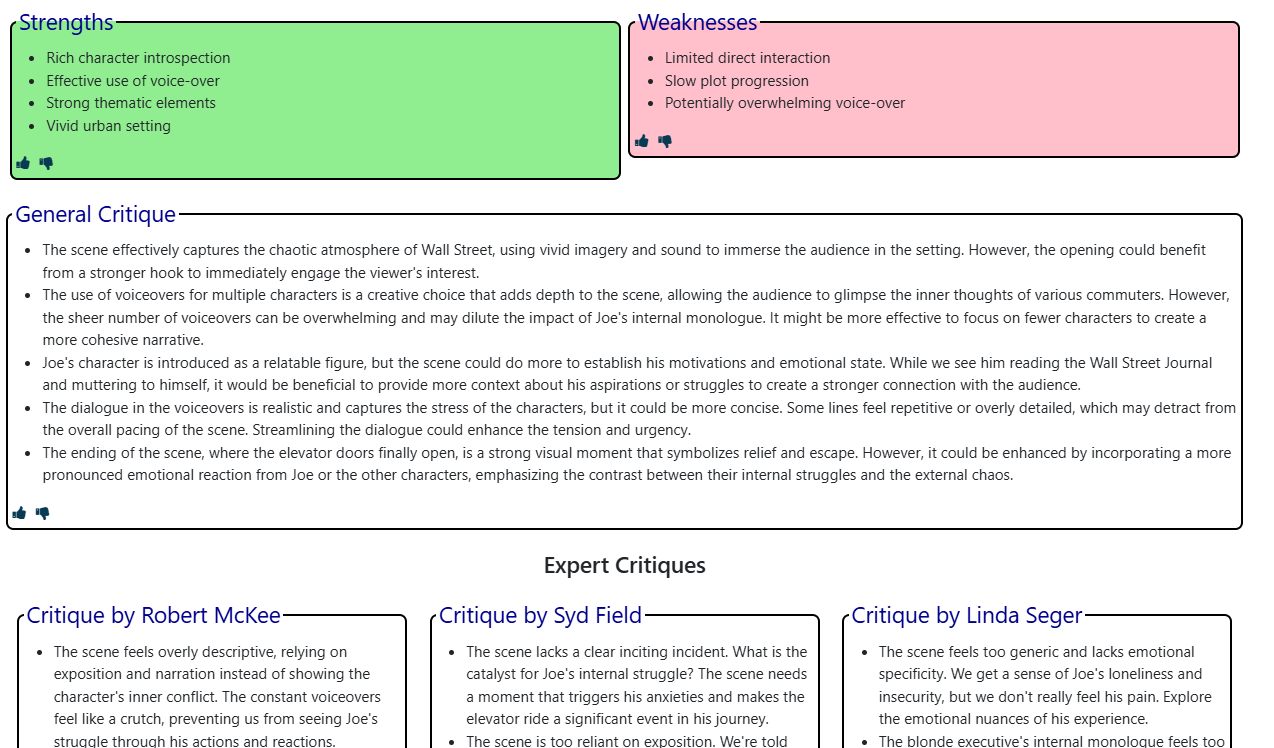
What are your weakest/strongest skills?
Is it conflict? Originality? Are you a conceptual writer and your concept and plot are amazing but characters and dialogue lame? We compare all criteria to the scripts in our vault and you see what percentile you fall in.
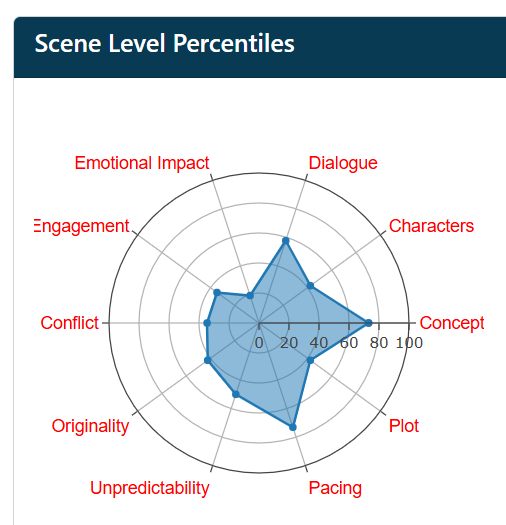
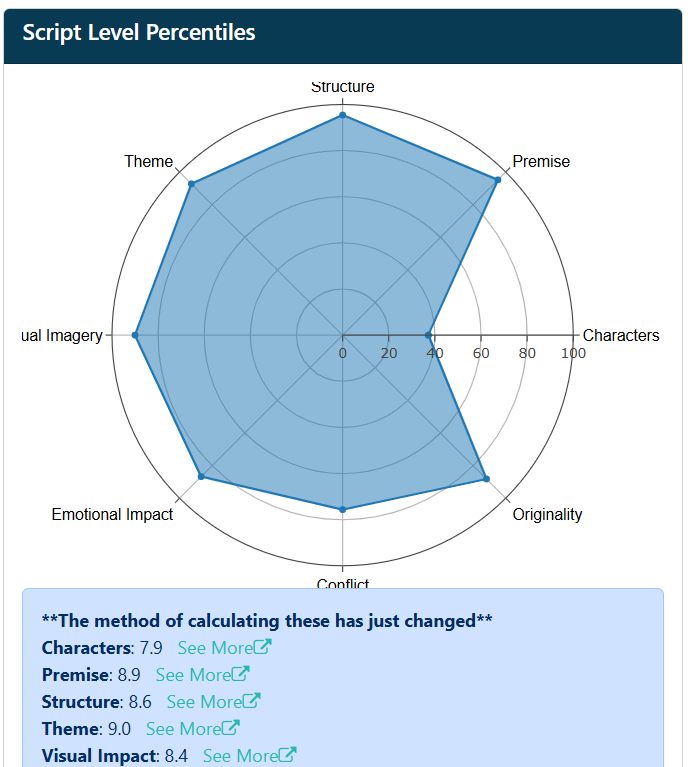
What emotional journey have you created?
.
Check out Coco's Analysis and scroll down to see it in action.
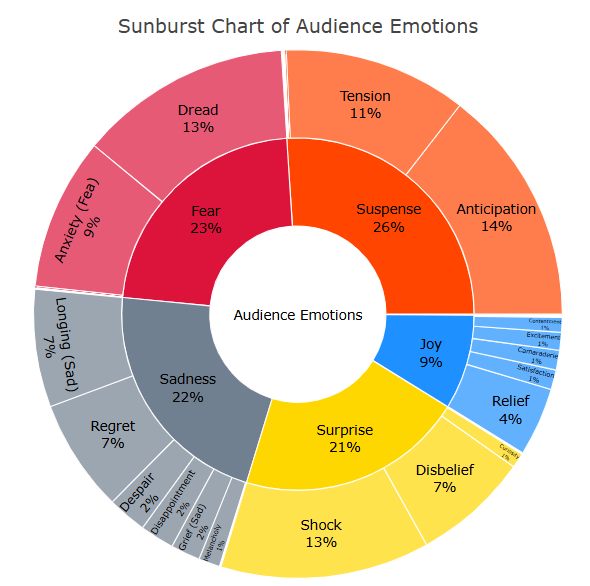

Hear From Experts...
Industry veterans tell their success stories with ScriptReader.ai
Upload Your Script View features"If you can't make your script at least 30% better with ScriptReader.ai, you're not doing your job as a writer. In bang for the buck, there's nothing even close."
"Script AI is a brilliant use of AI for script writing. It's a terrific resource for script writers, and for those who have to evaluate scripts."
